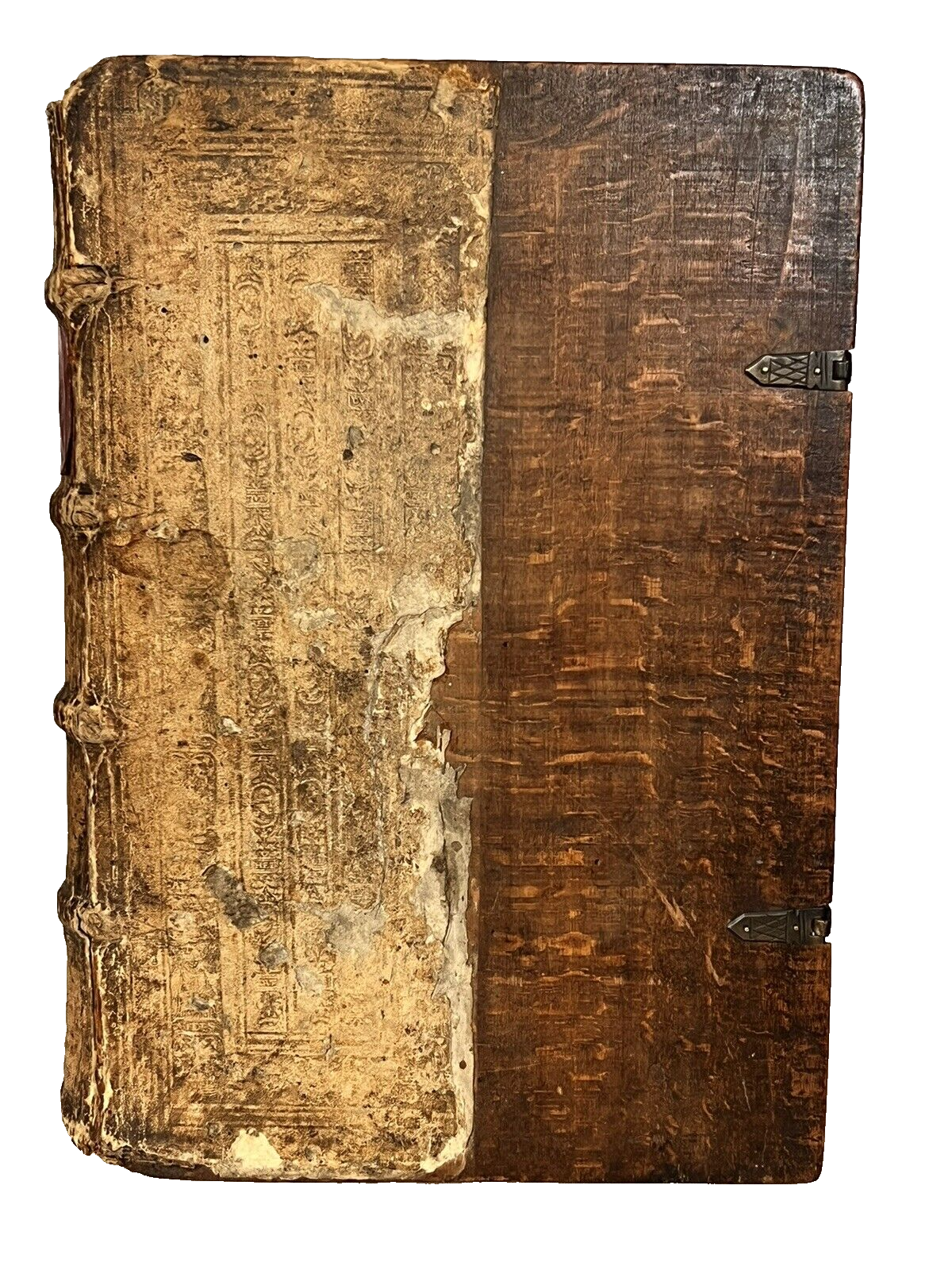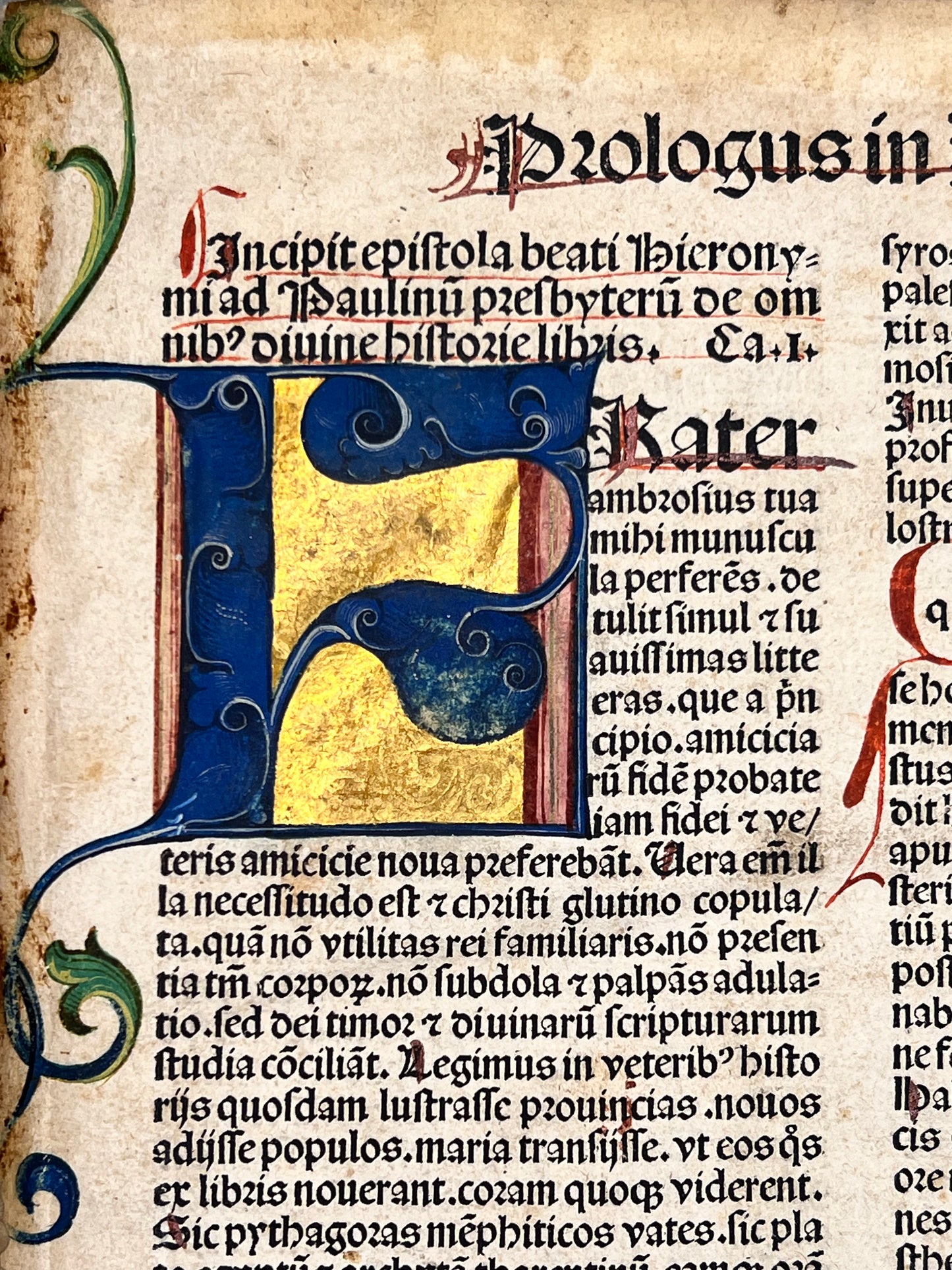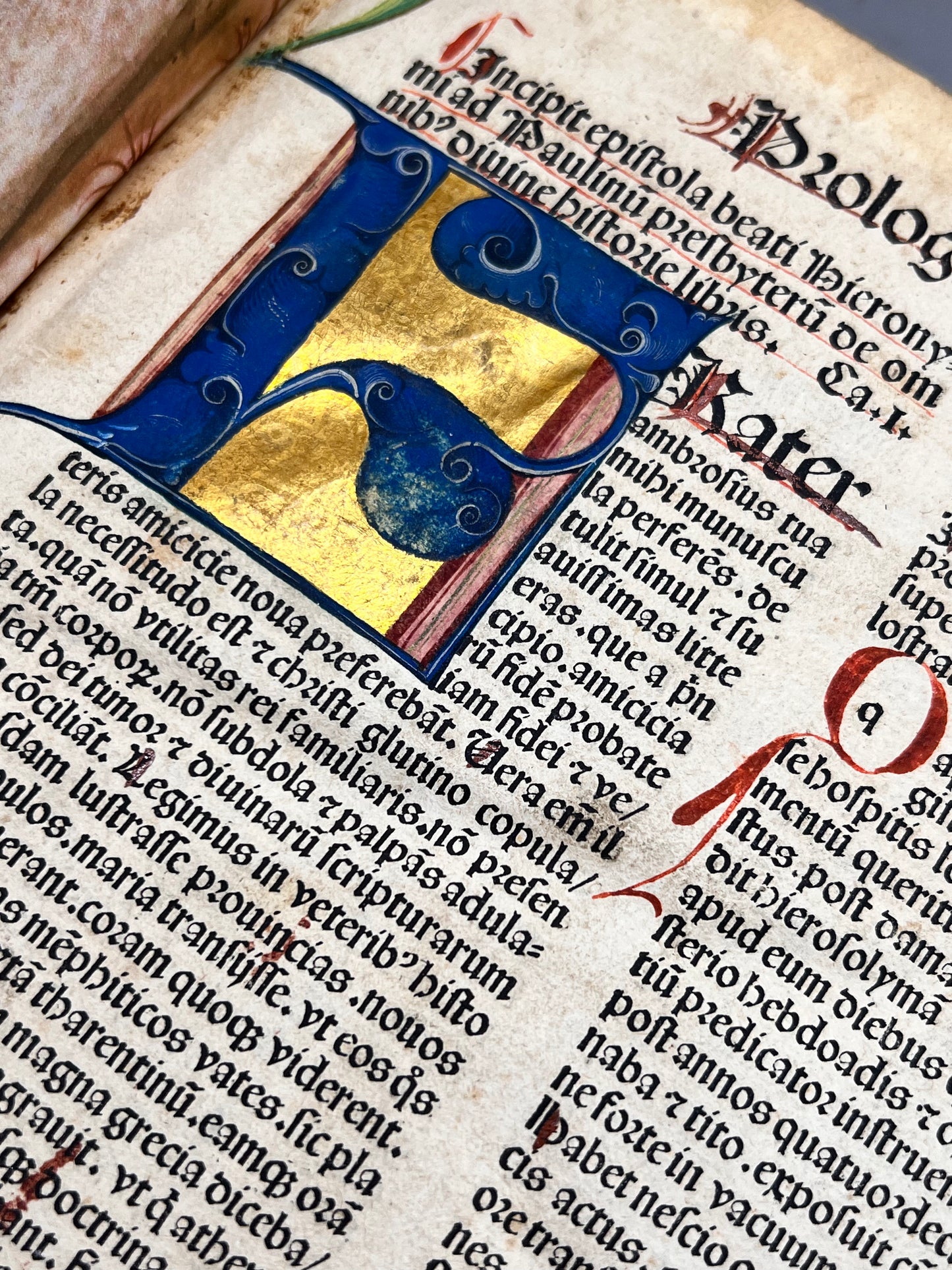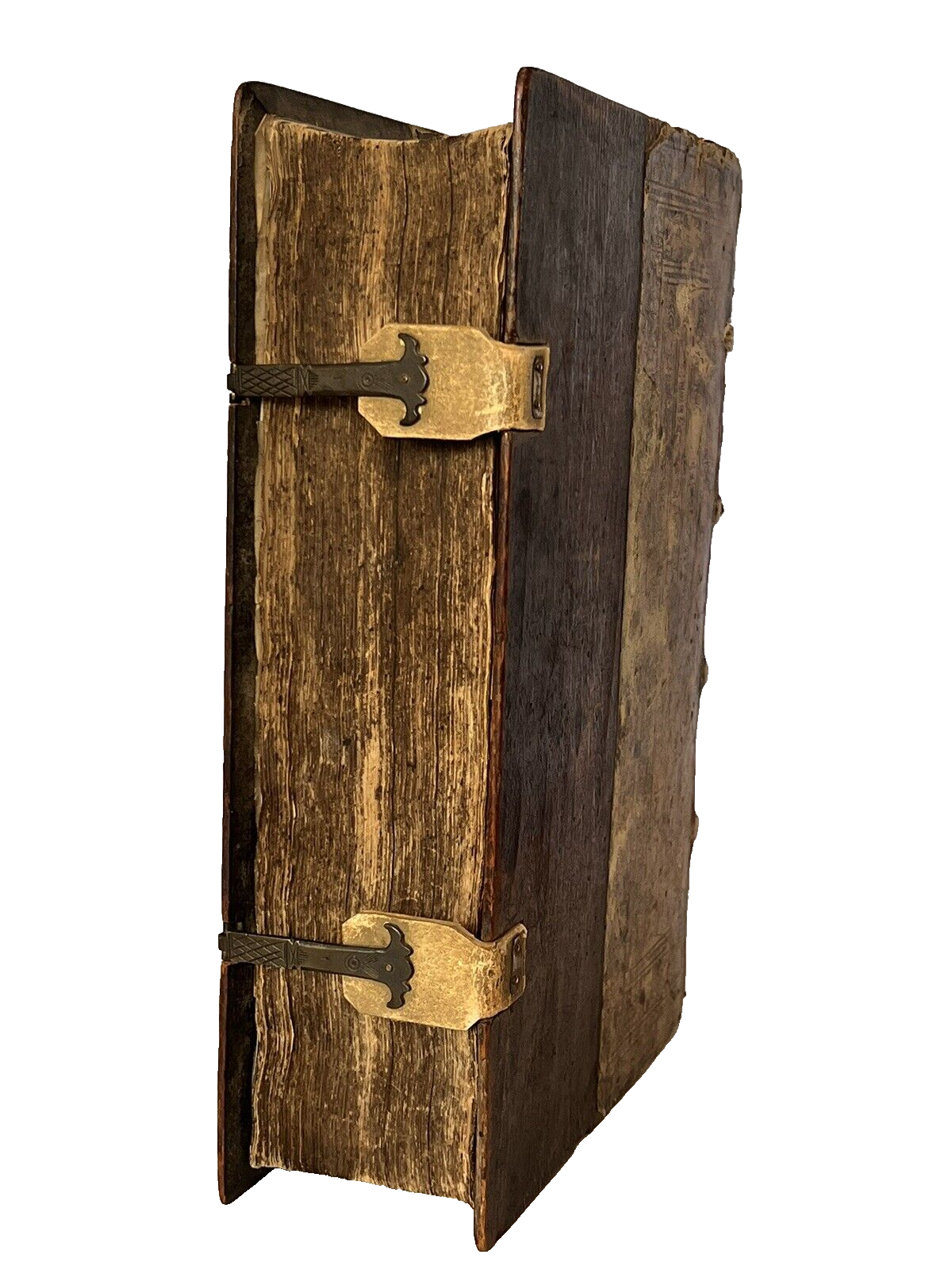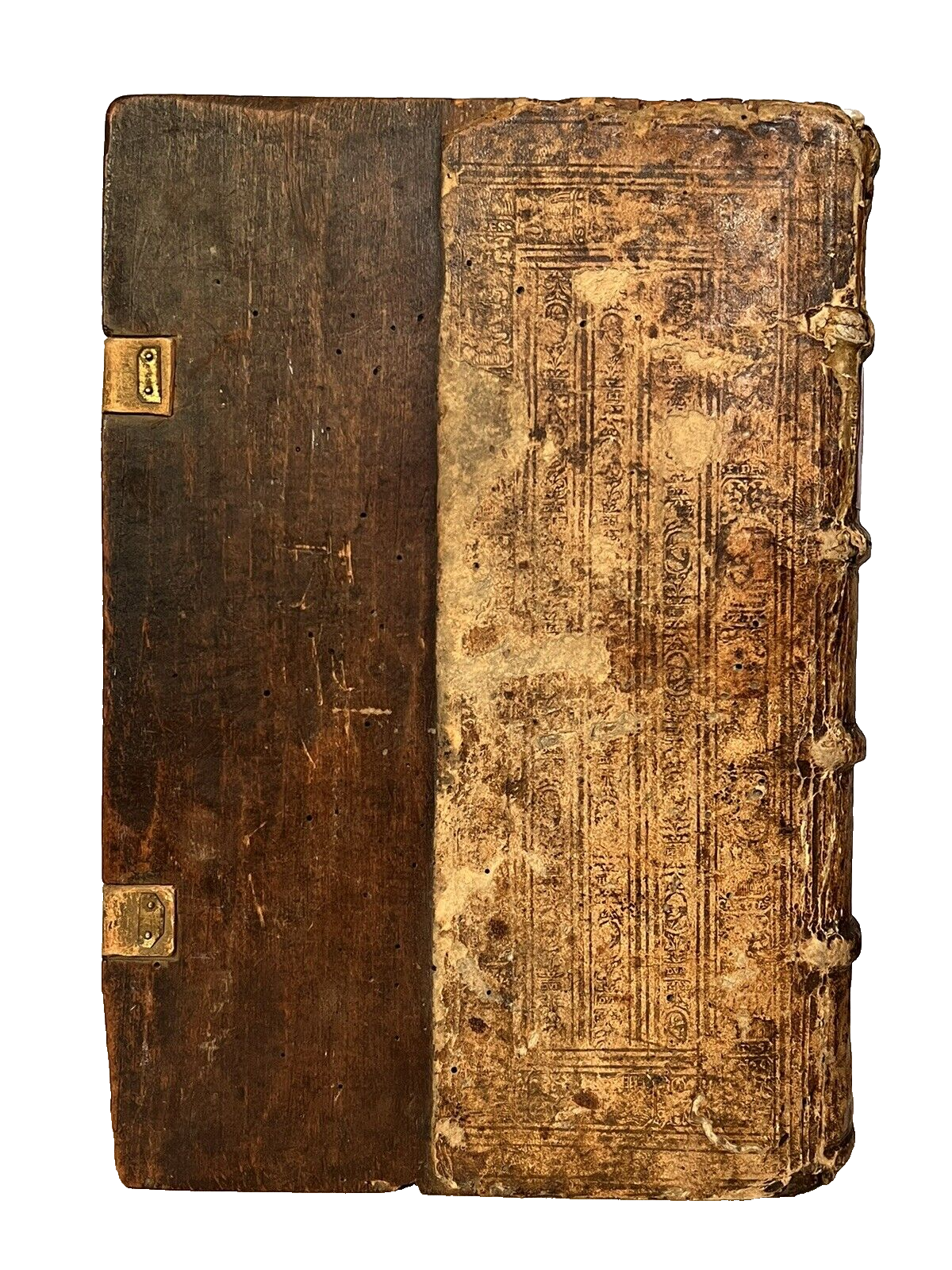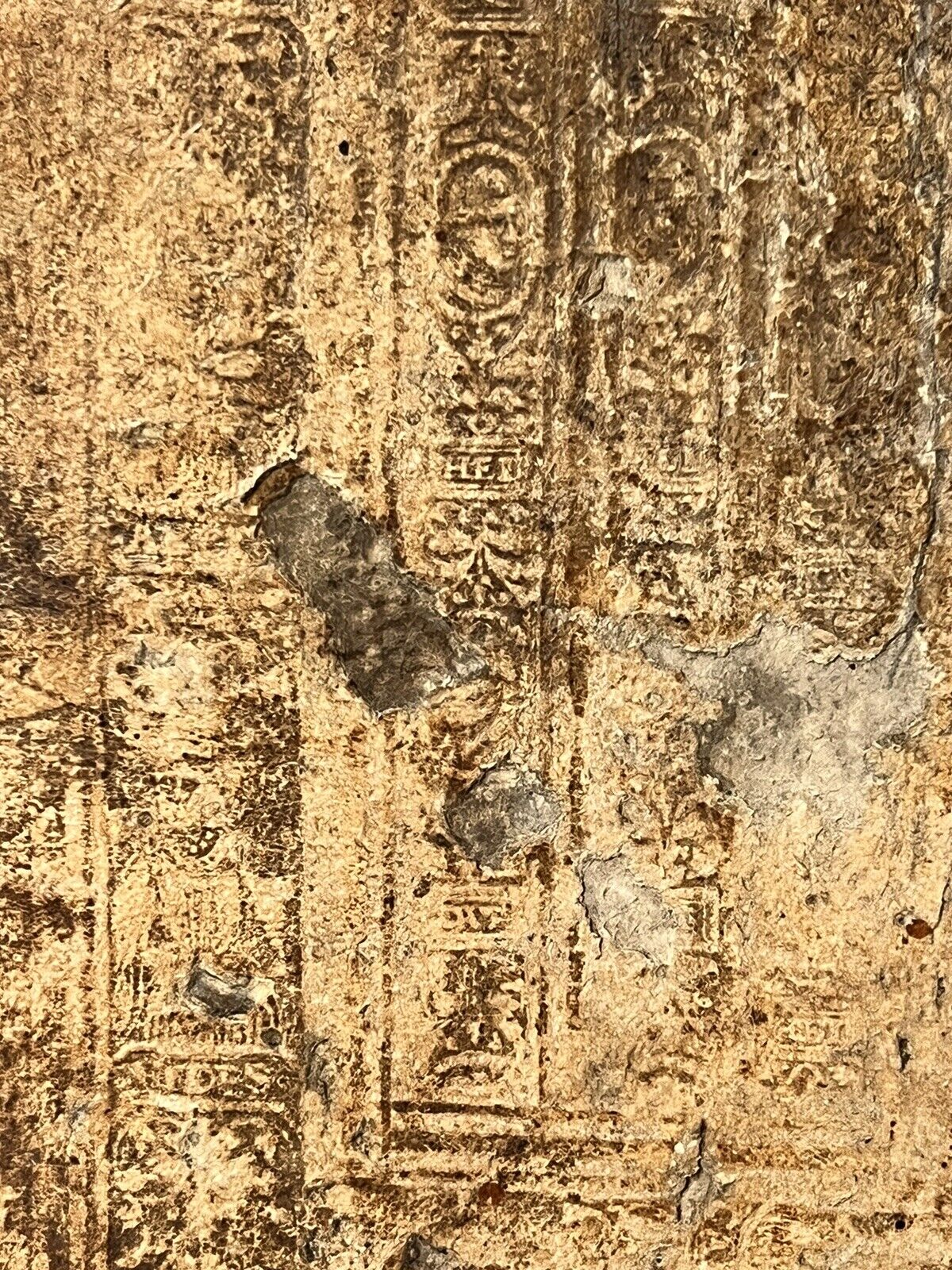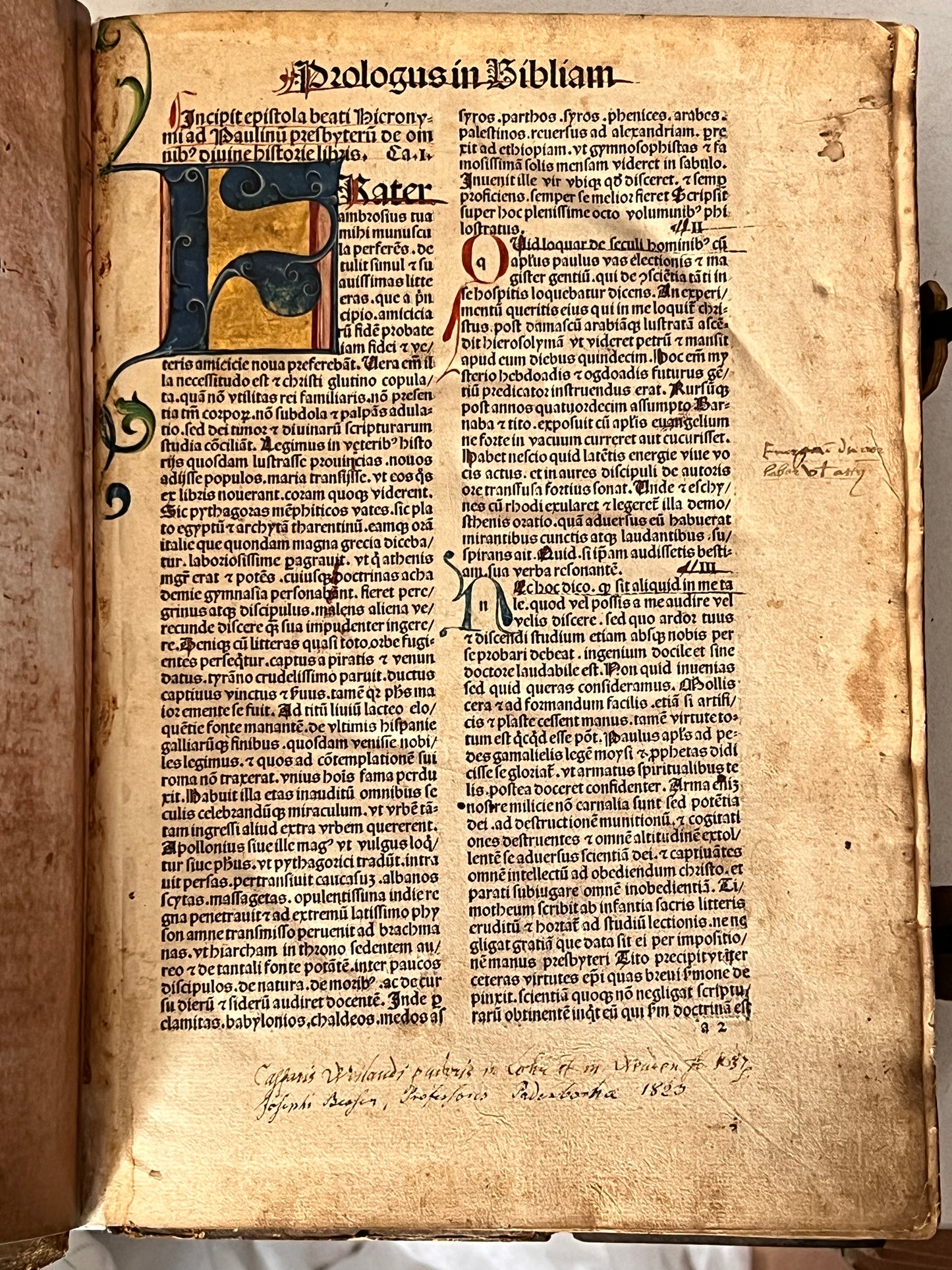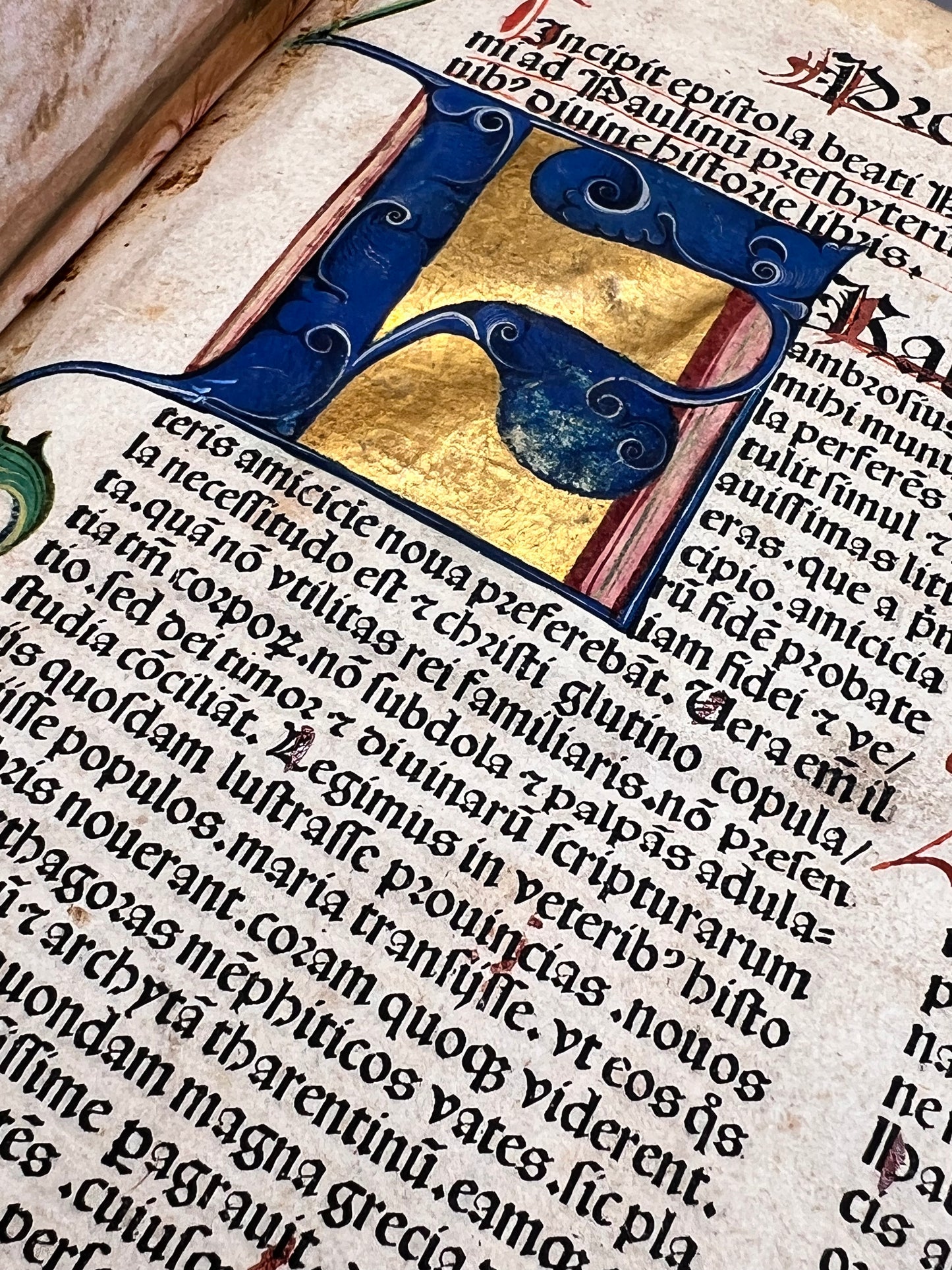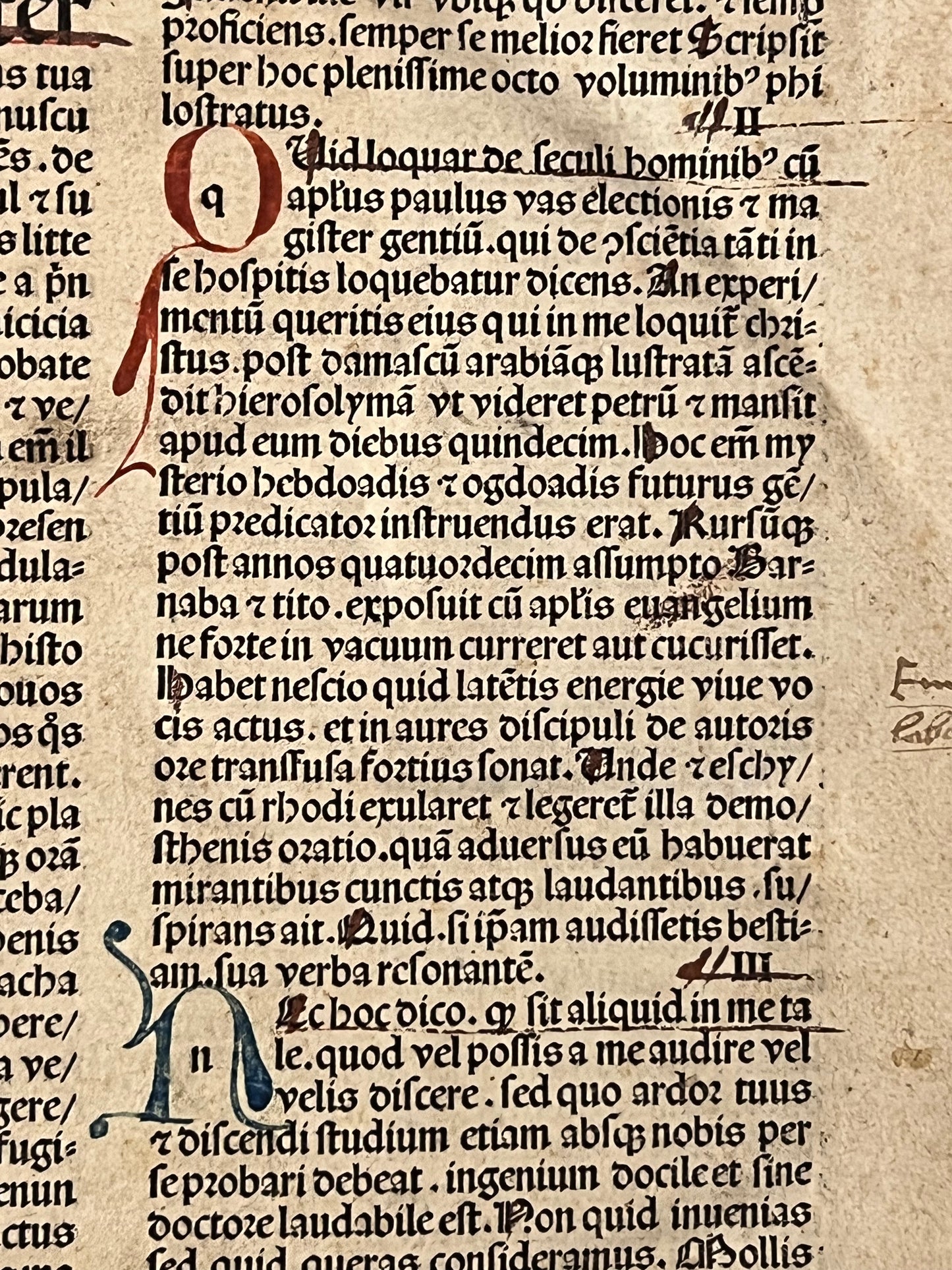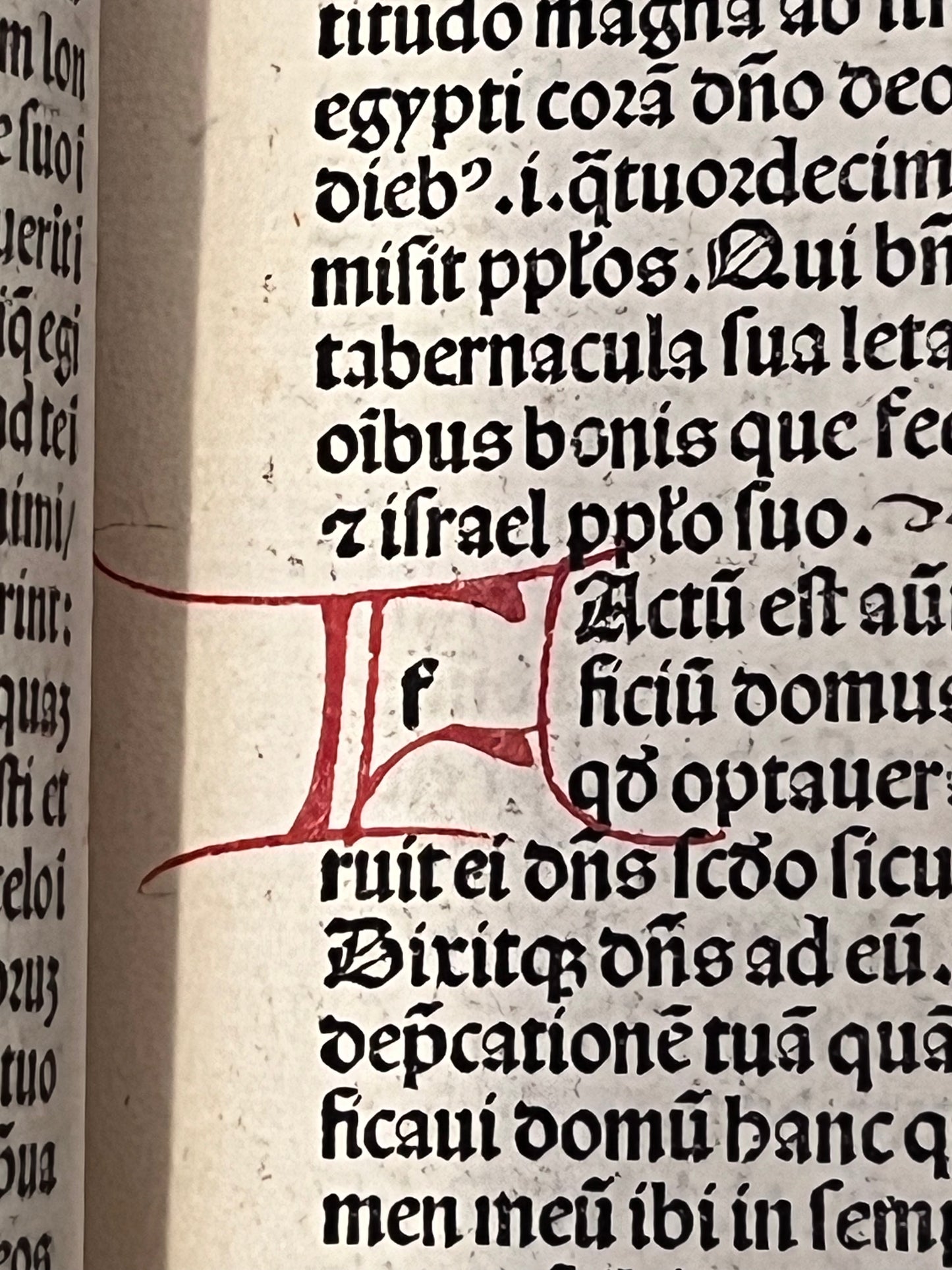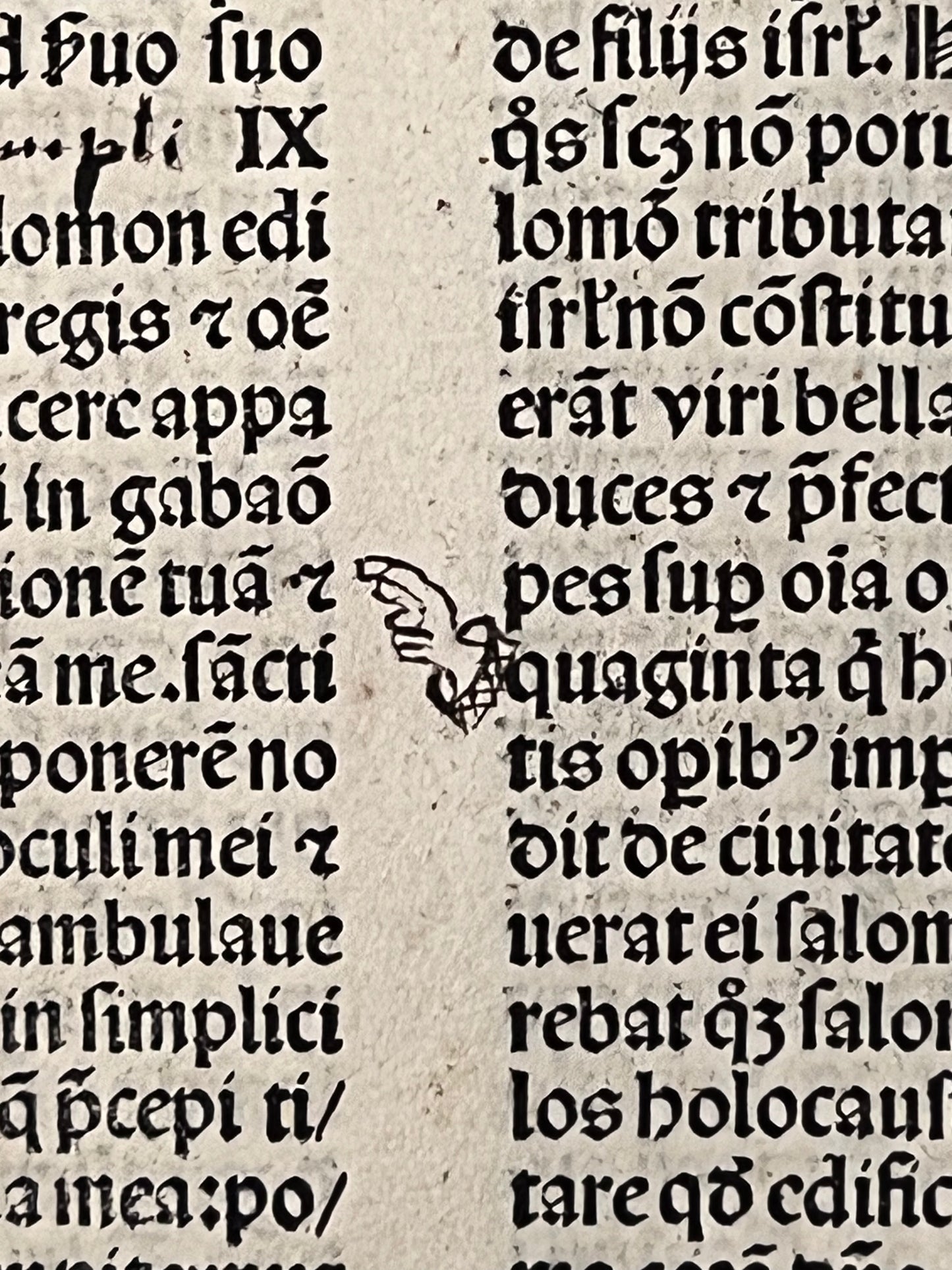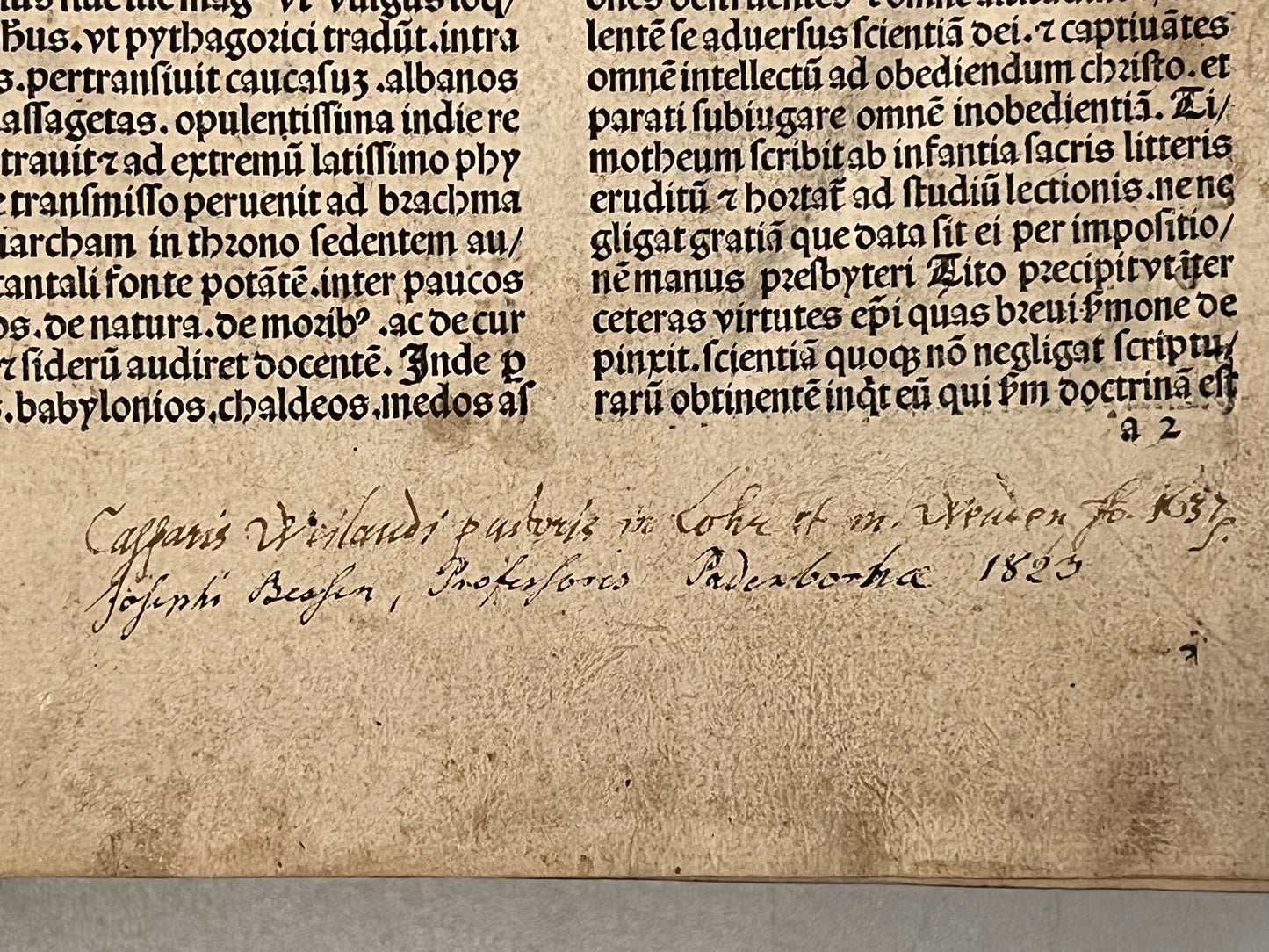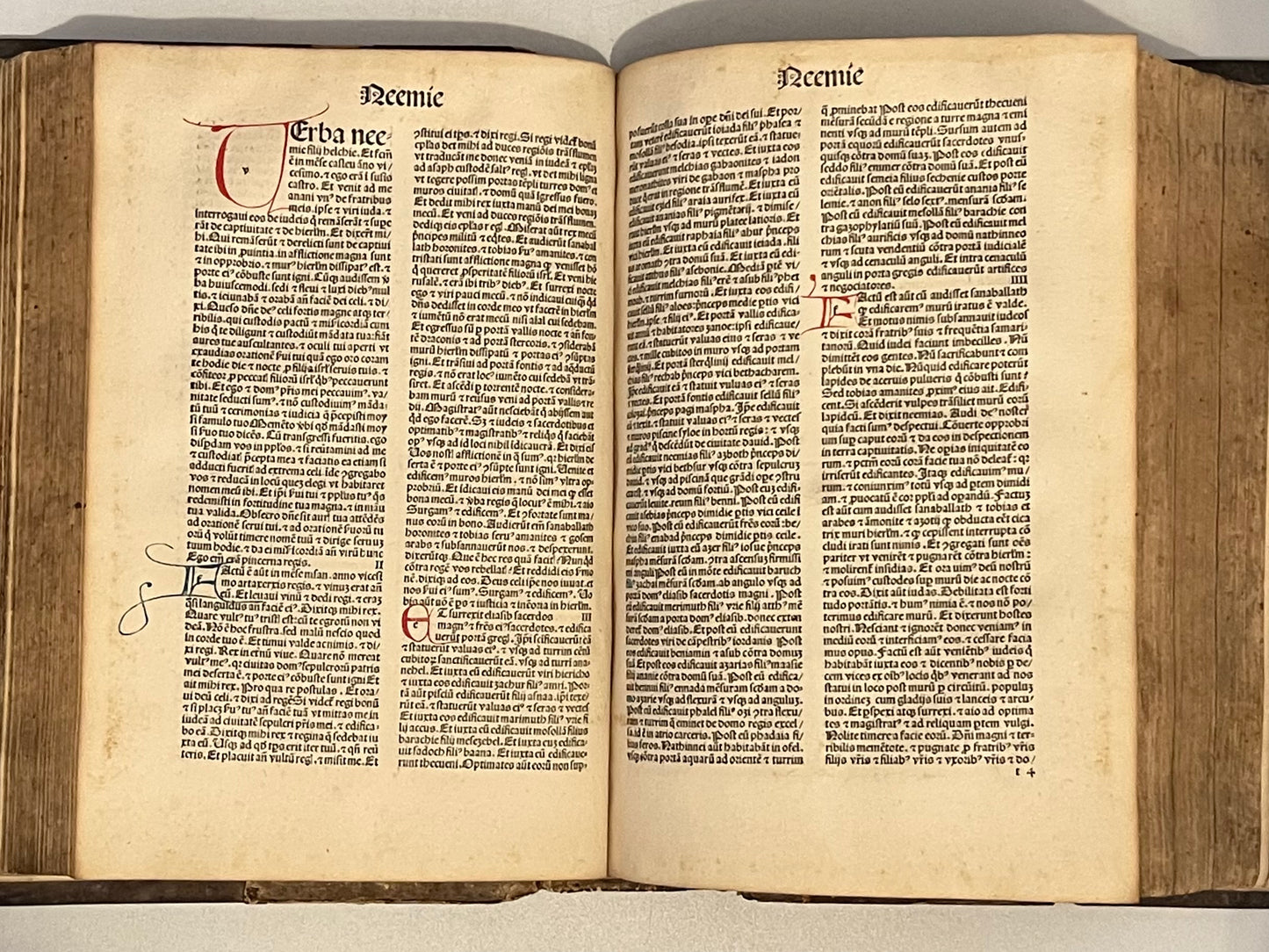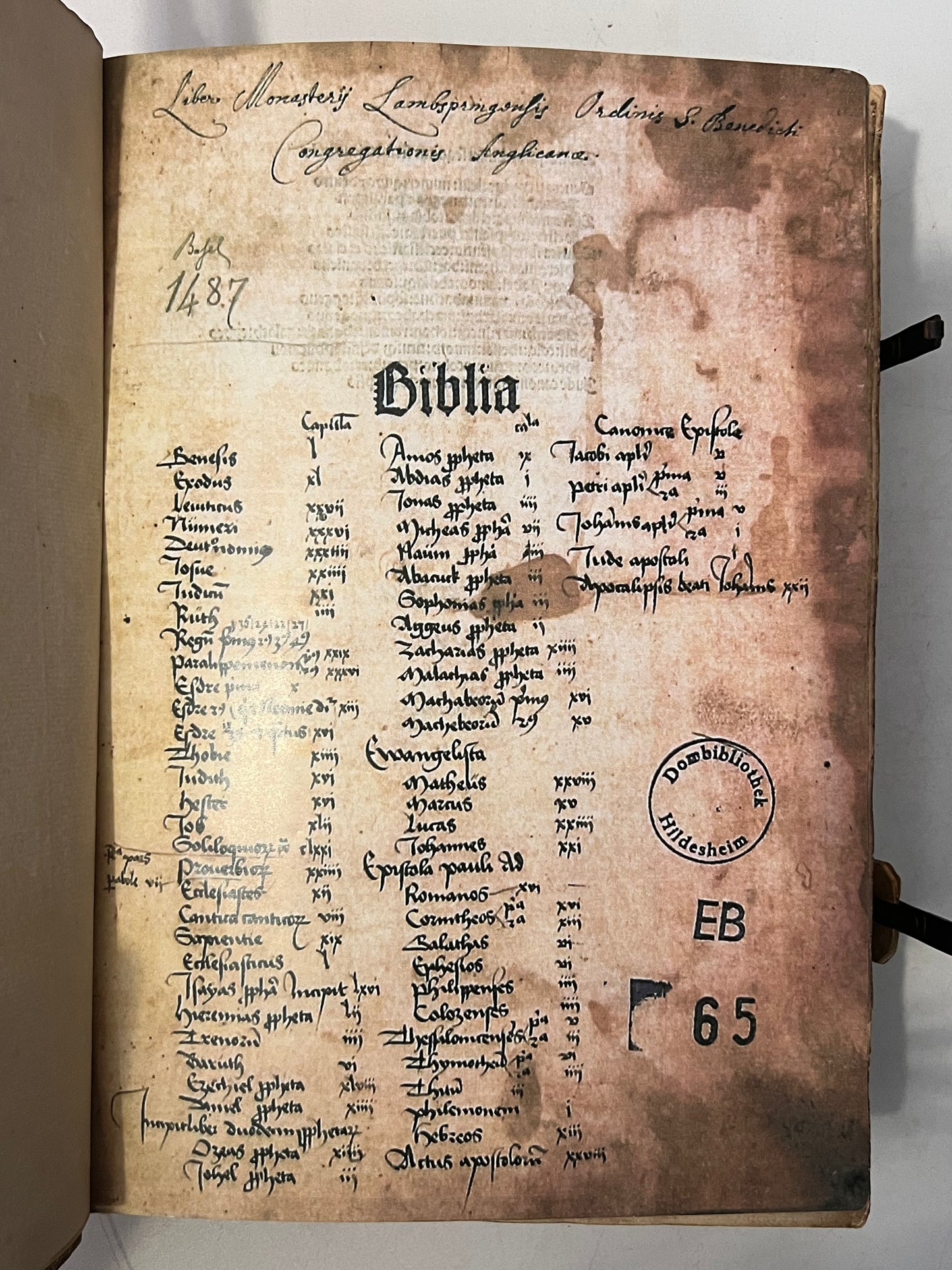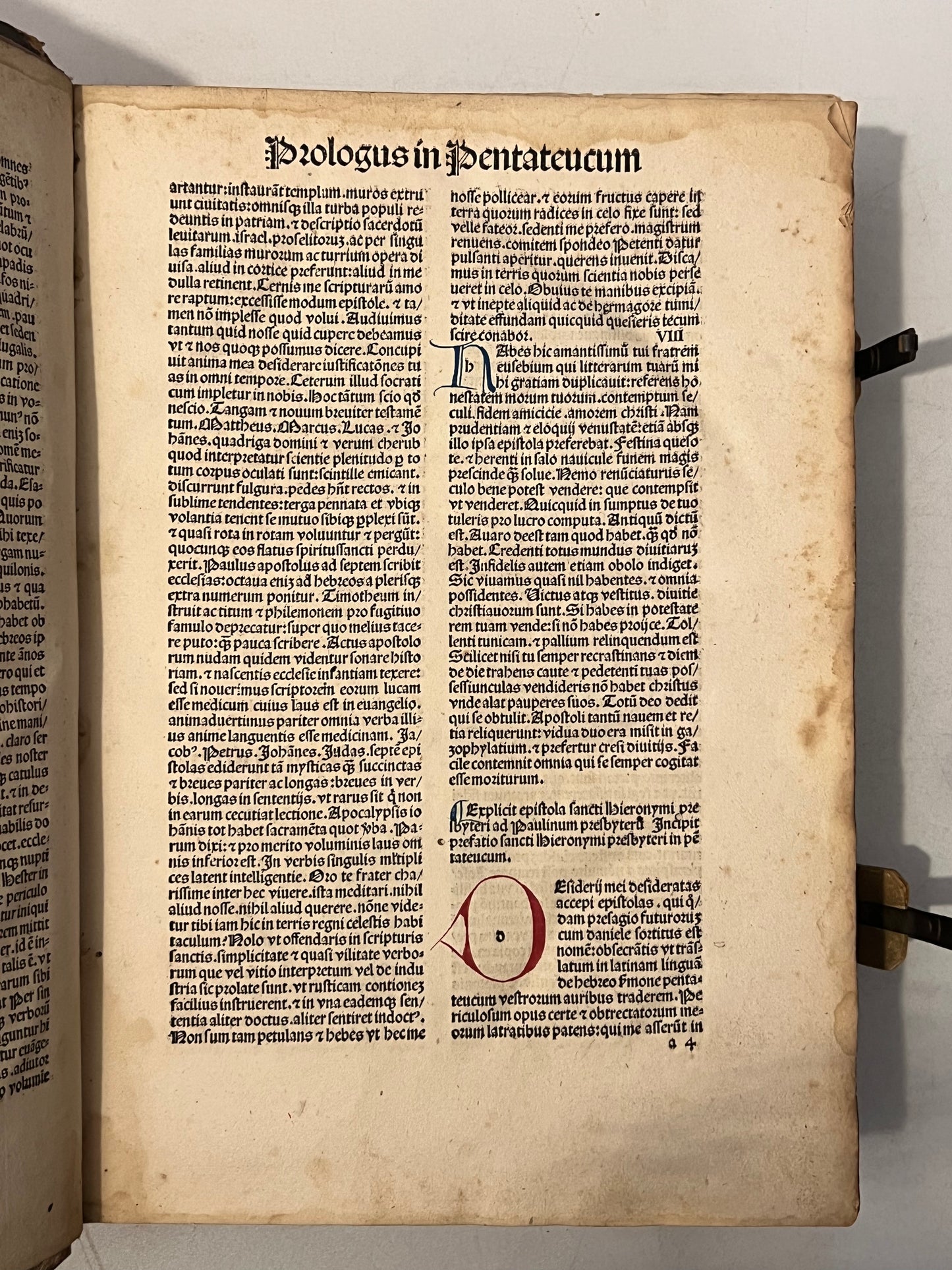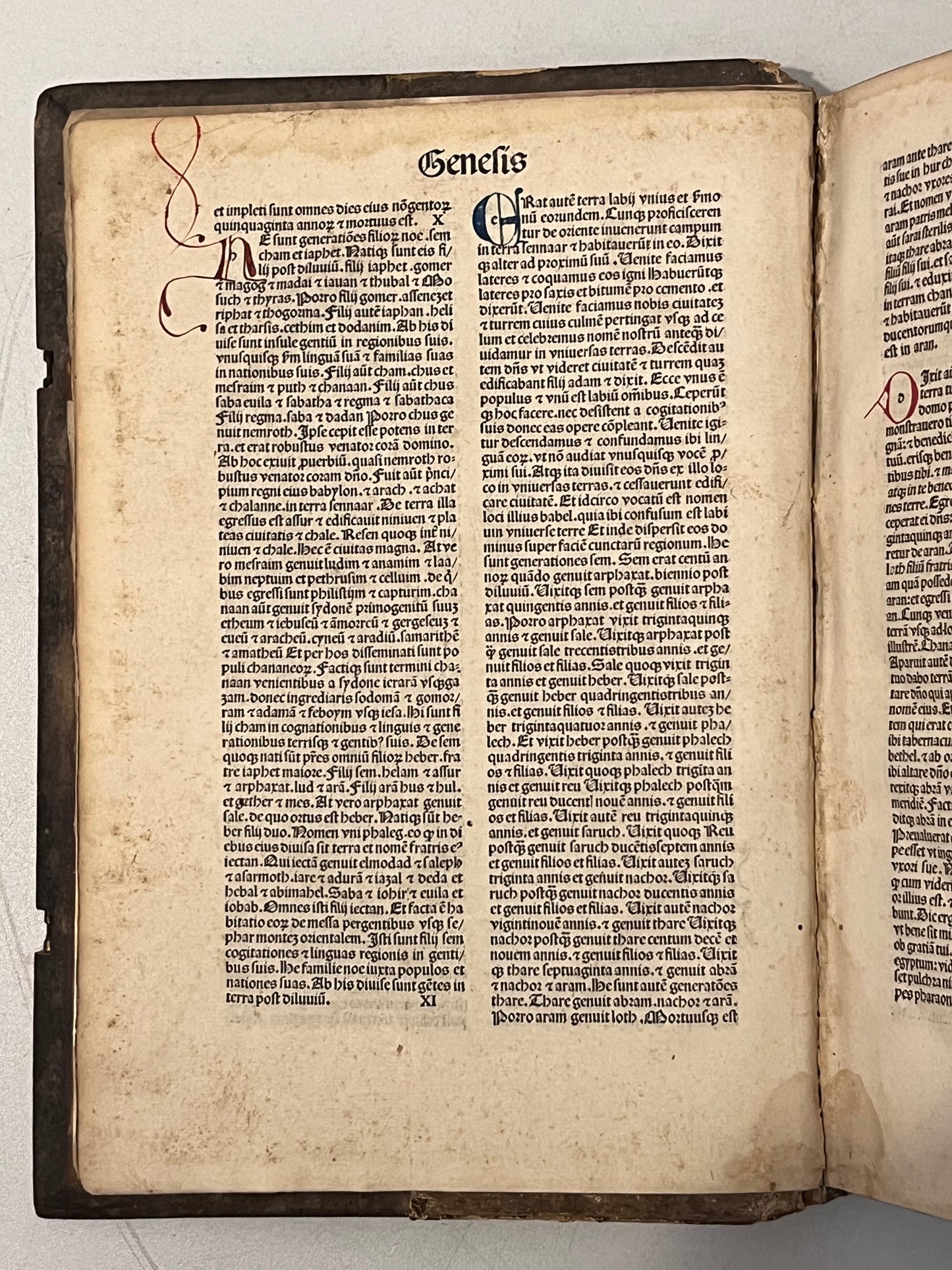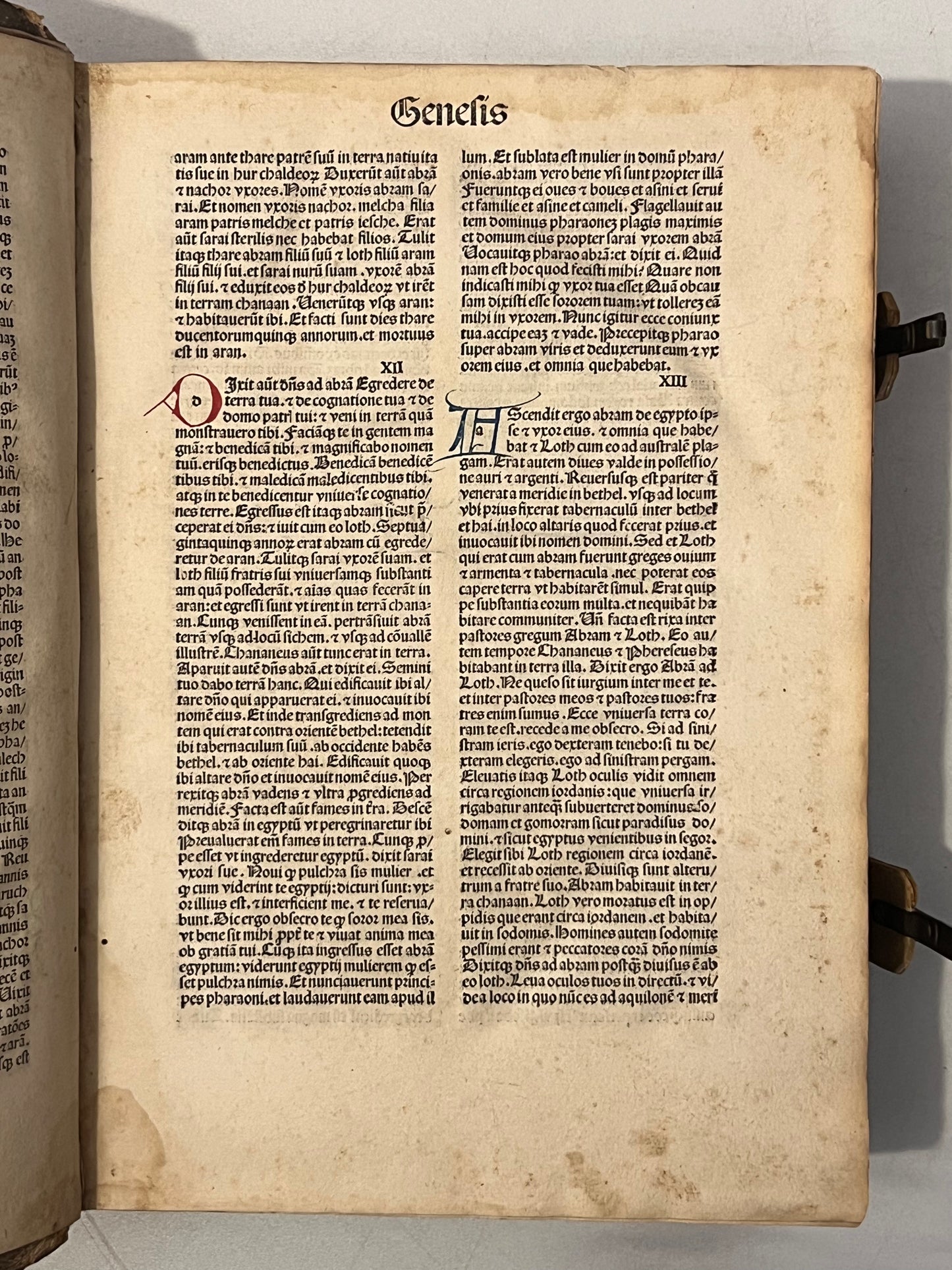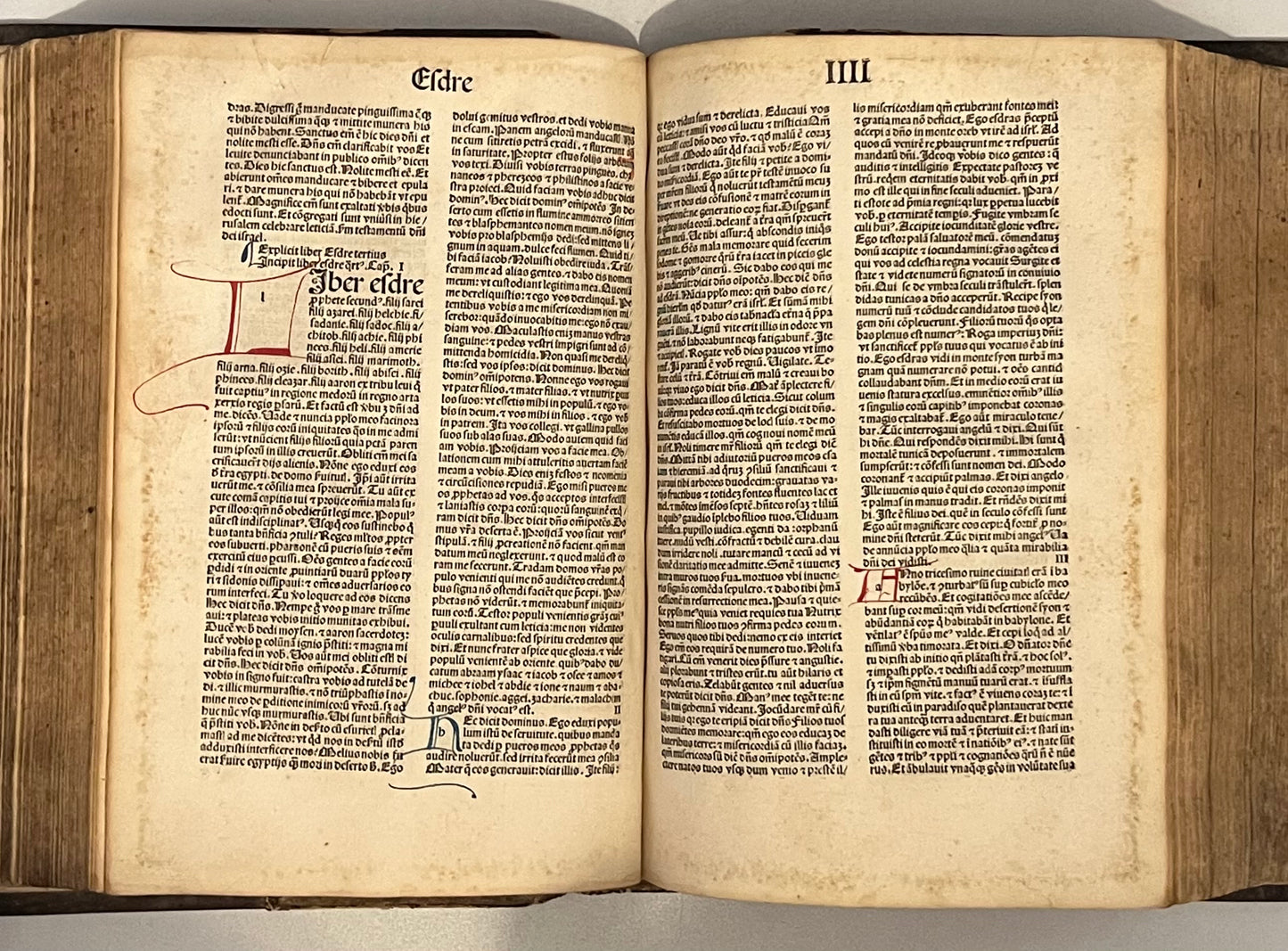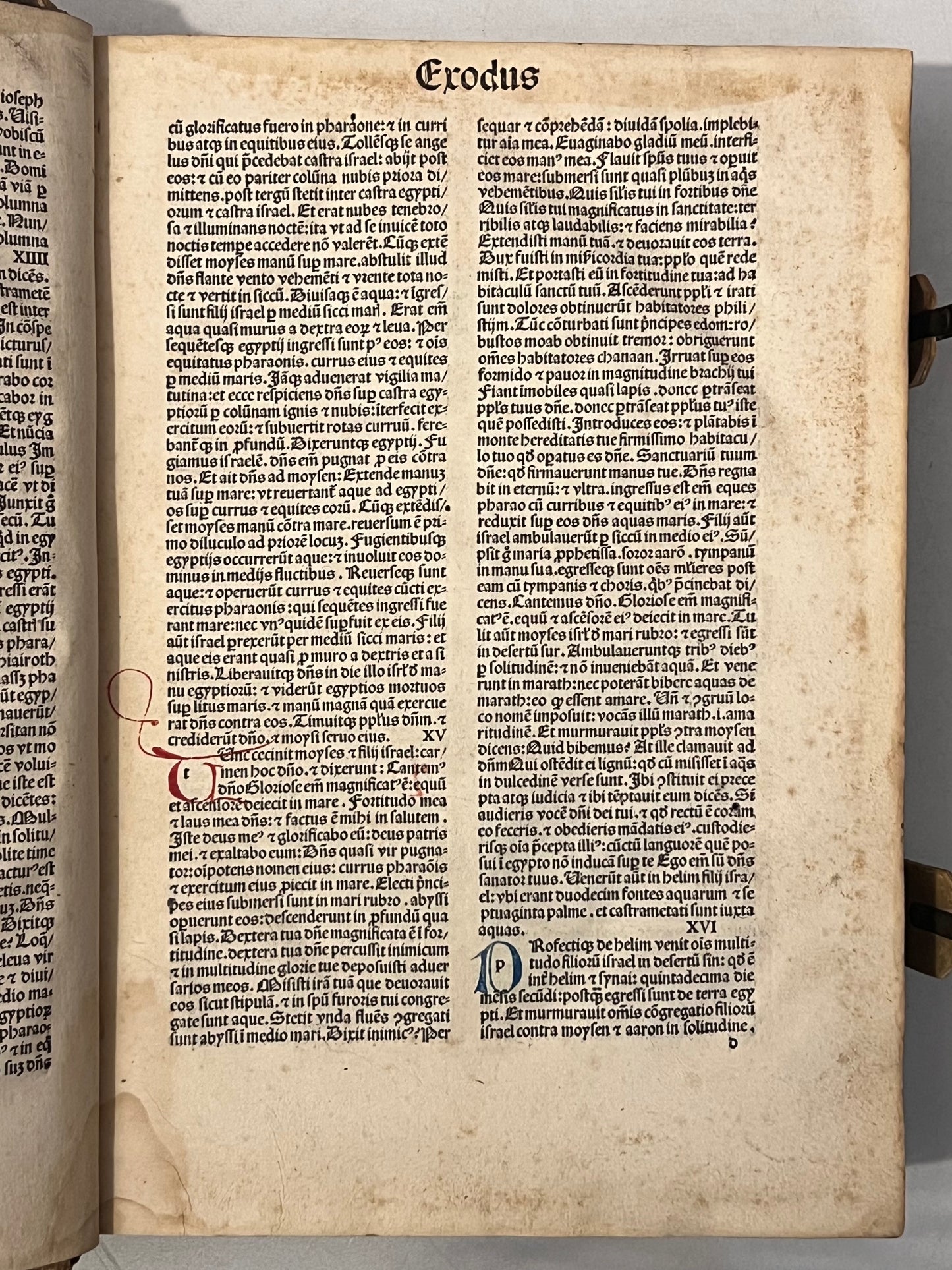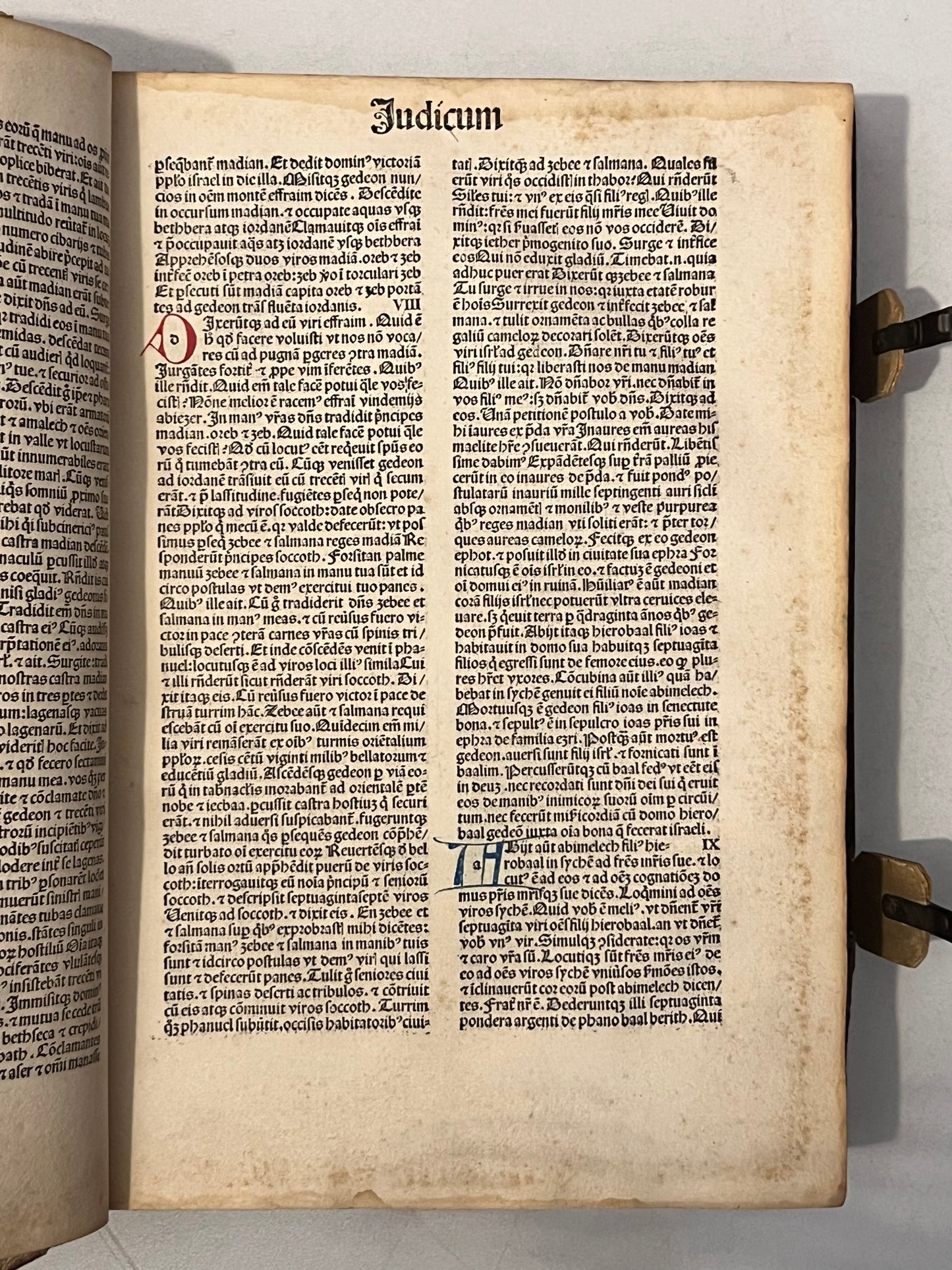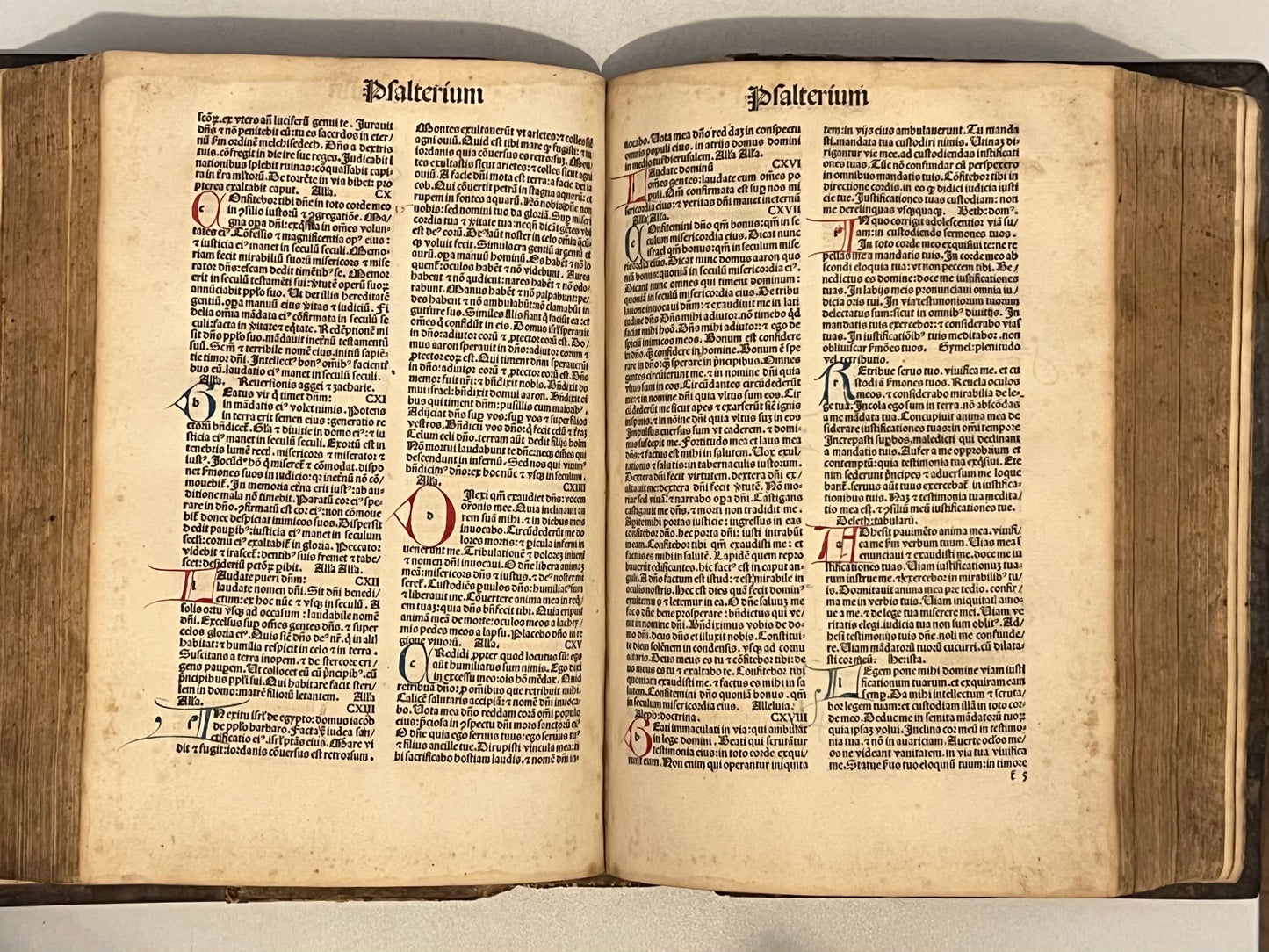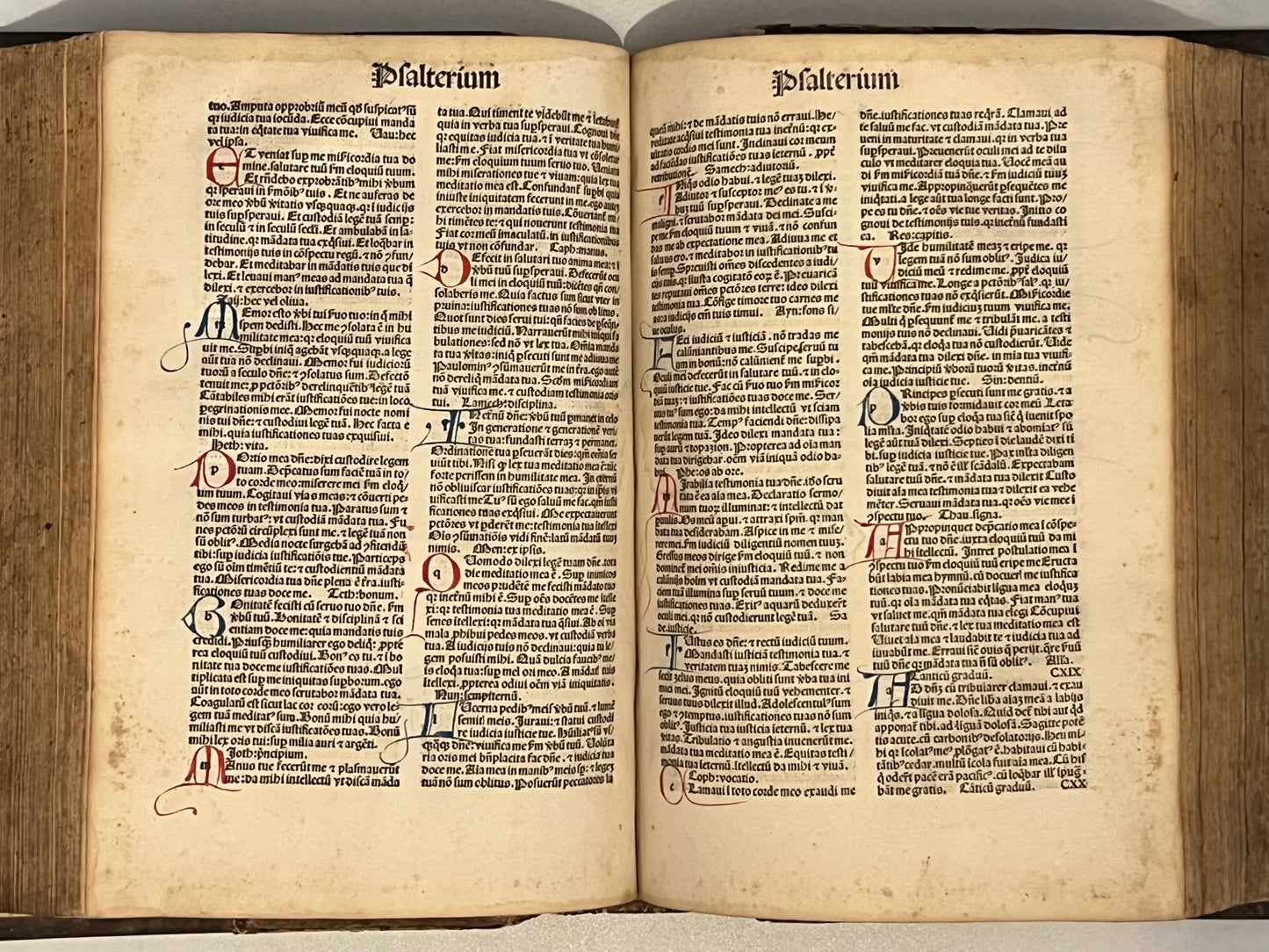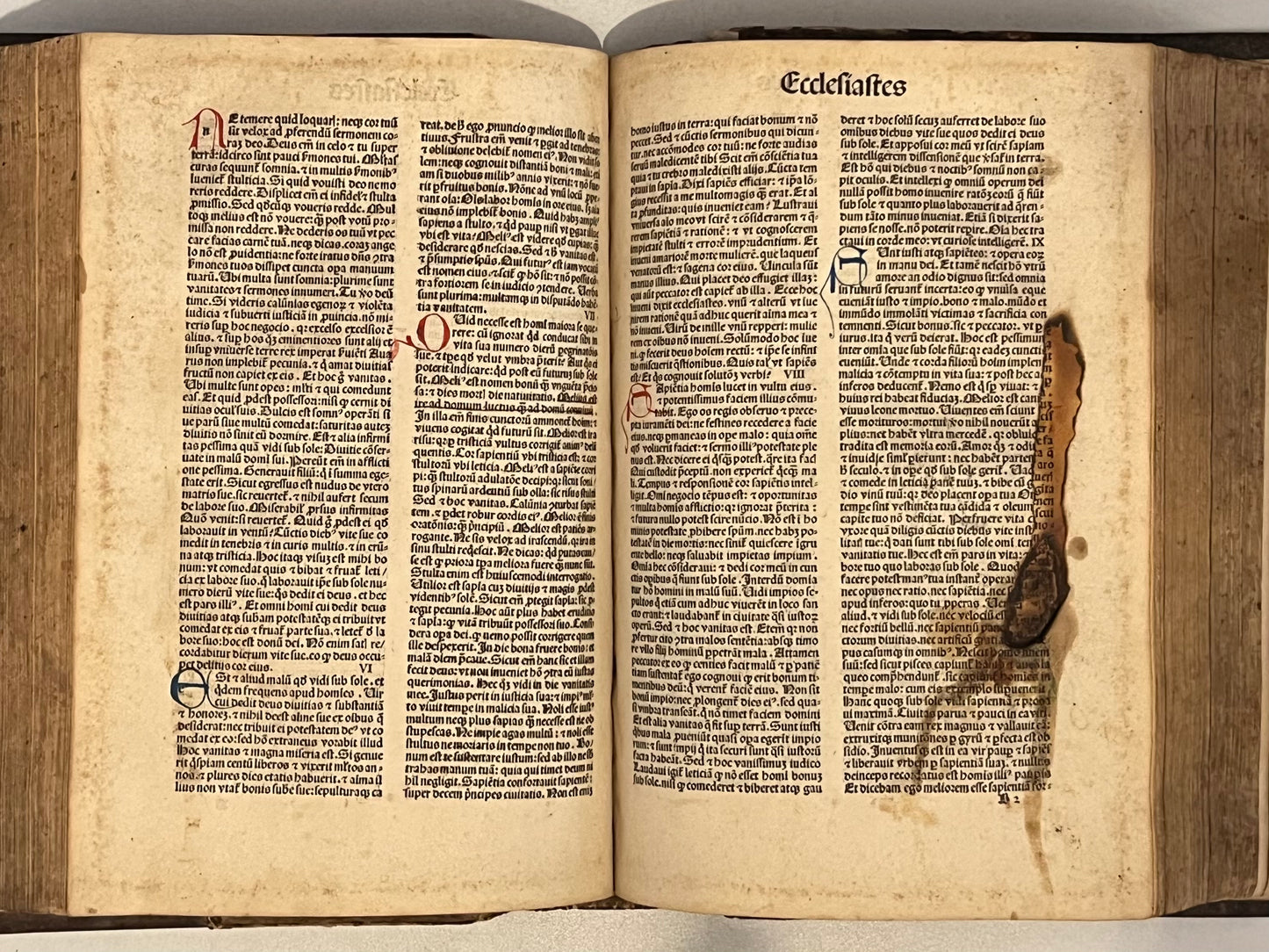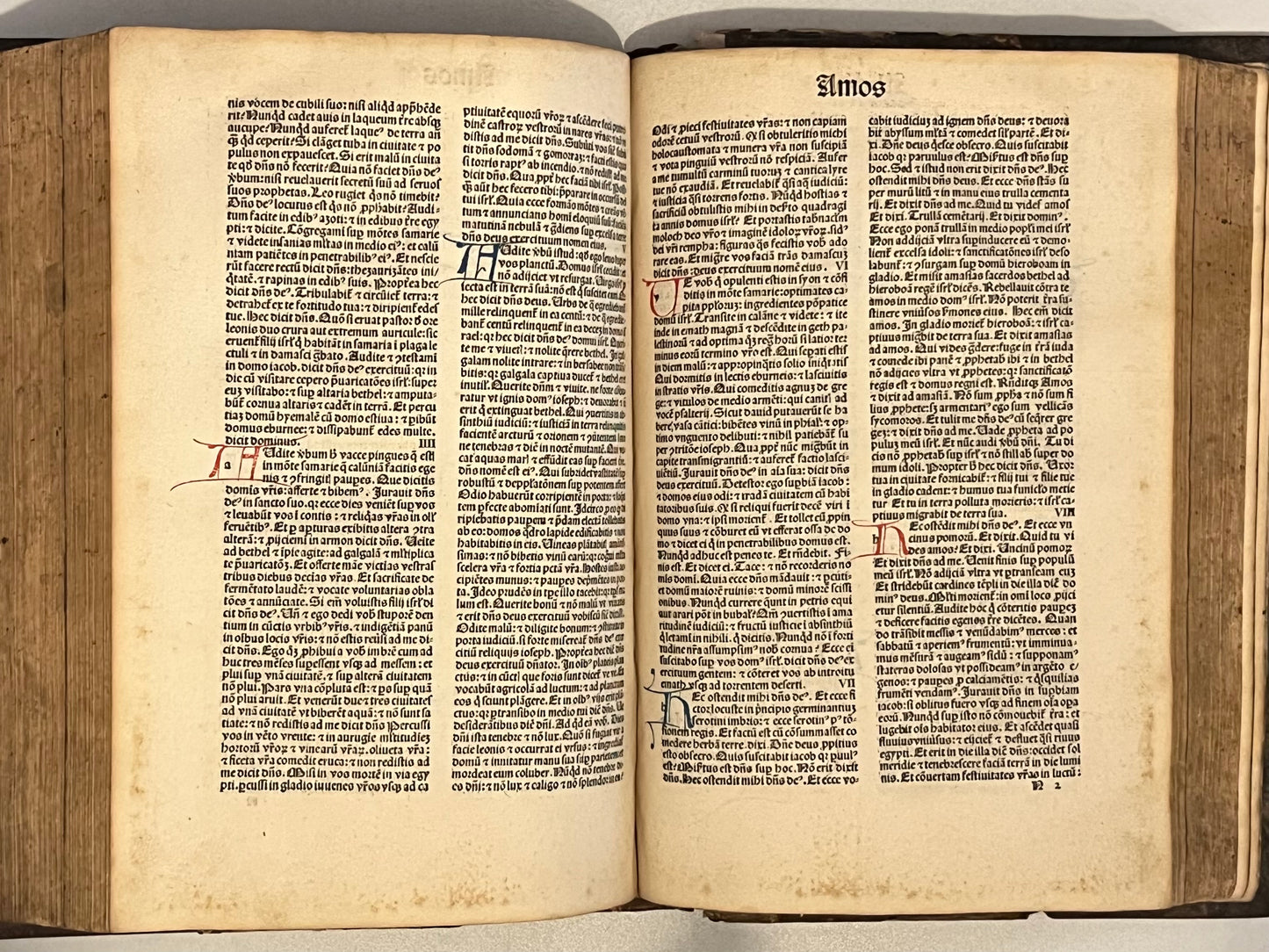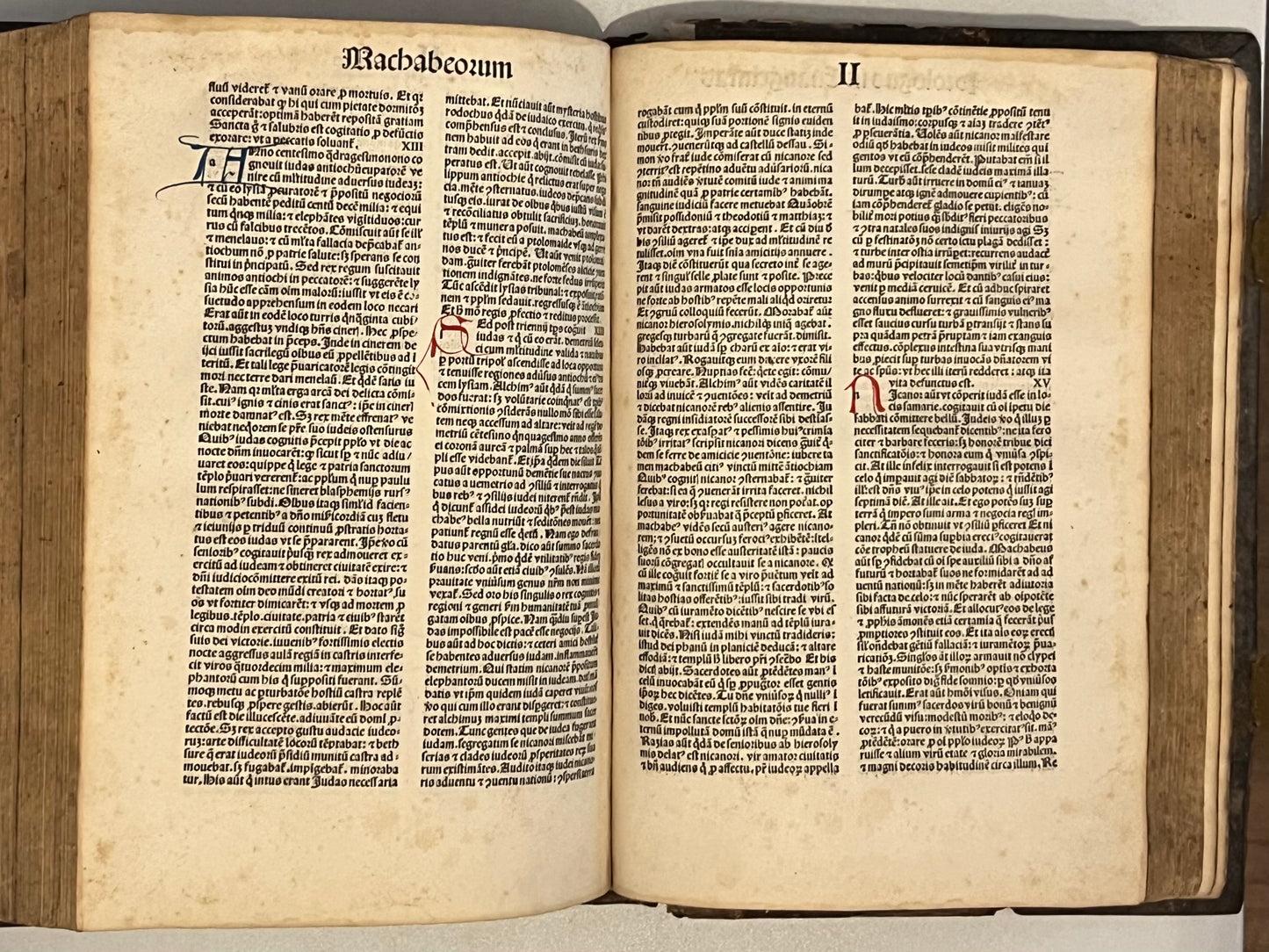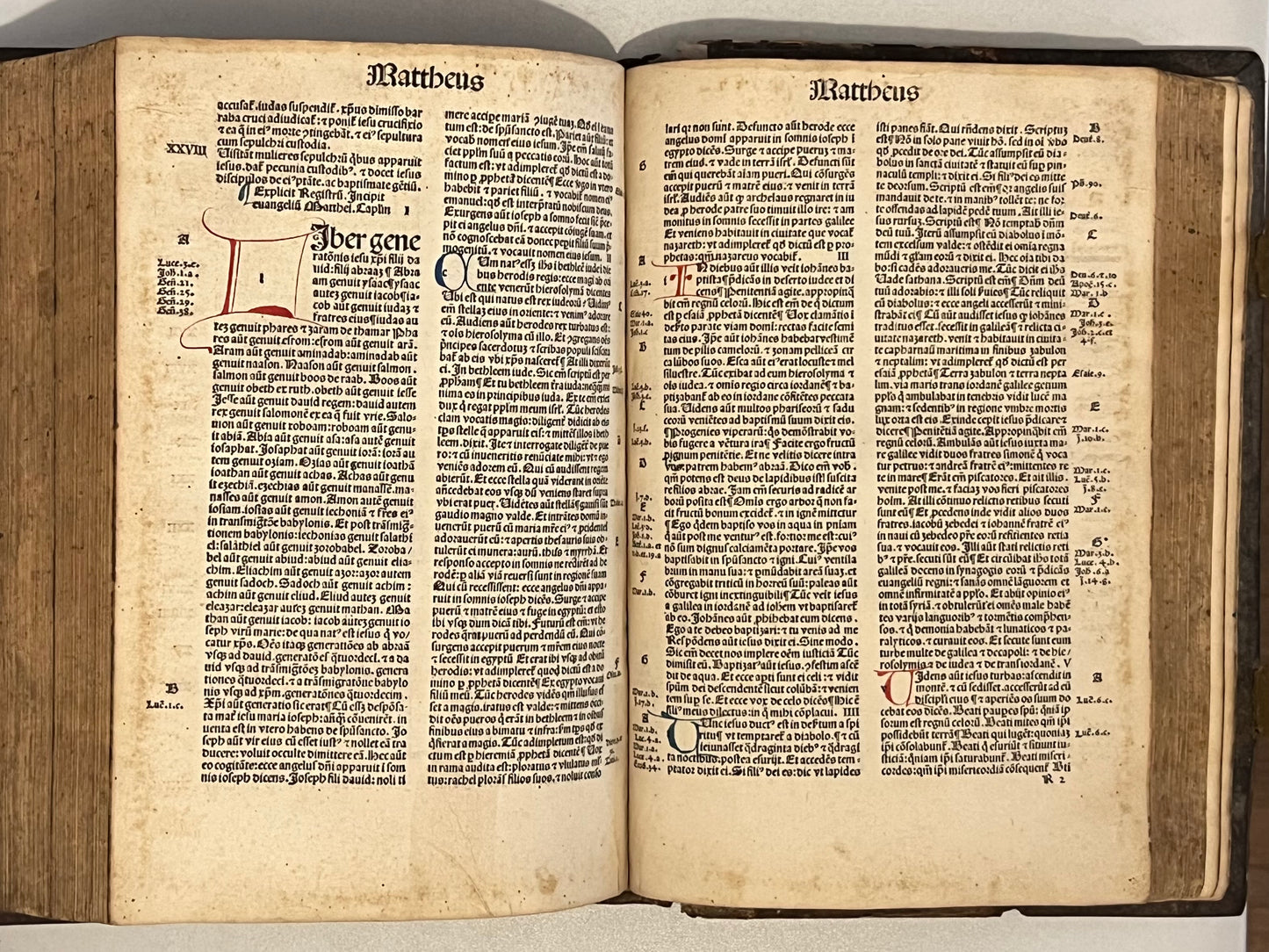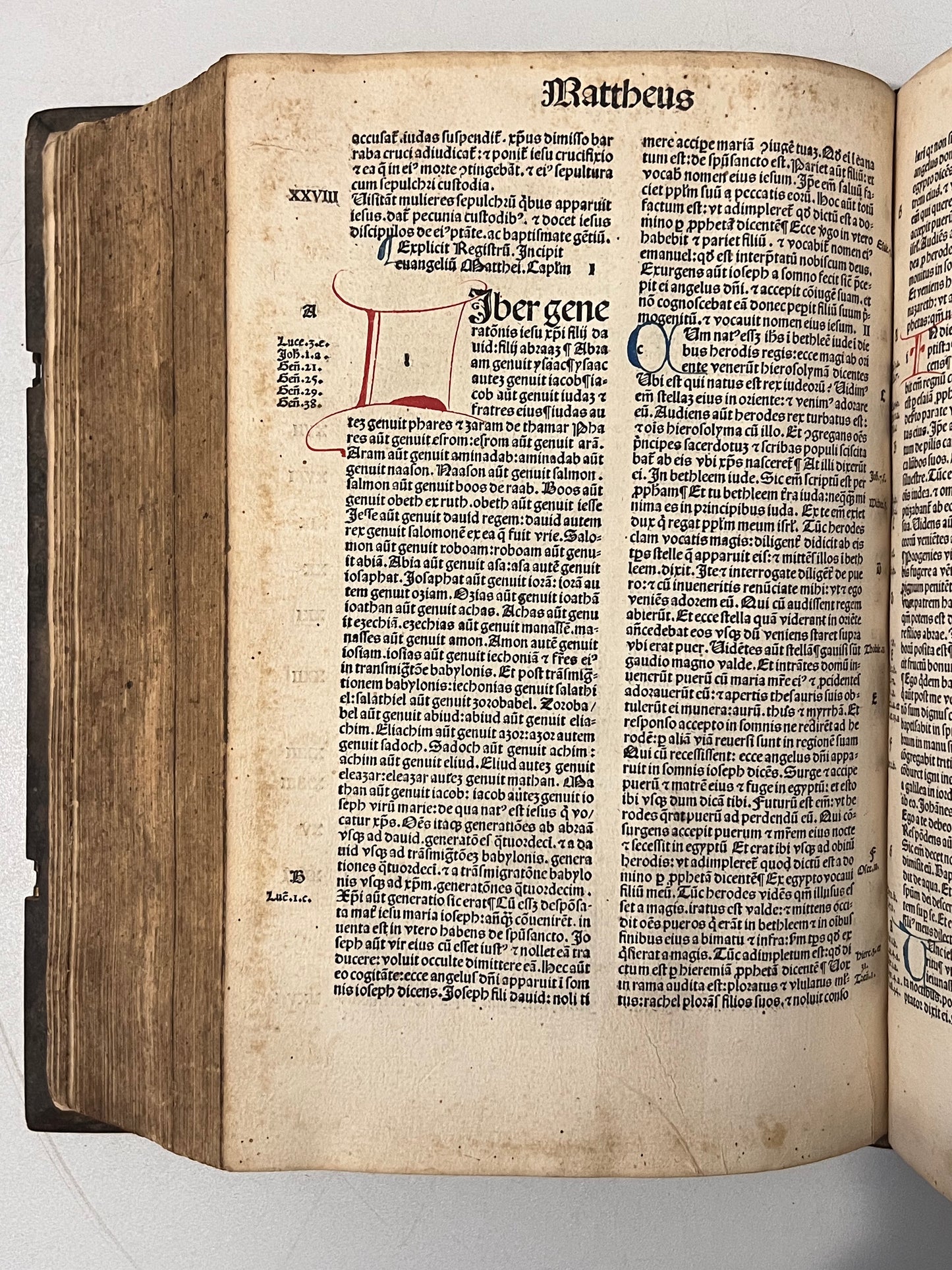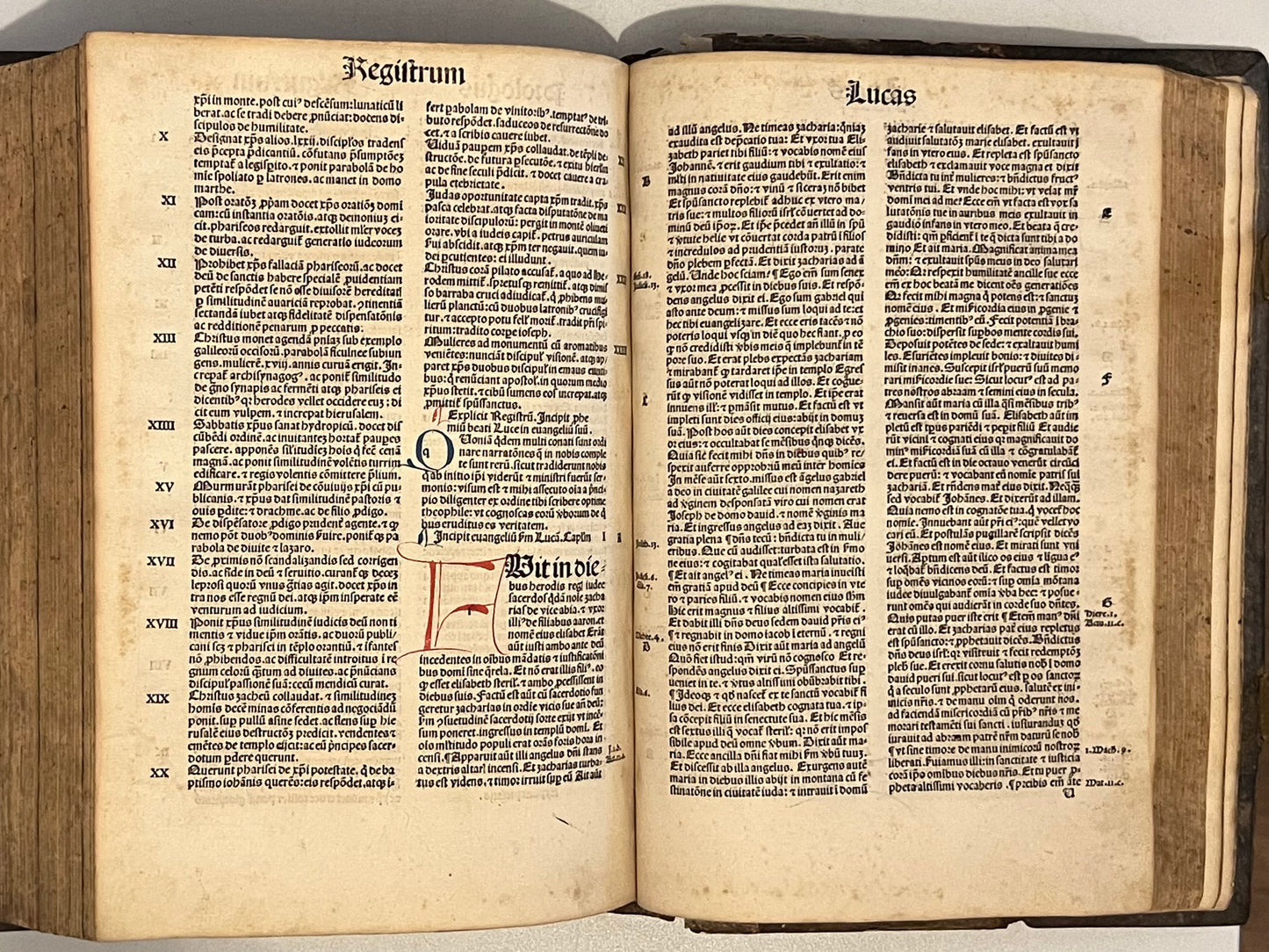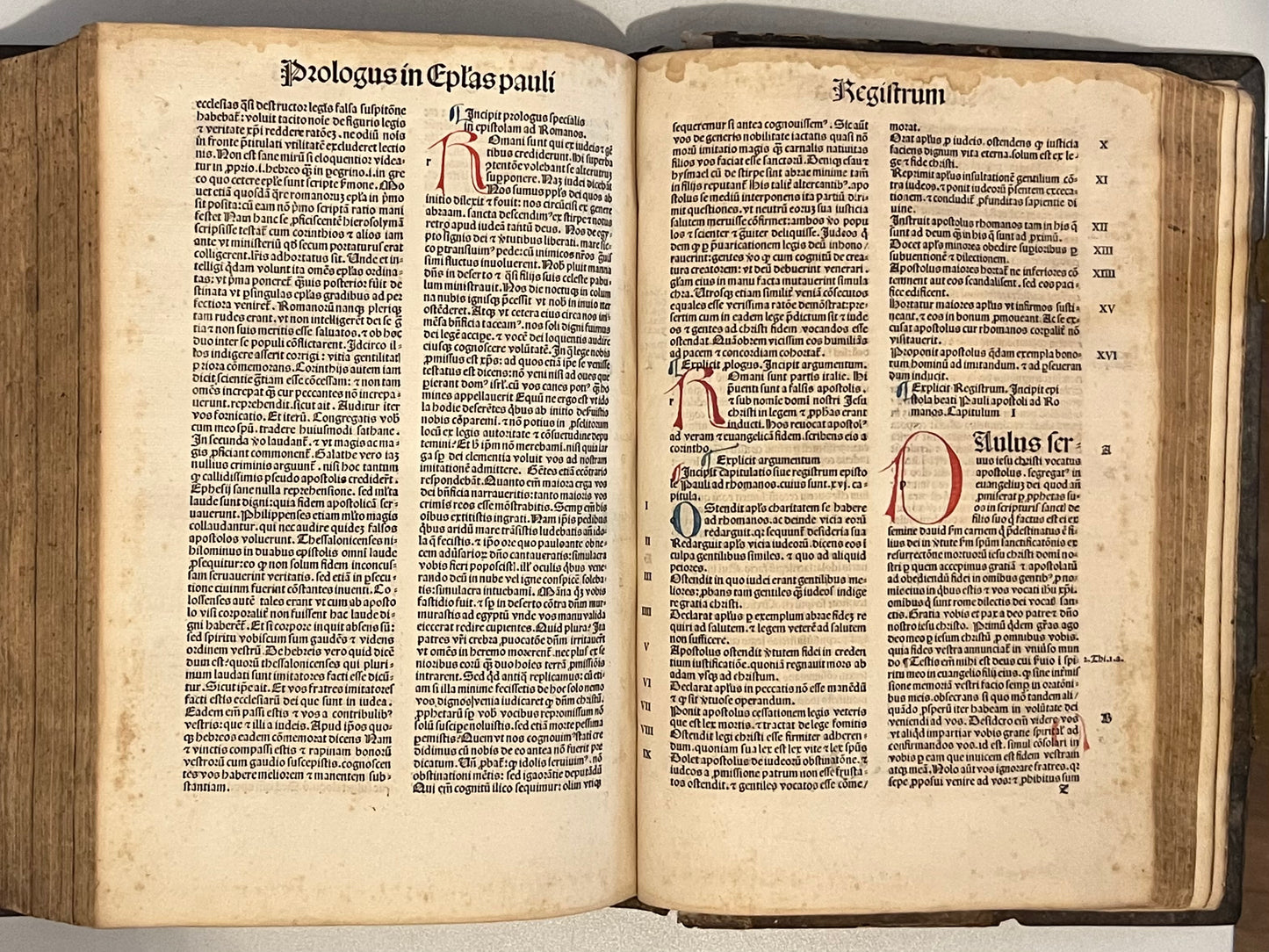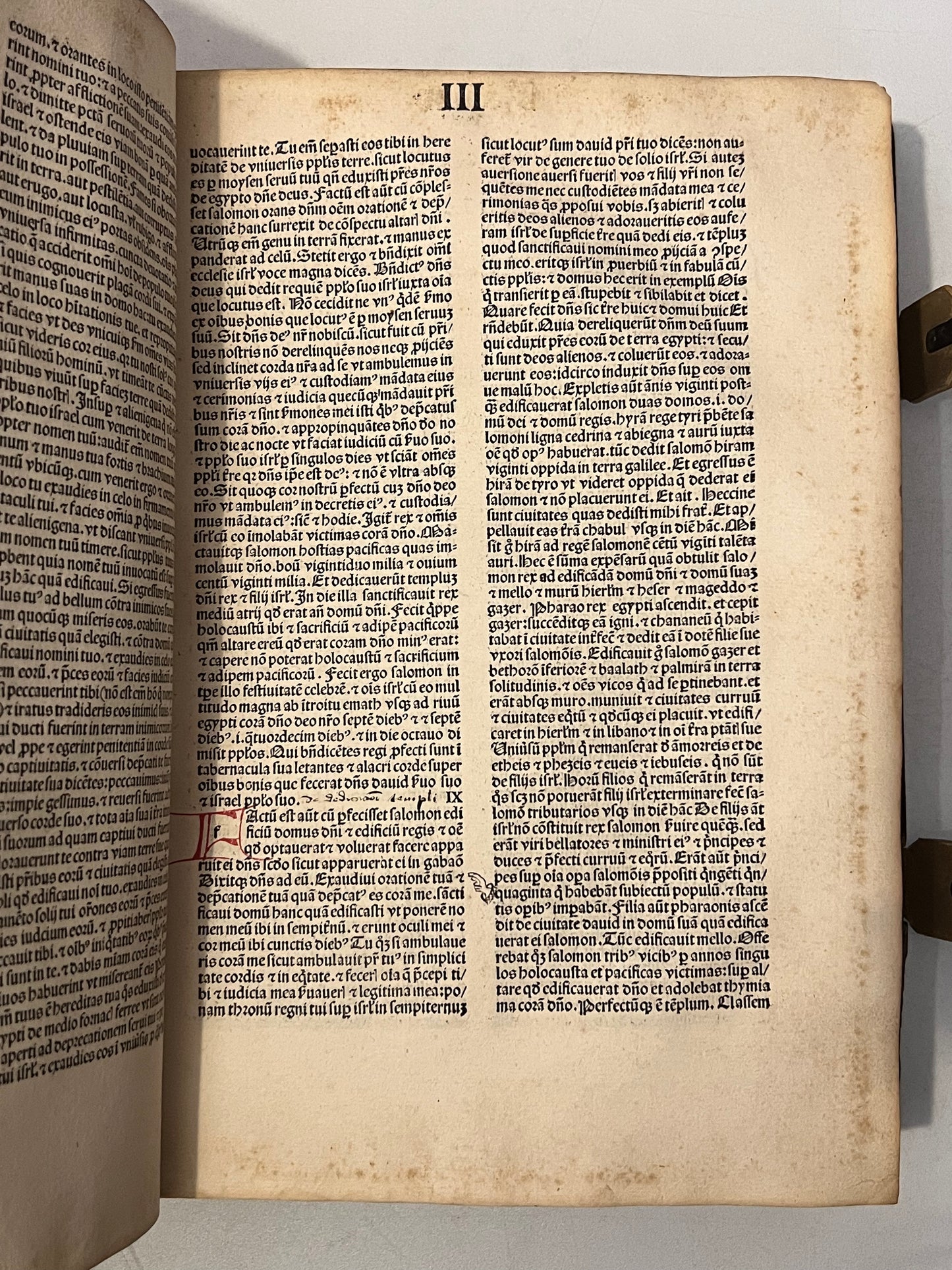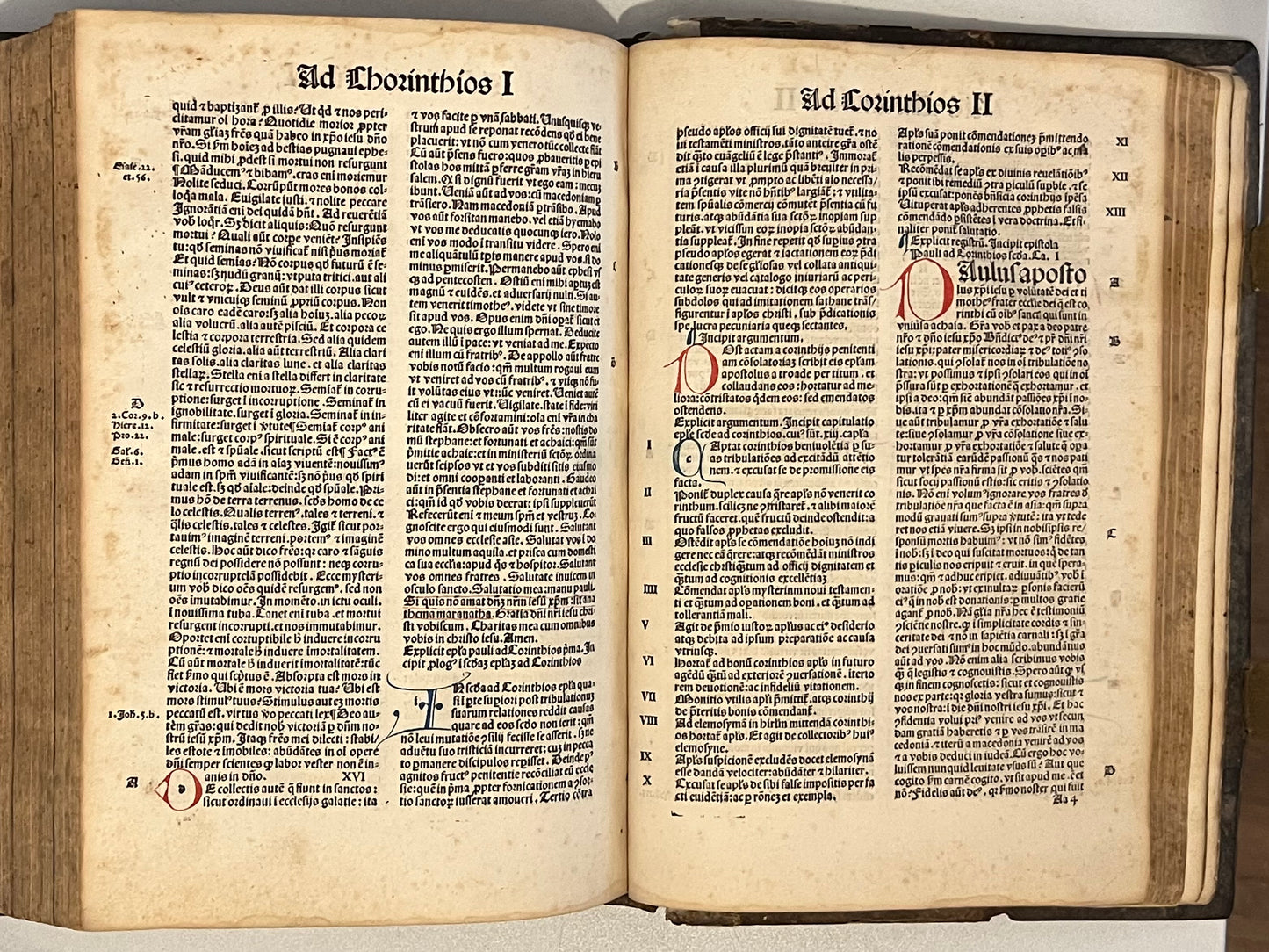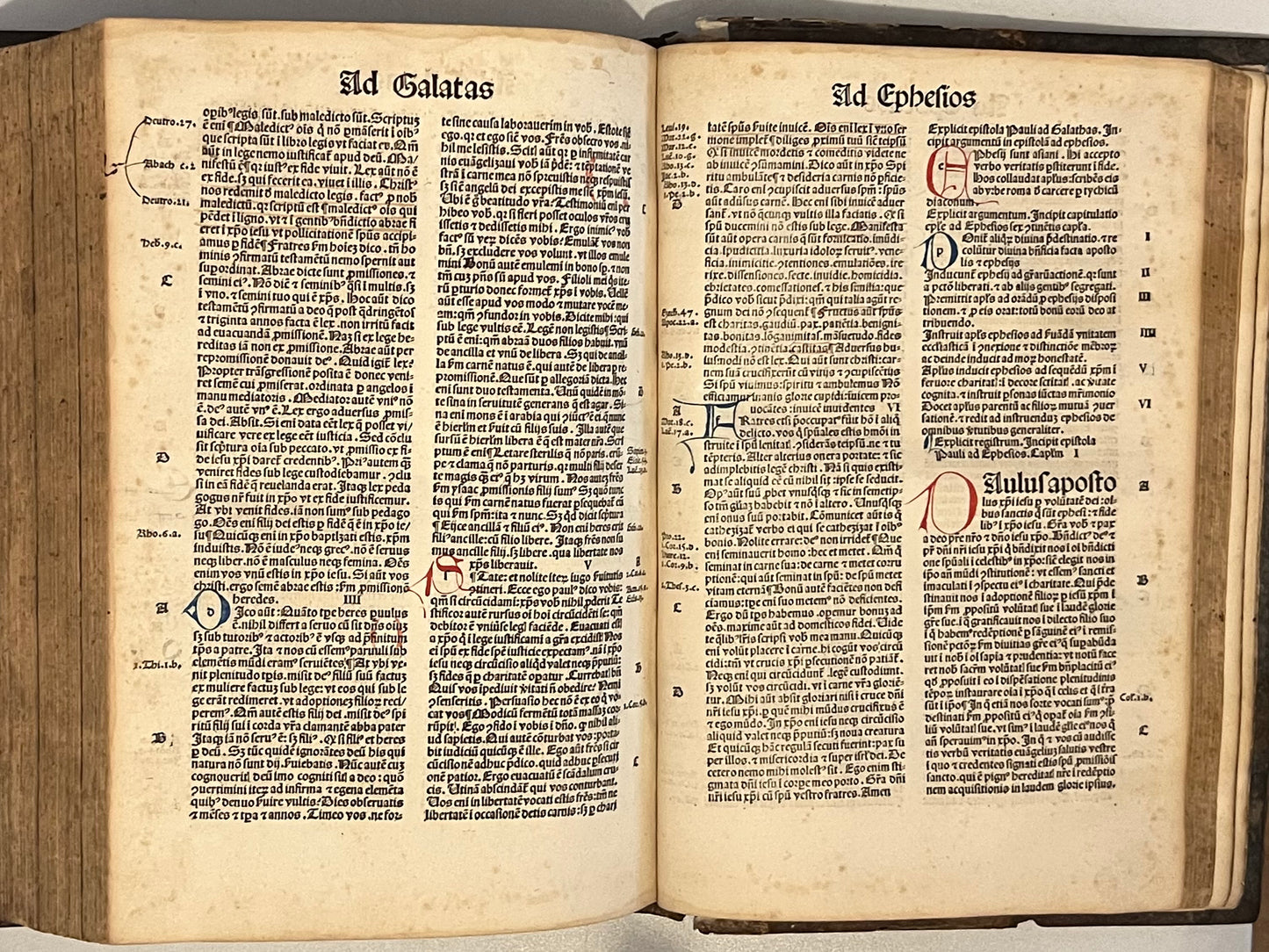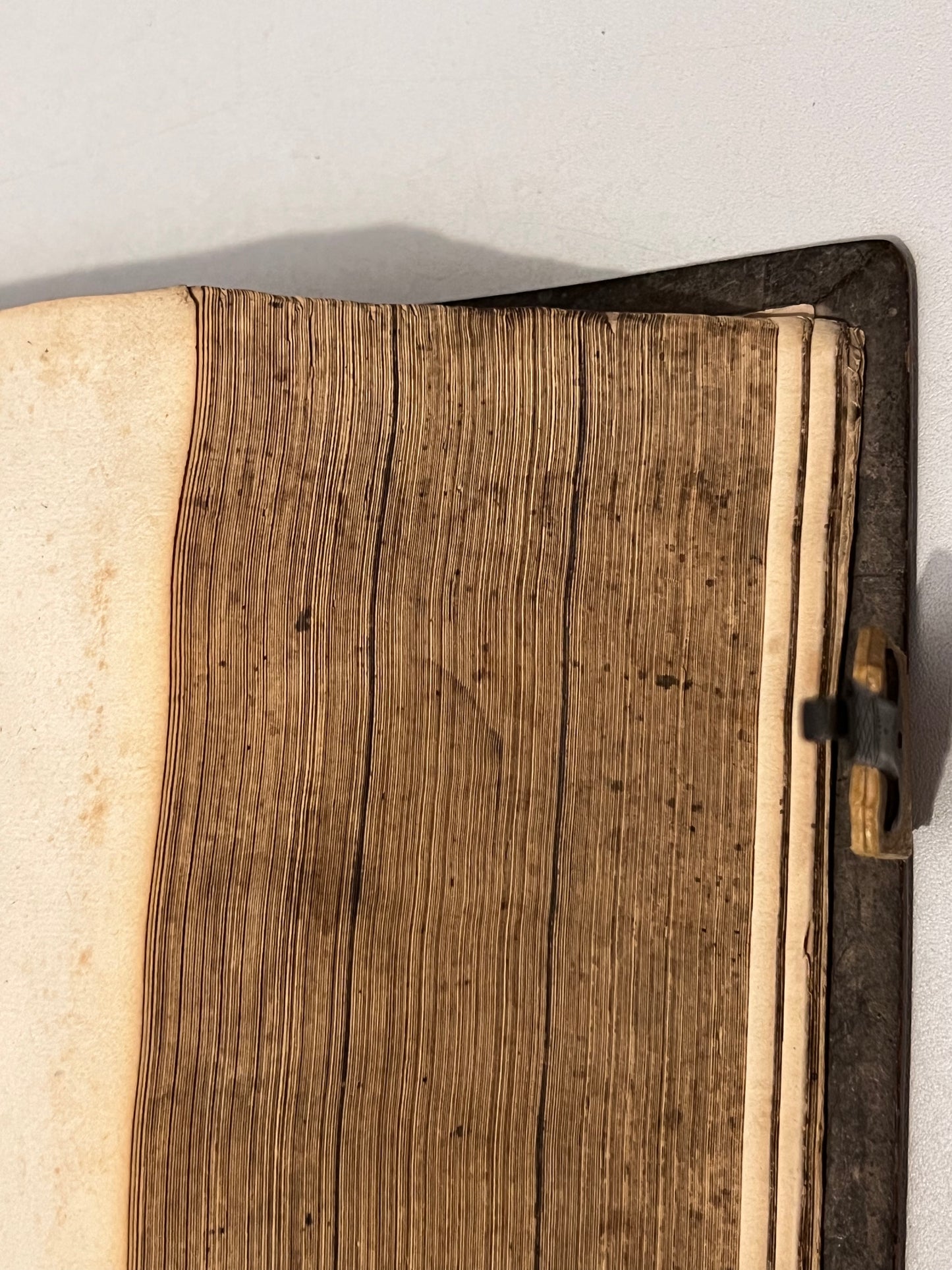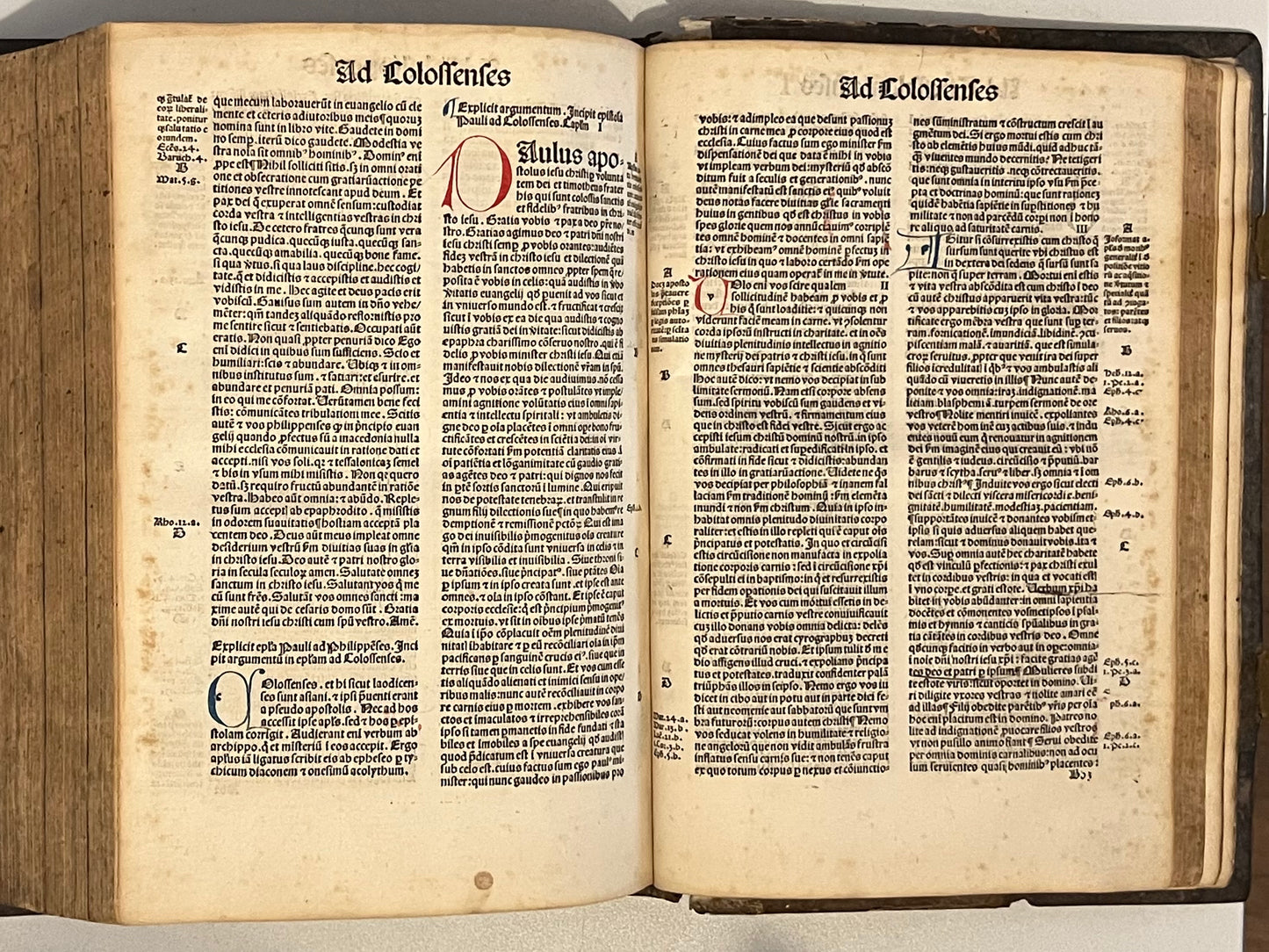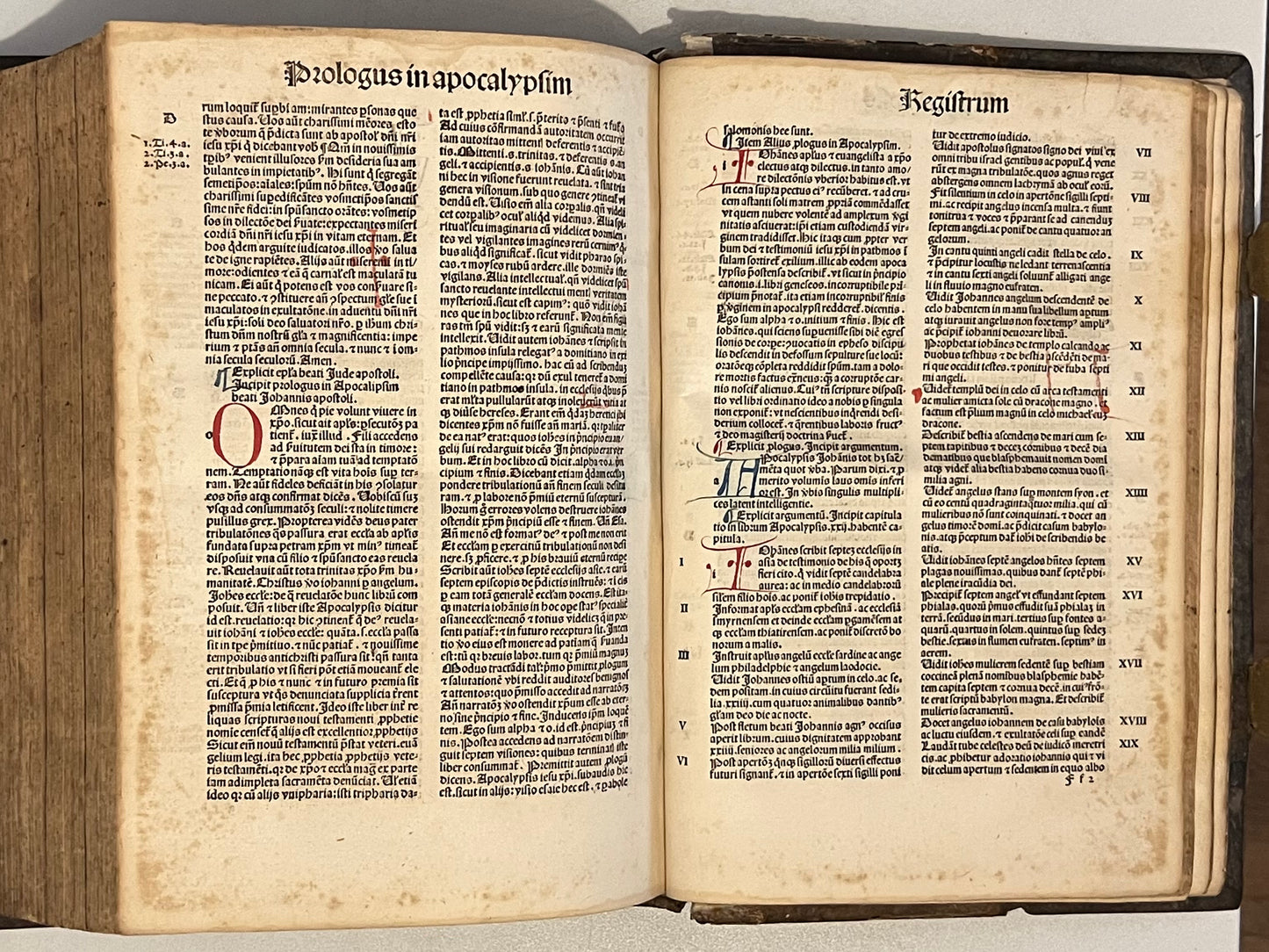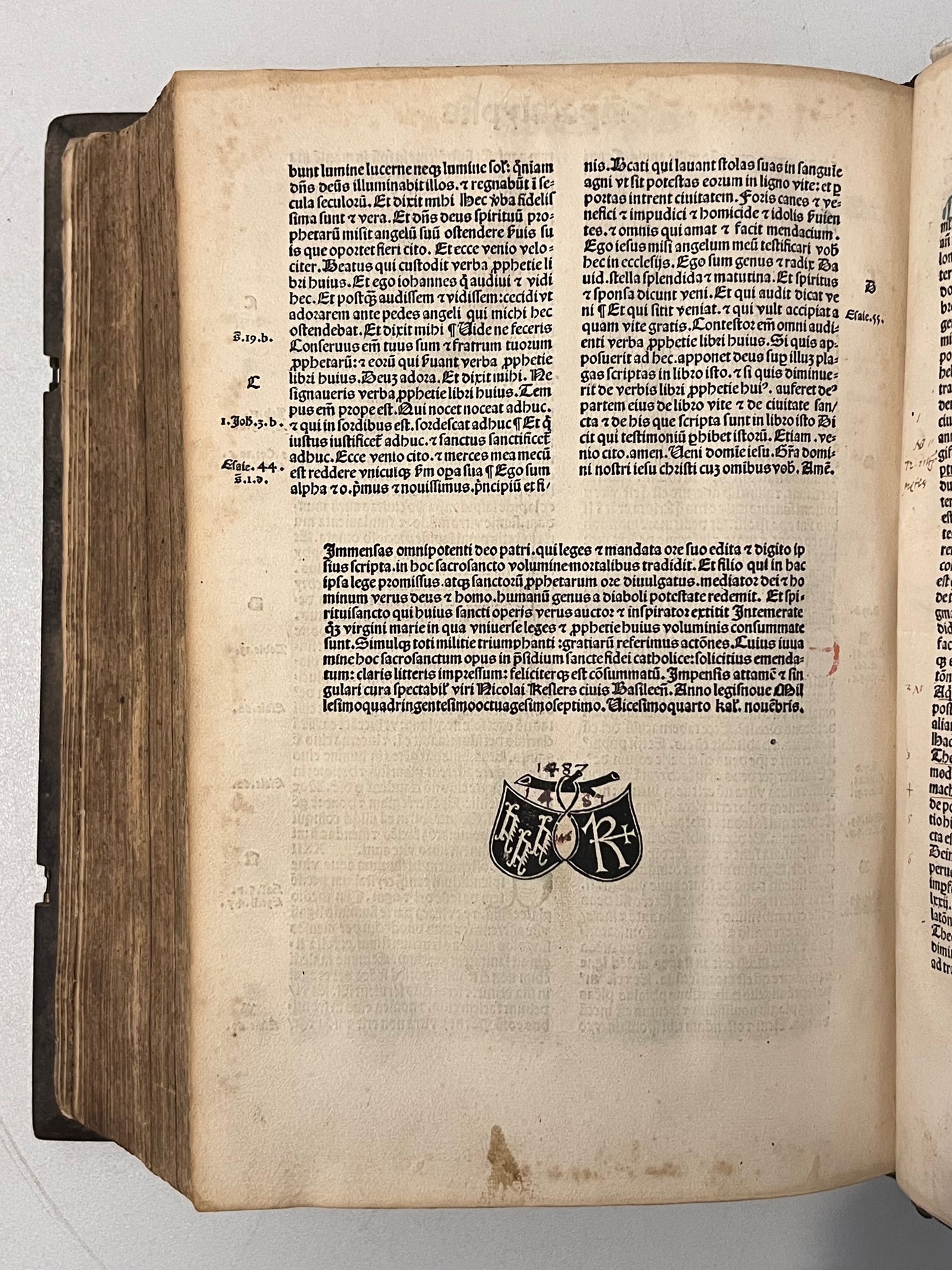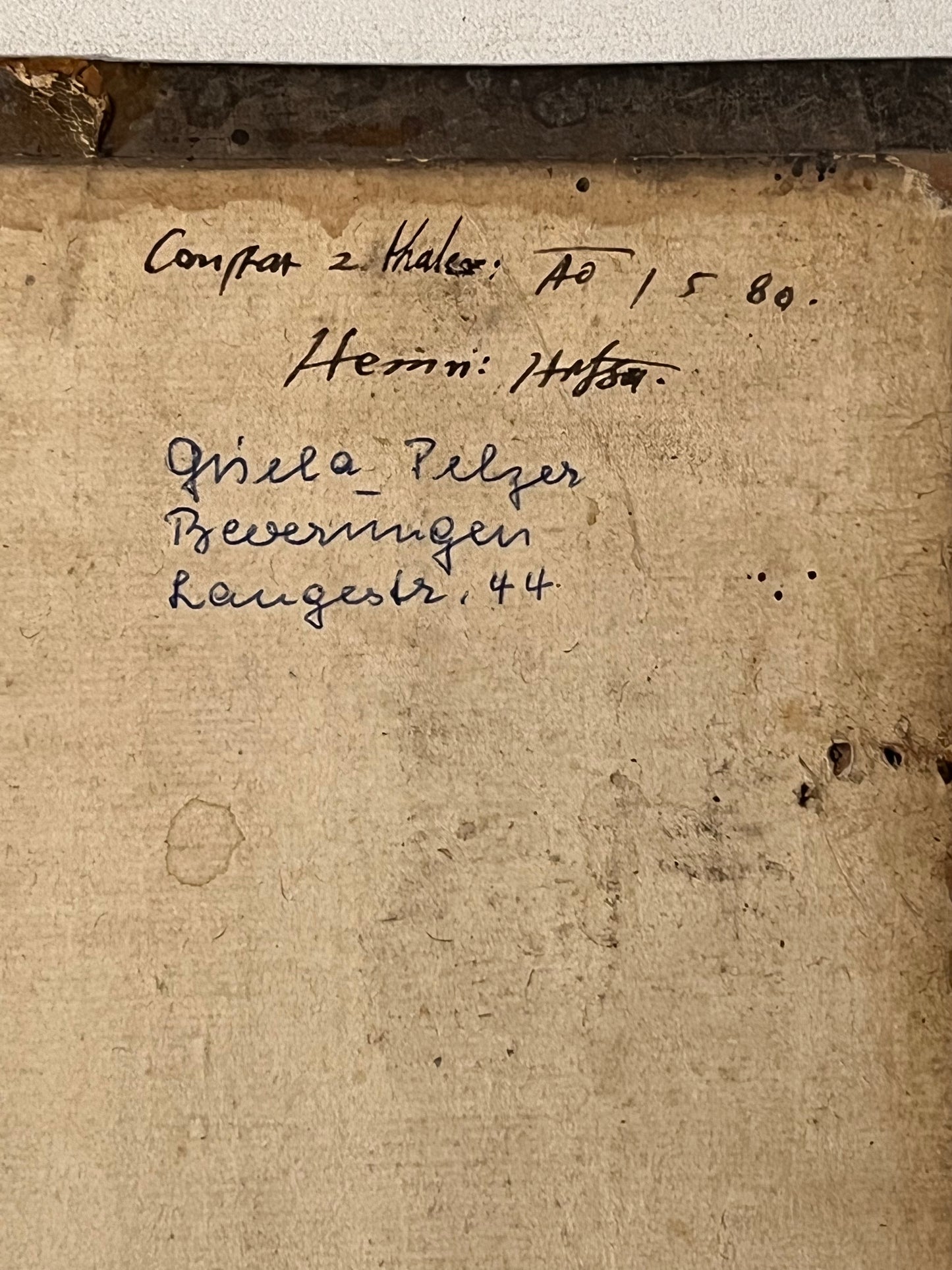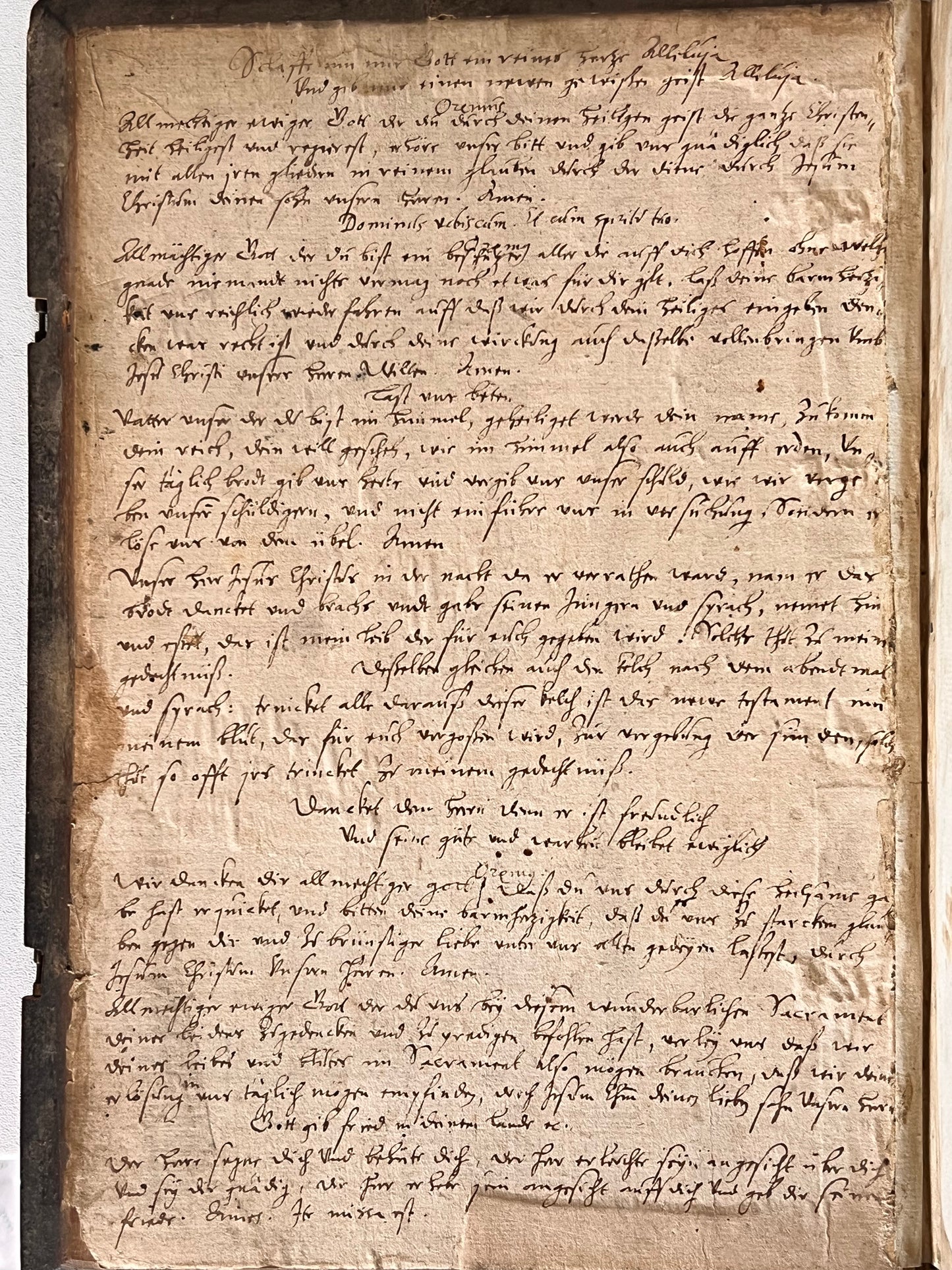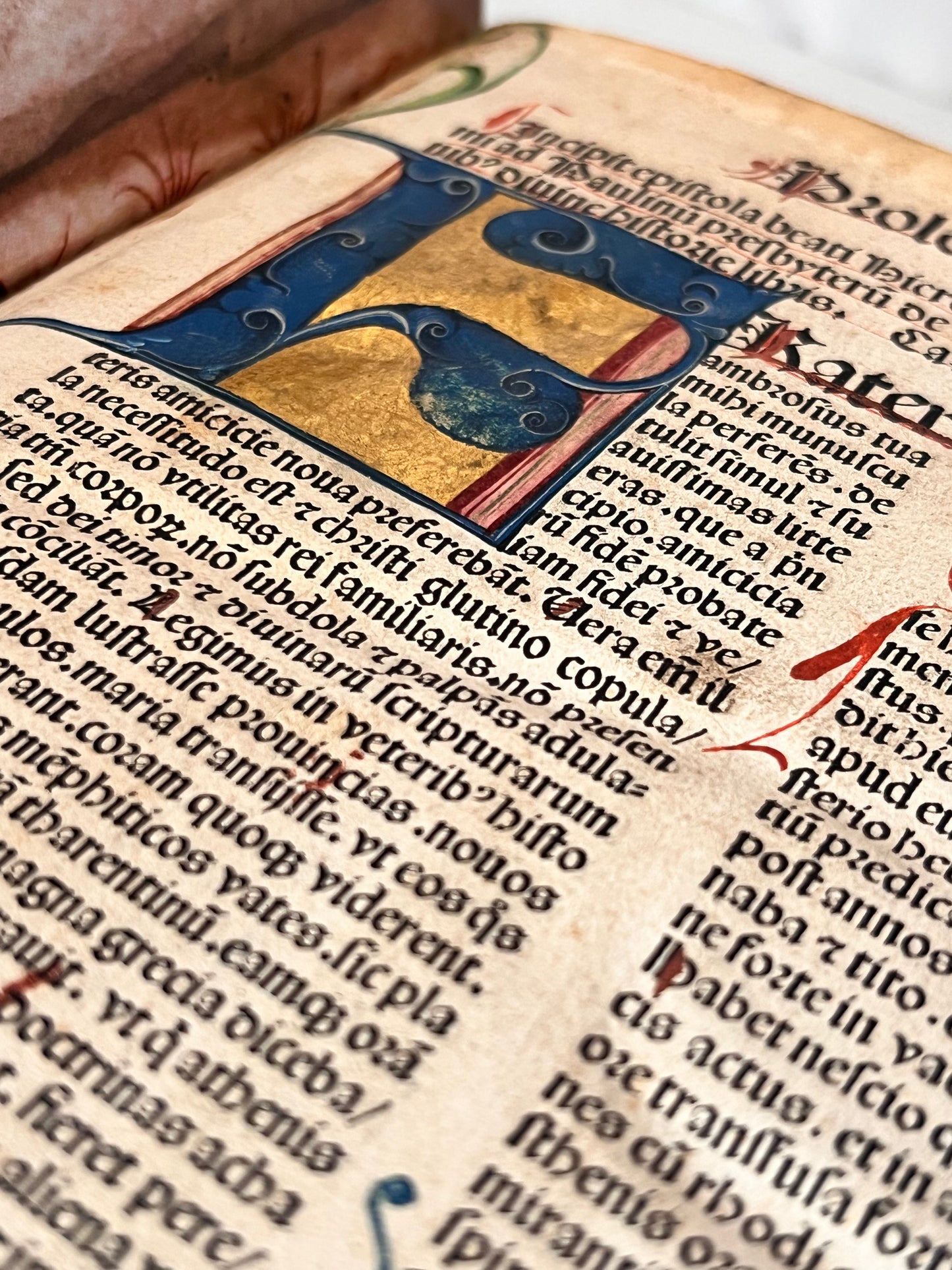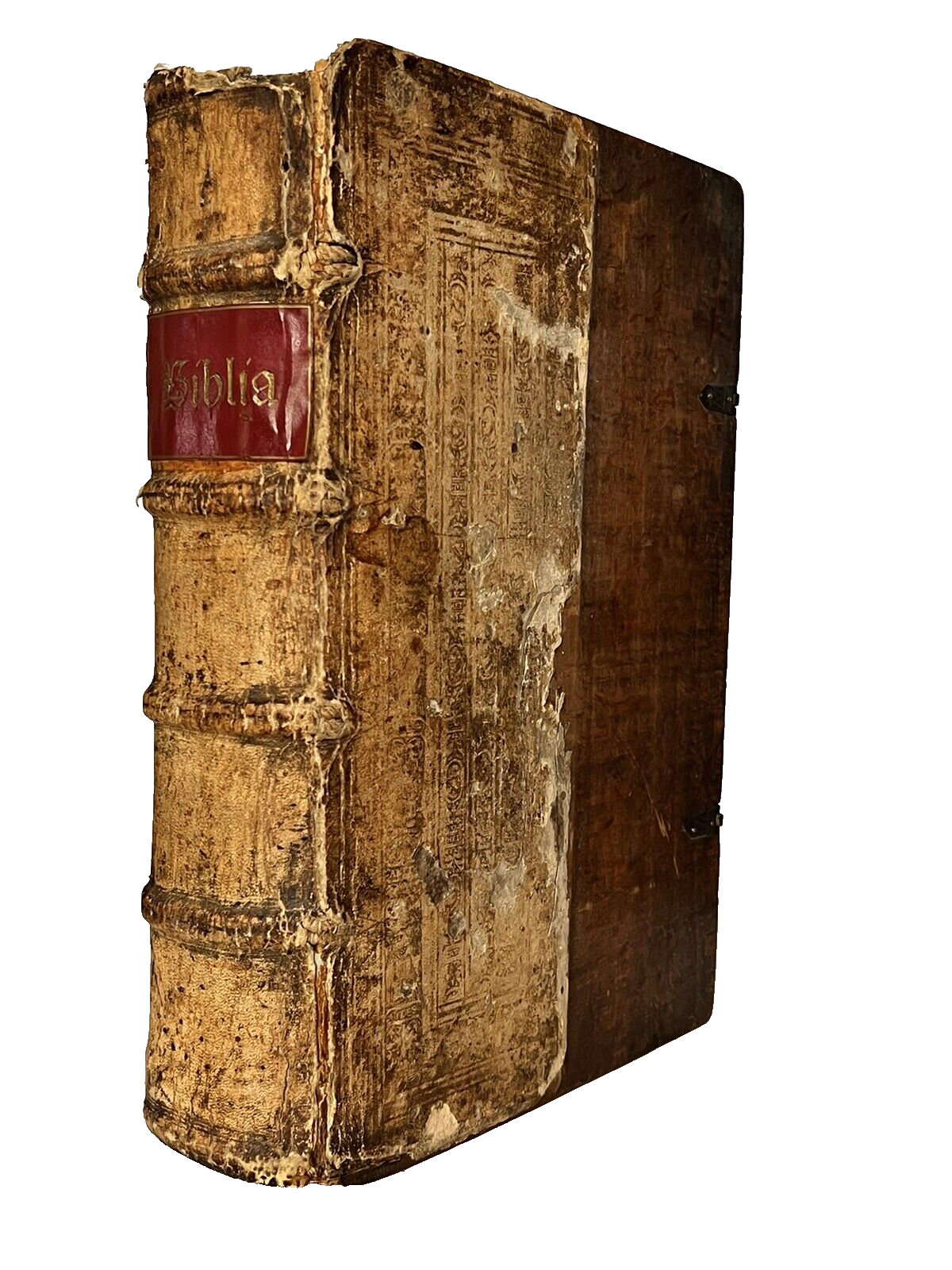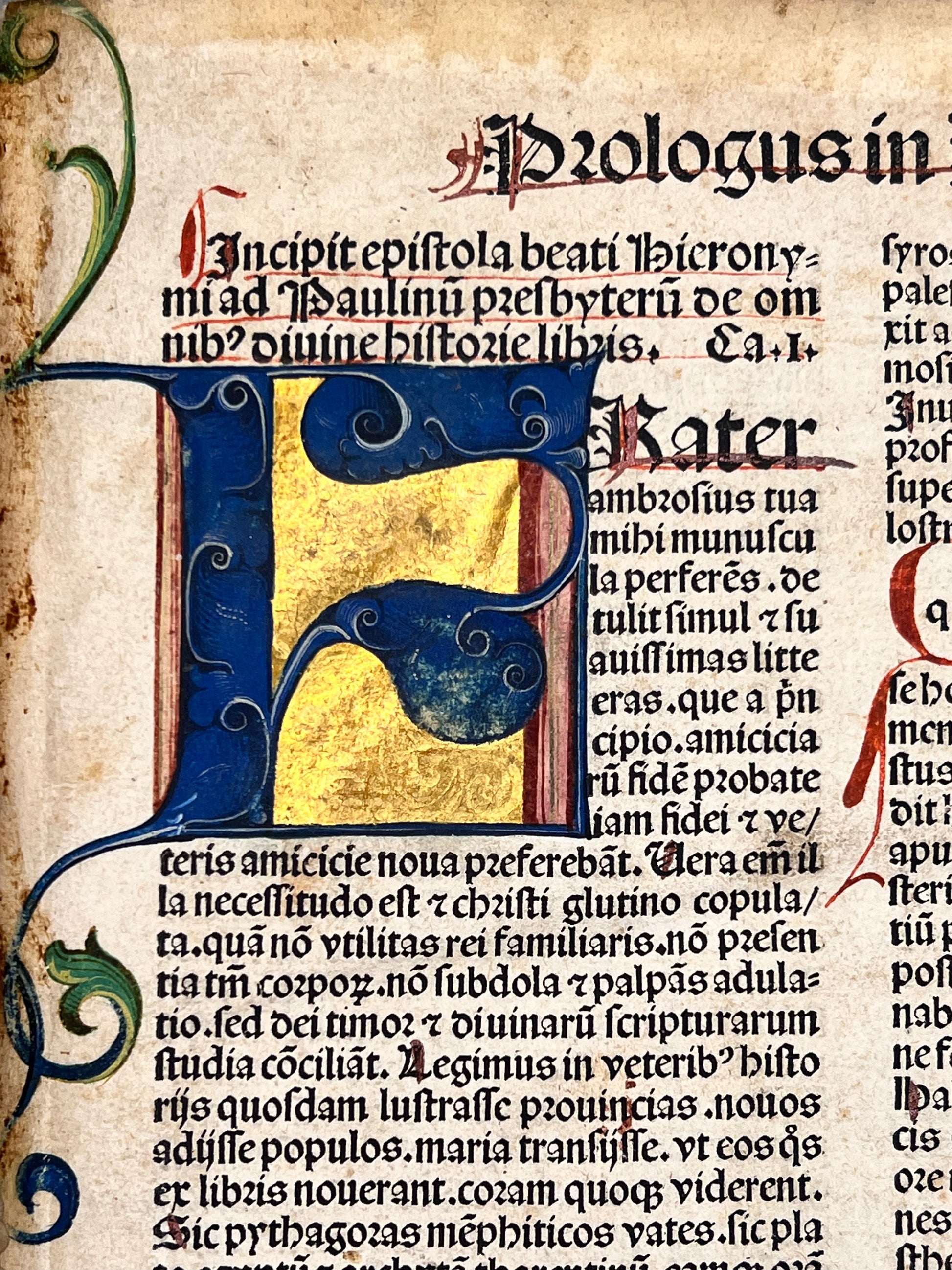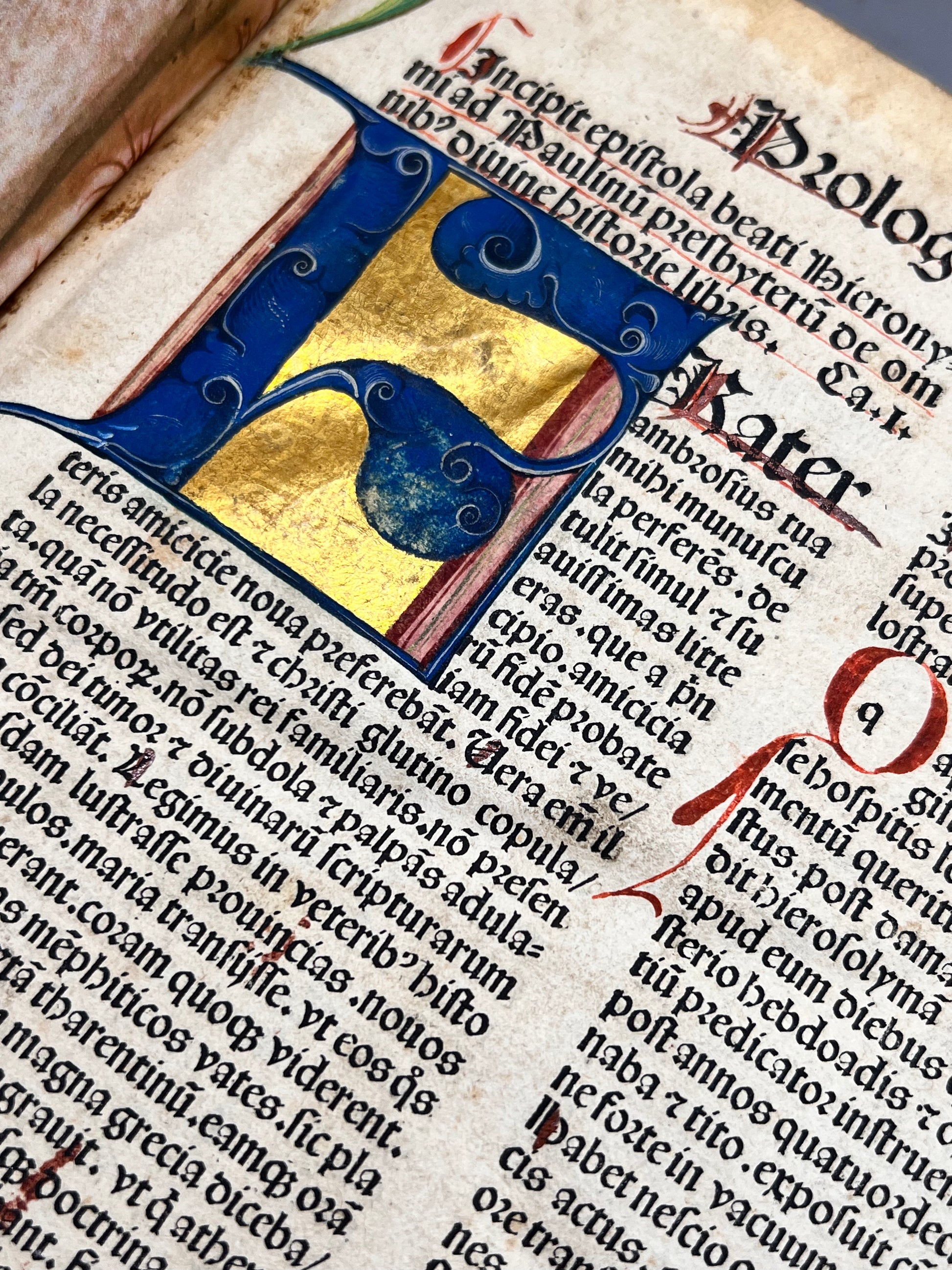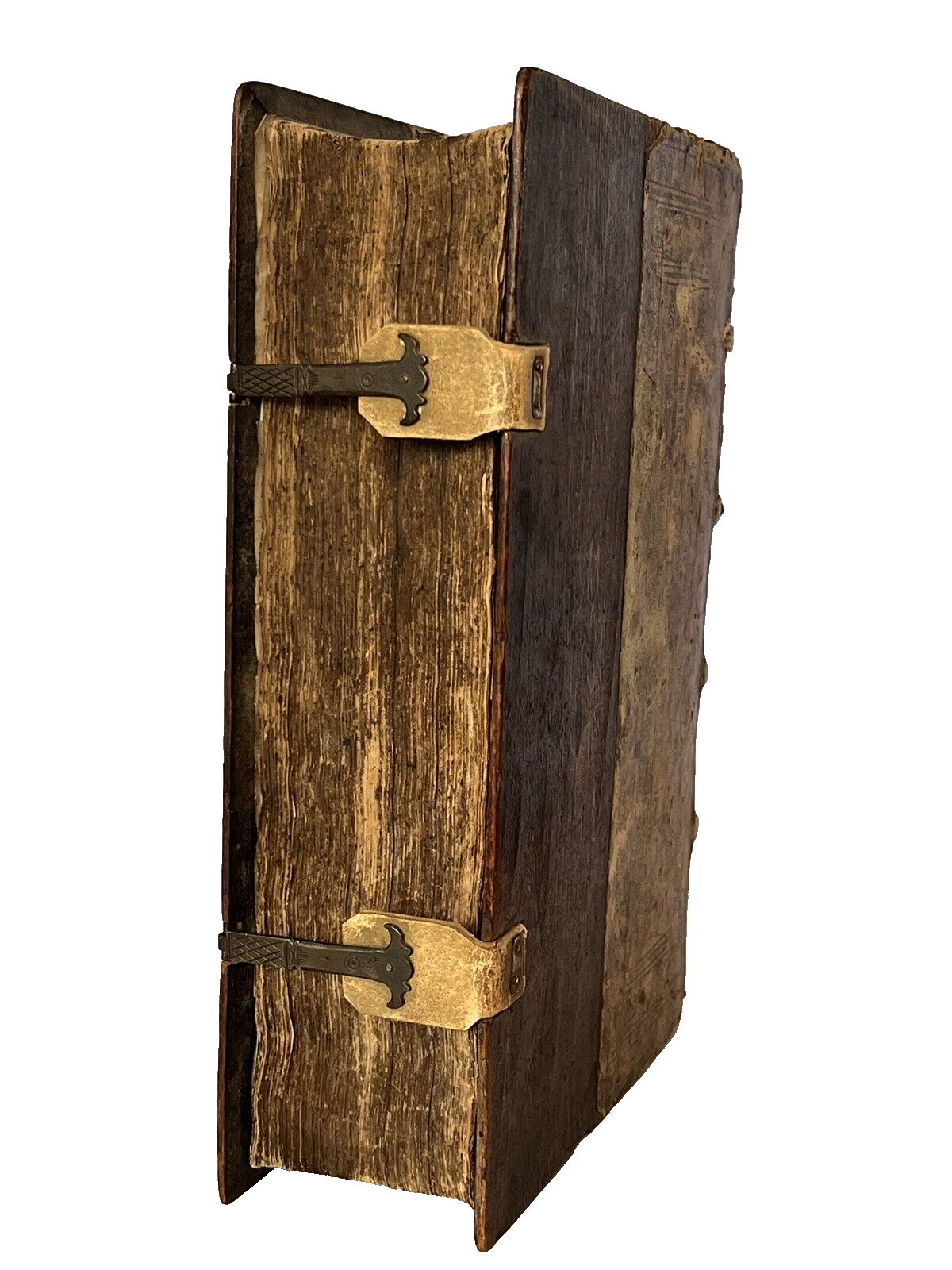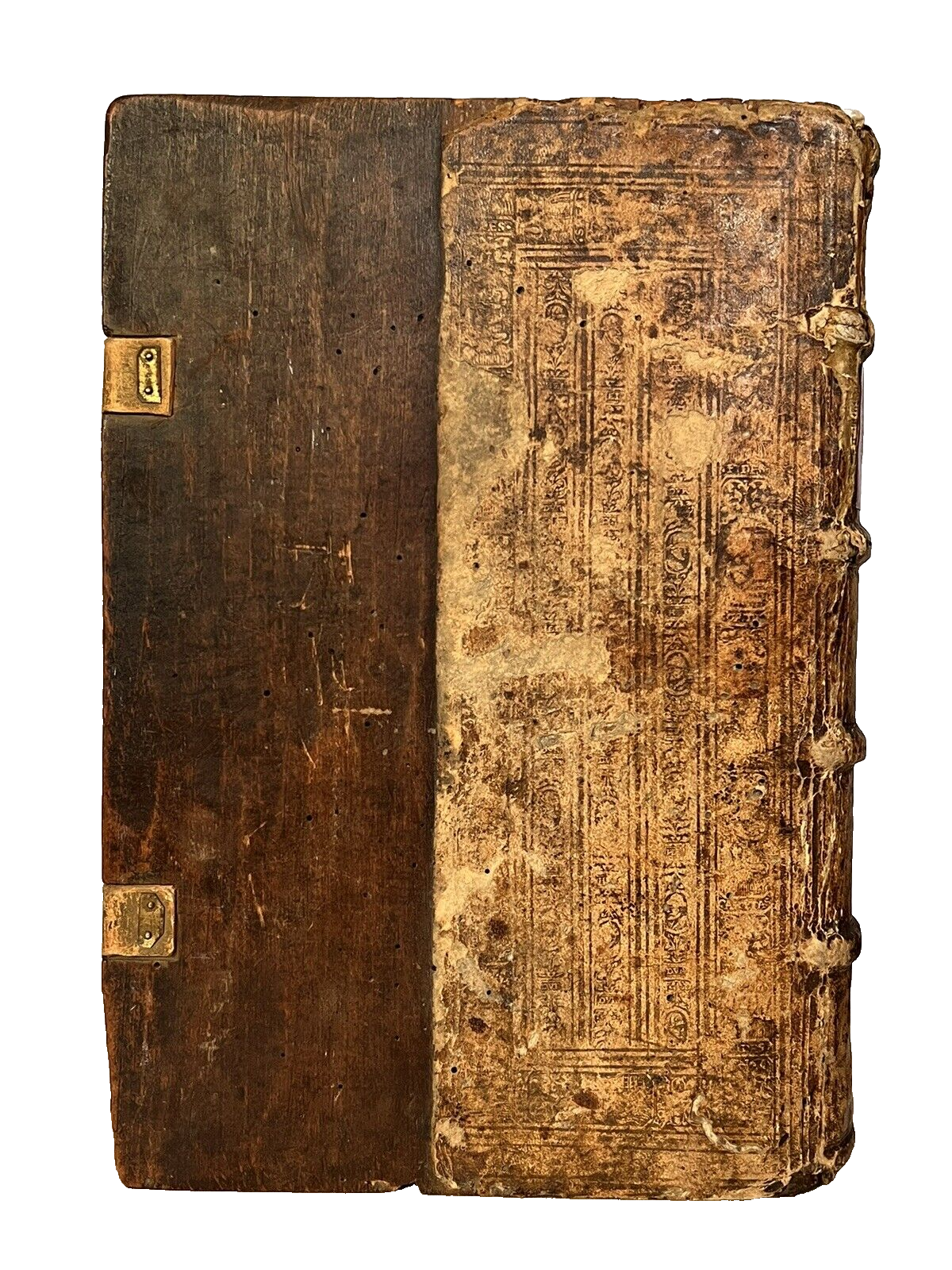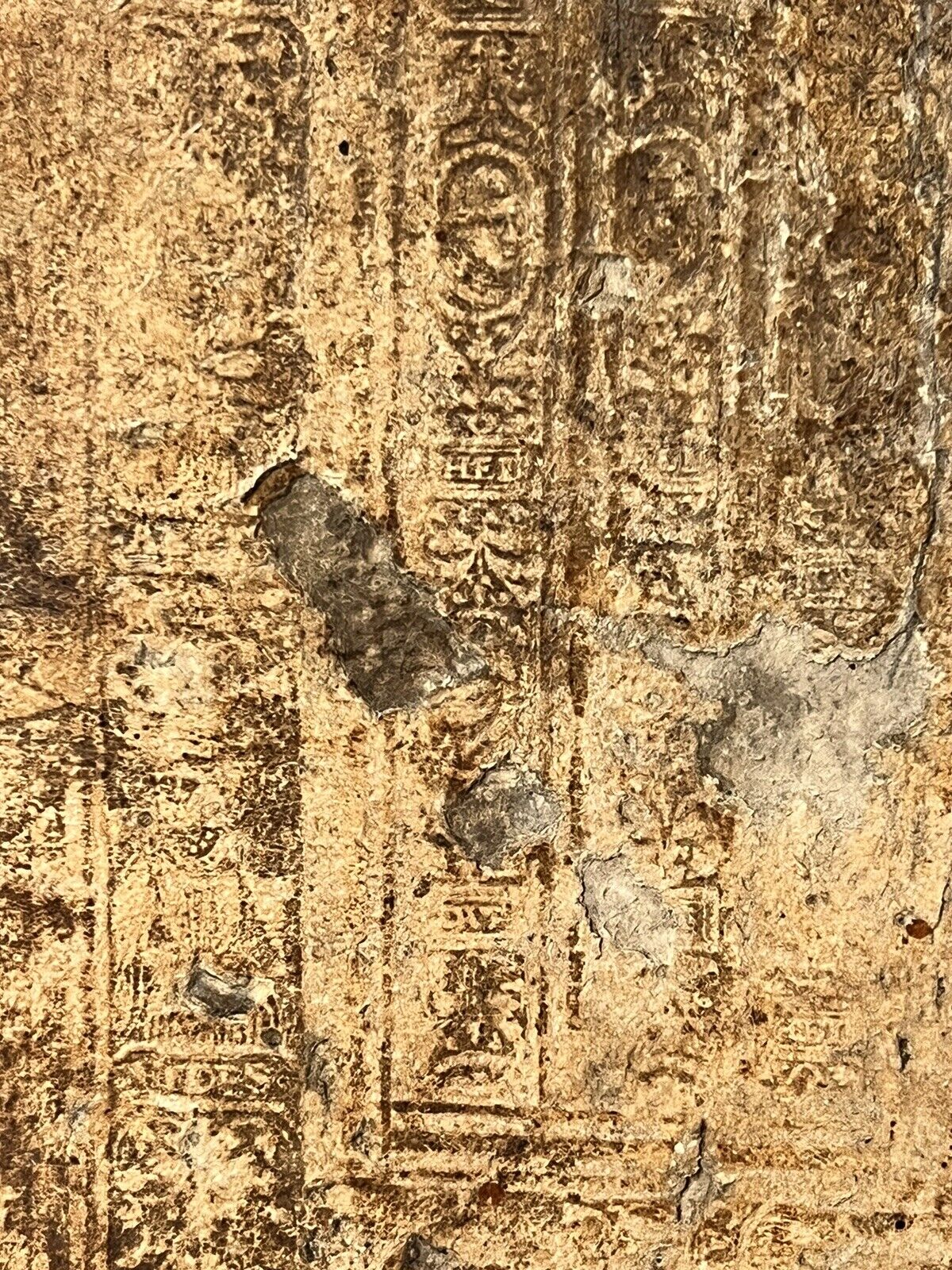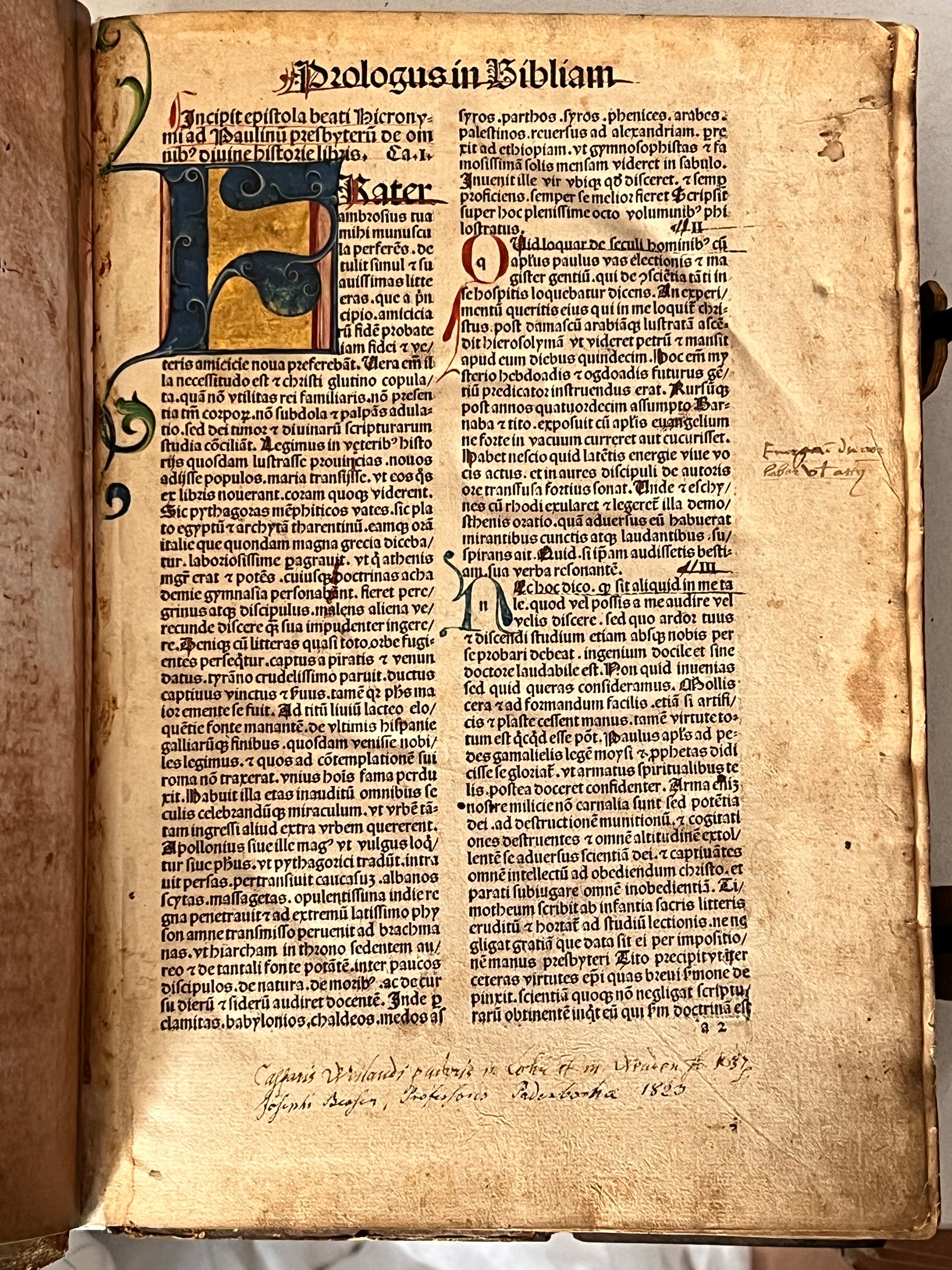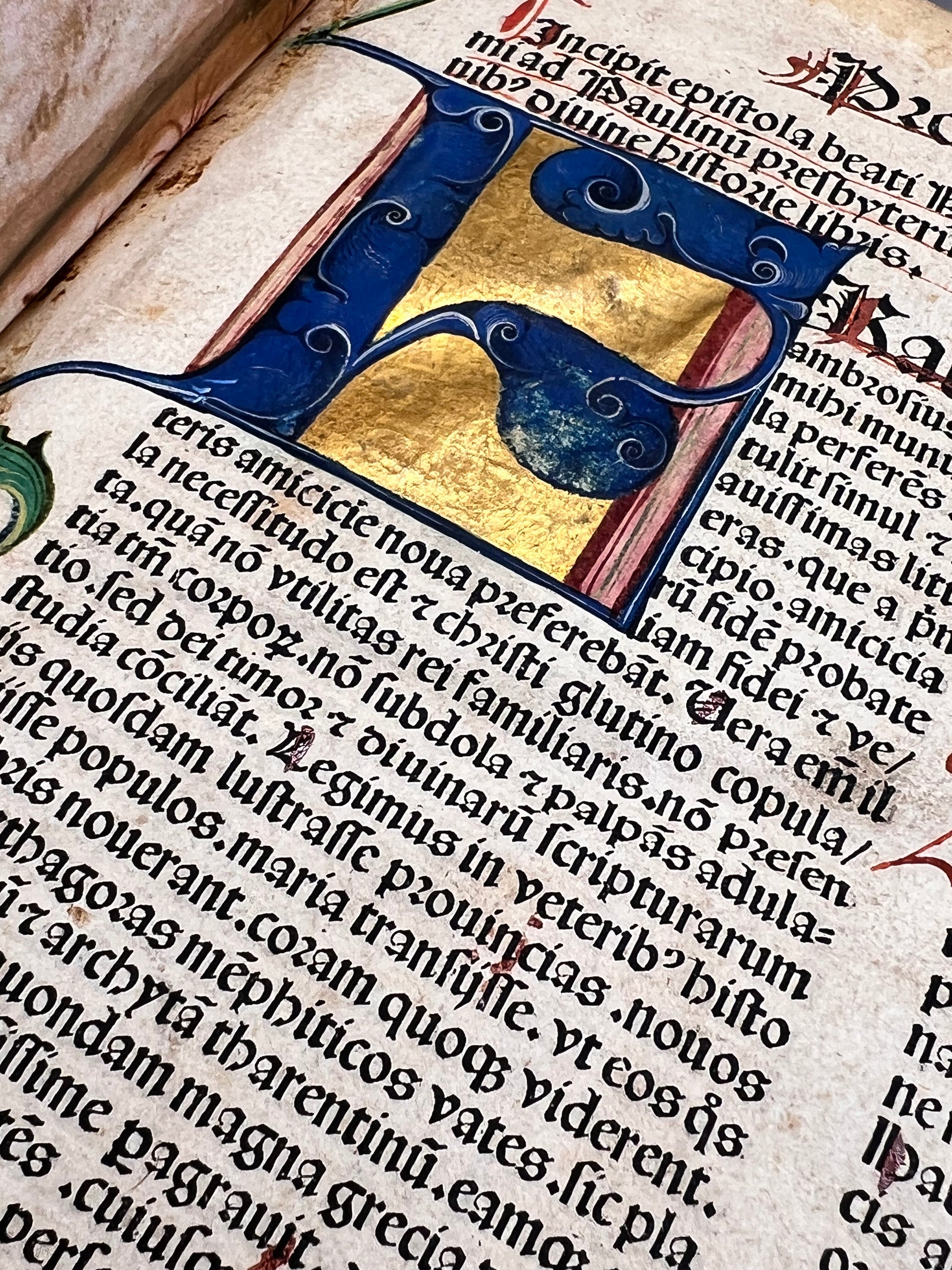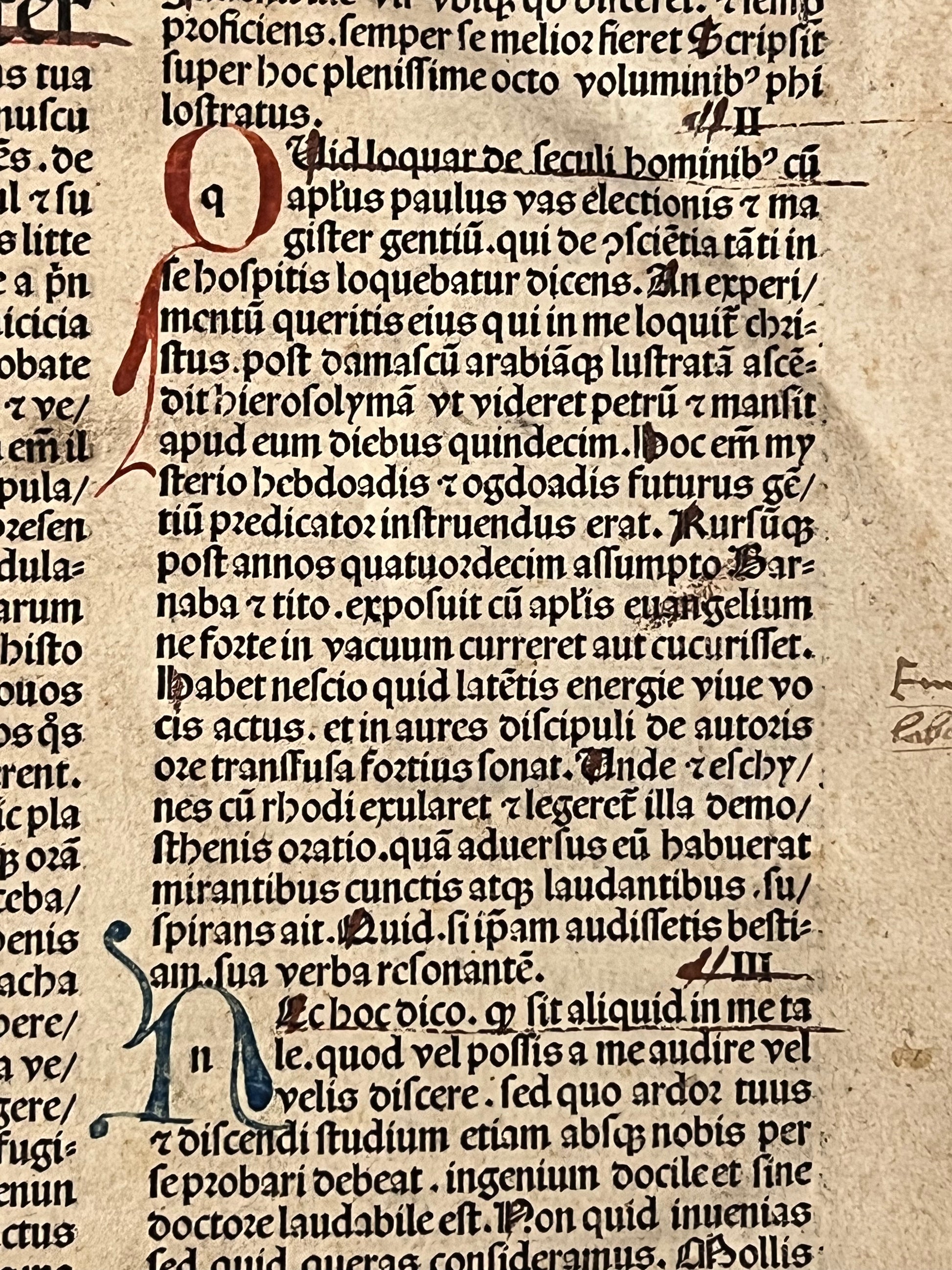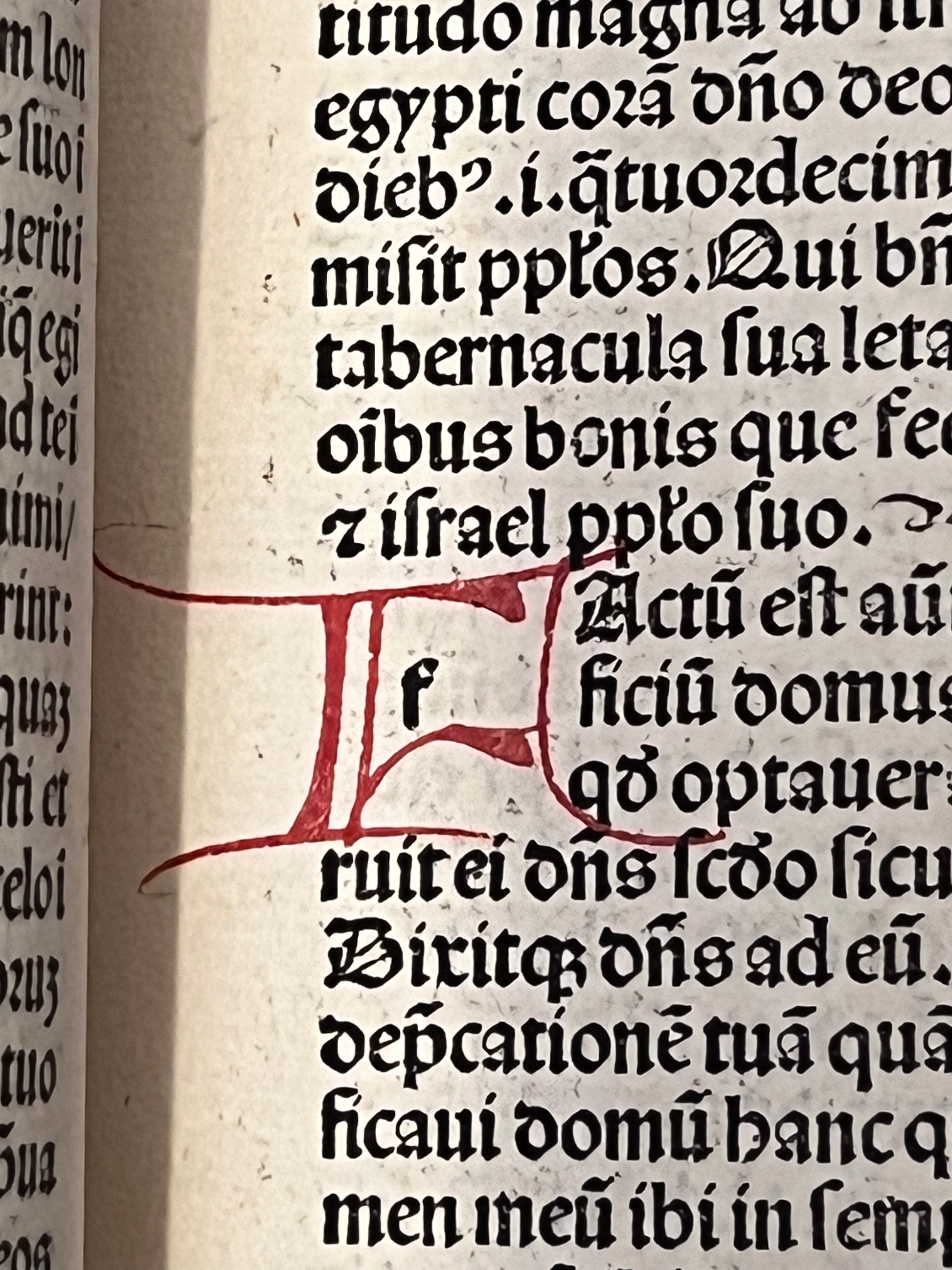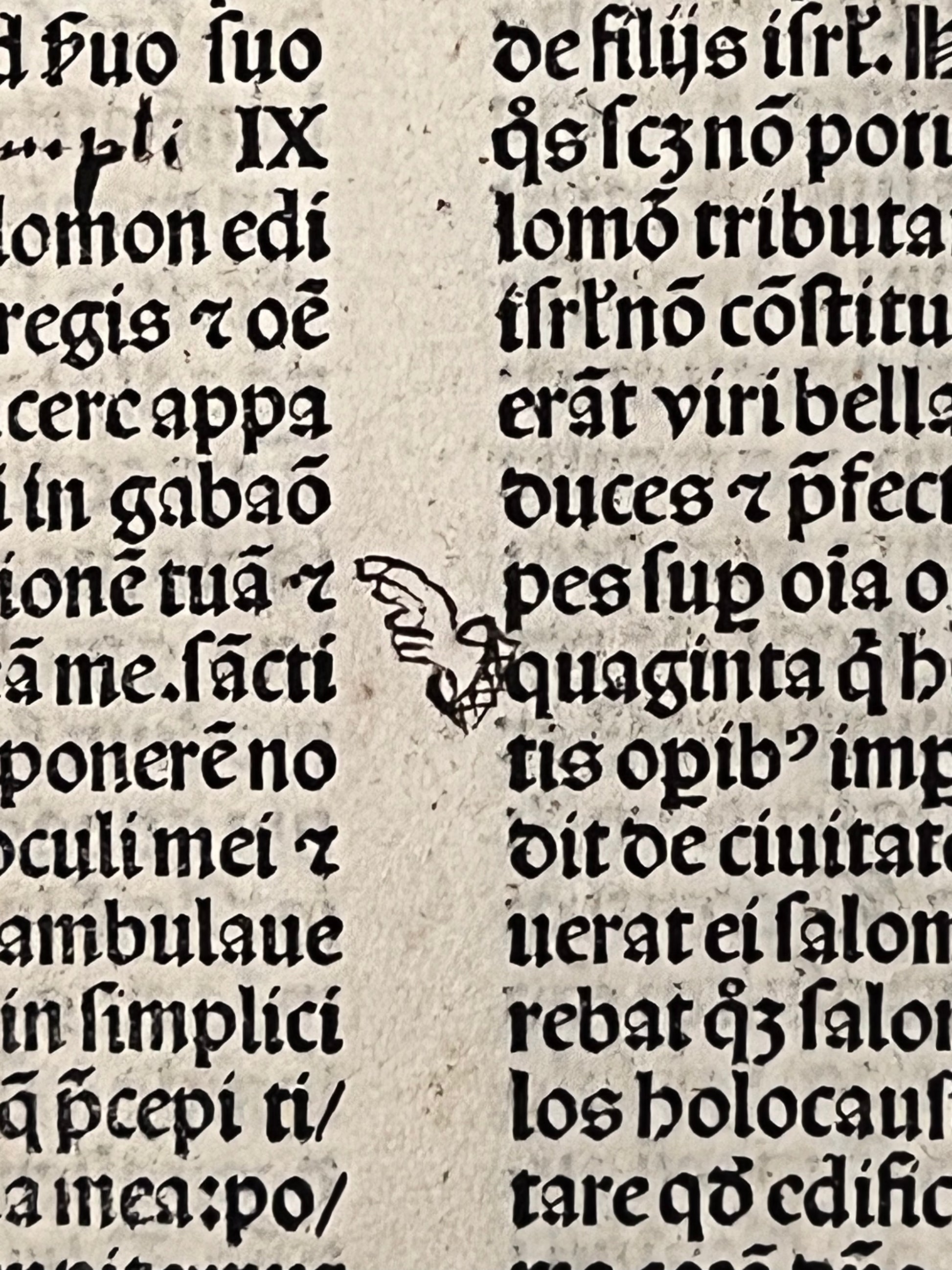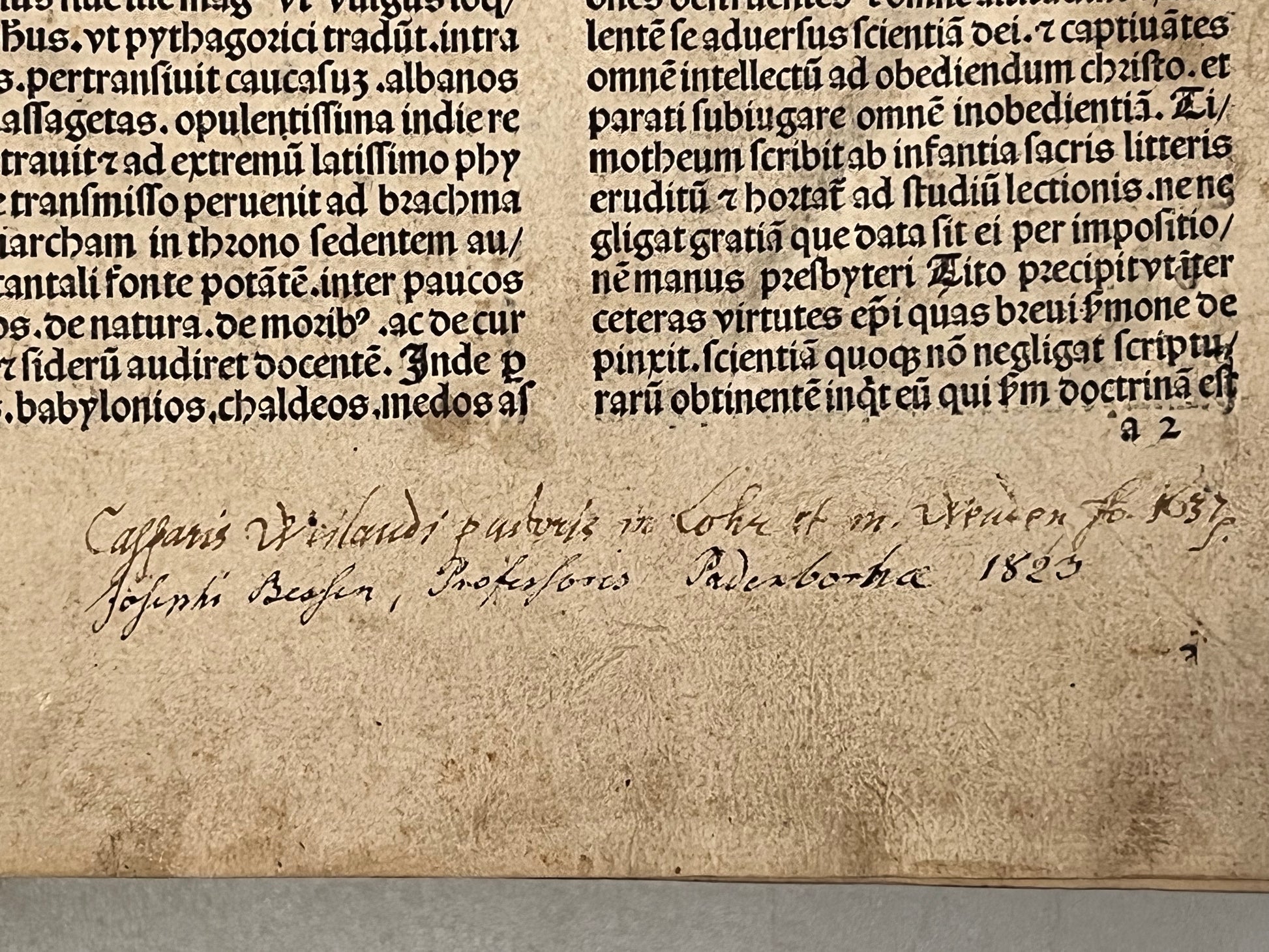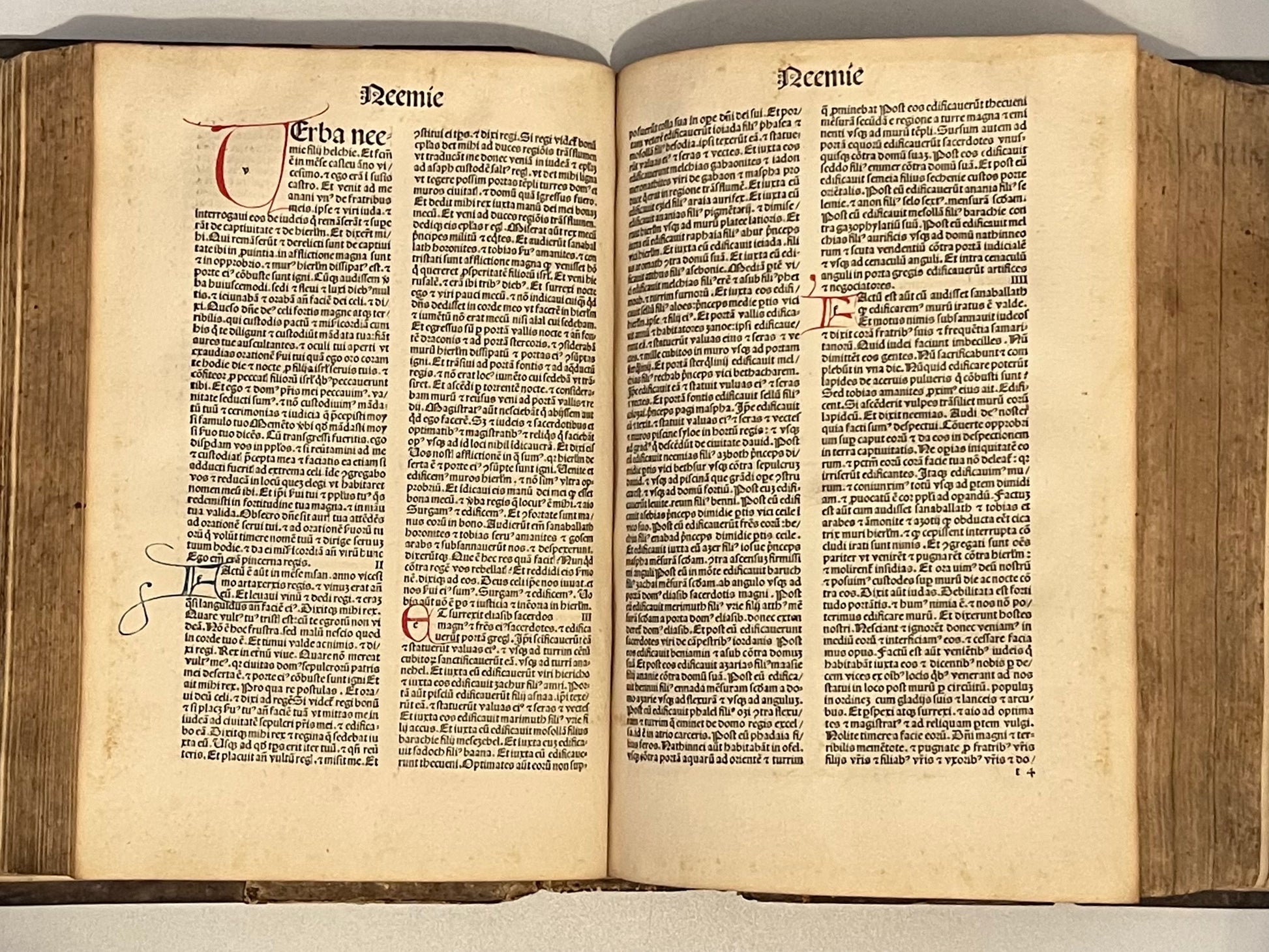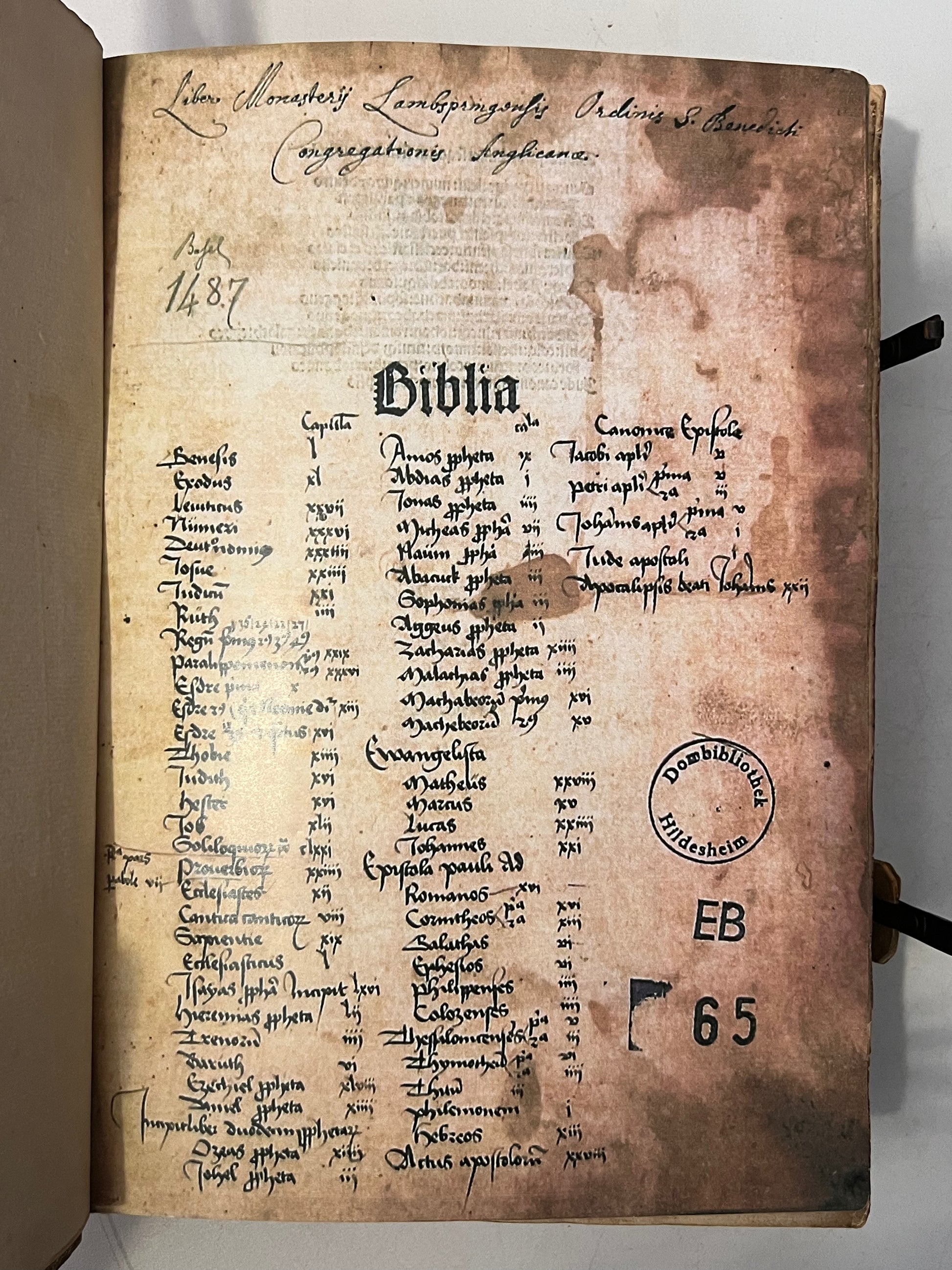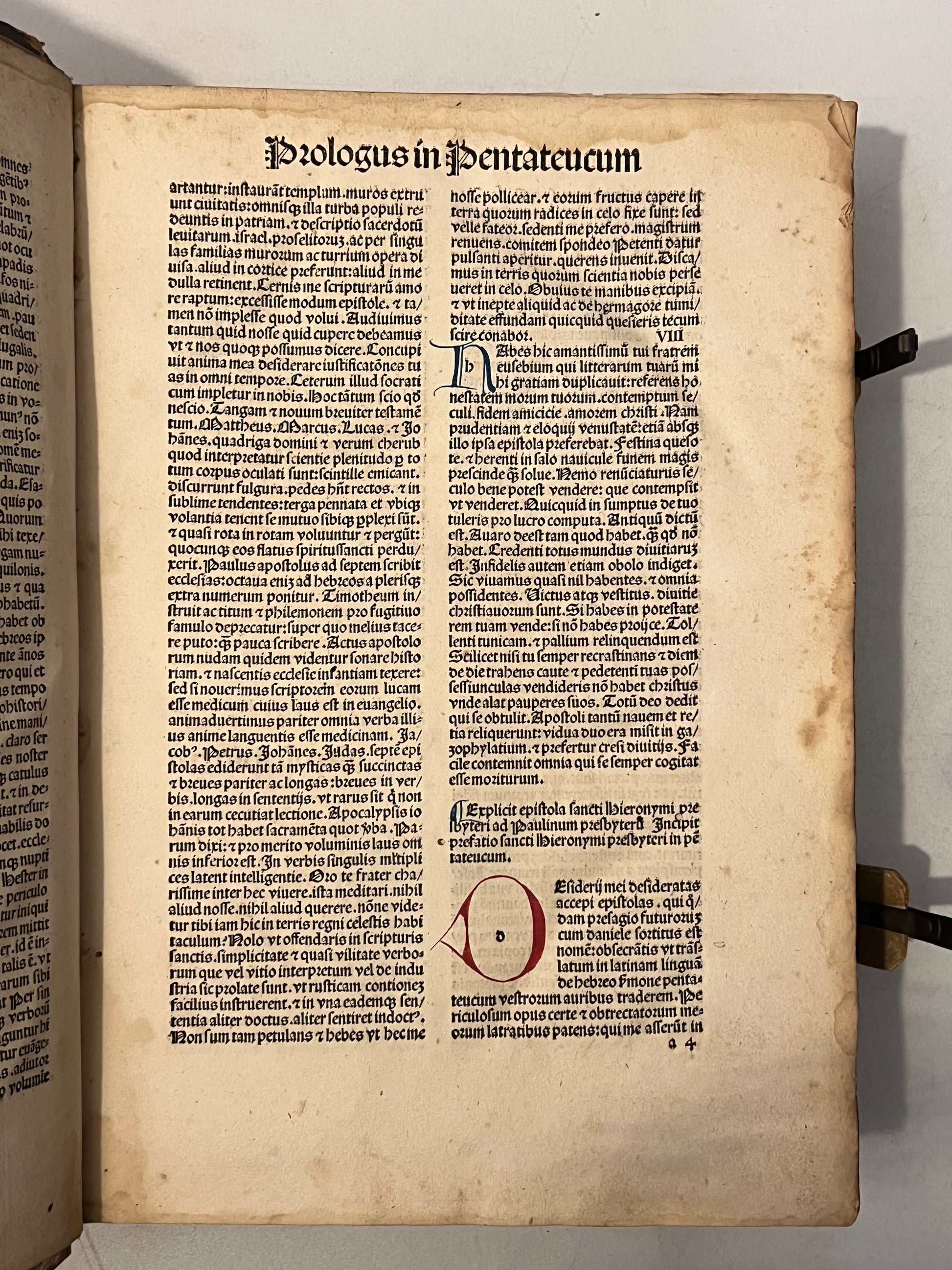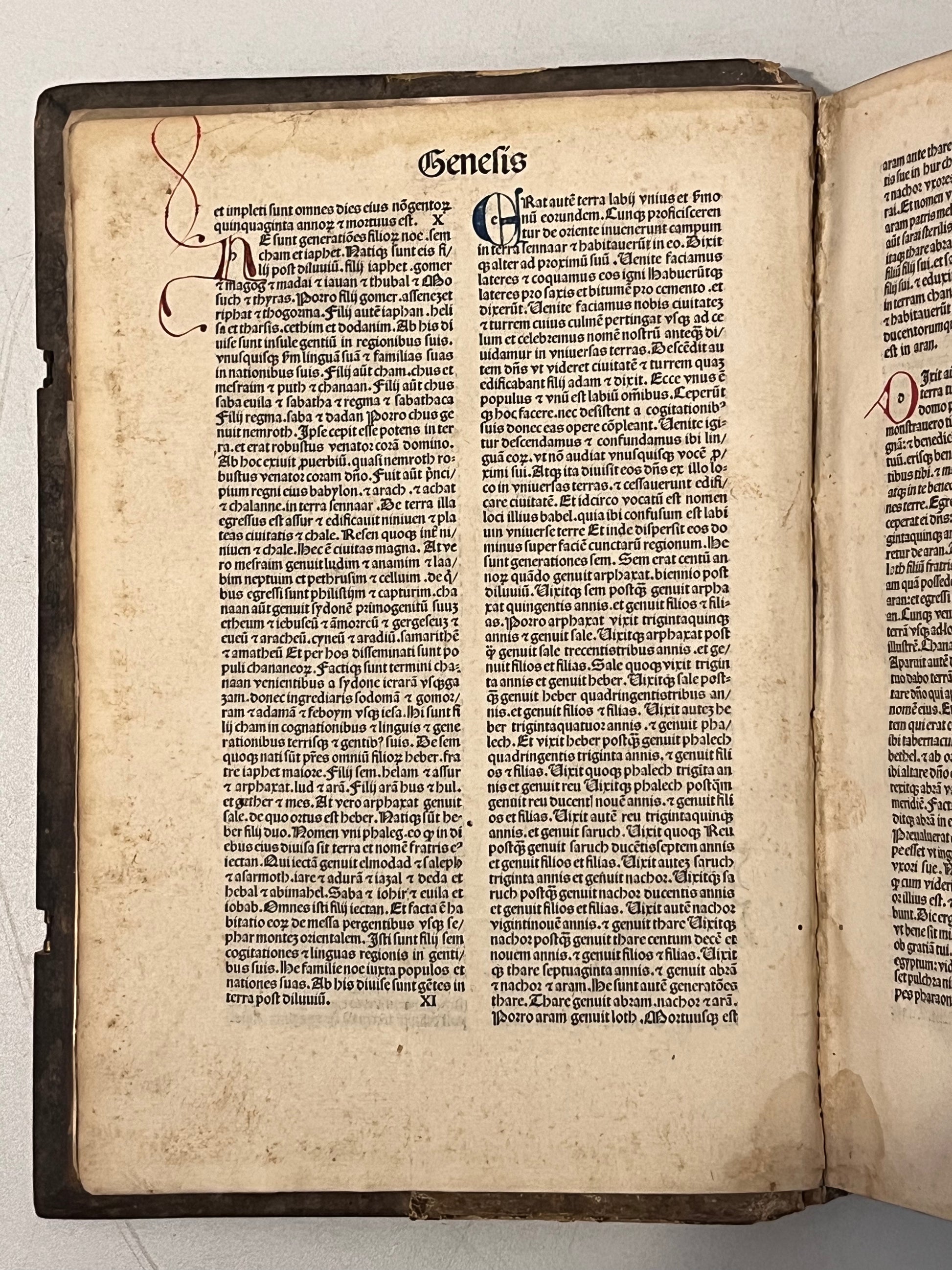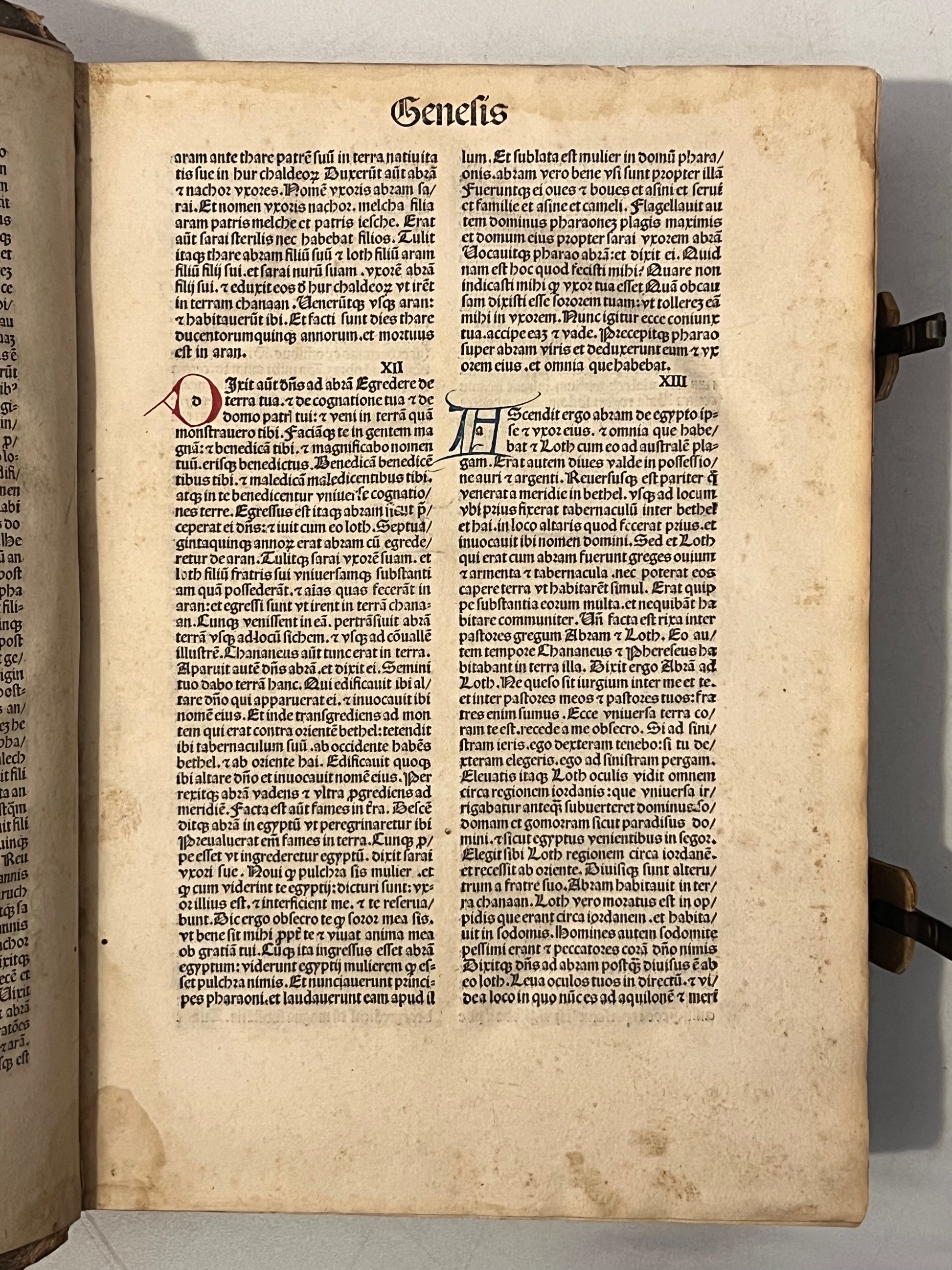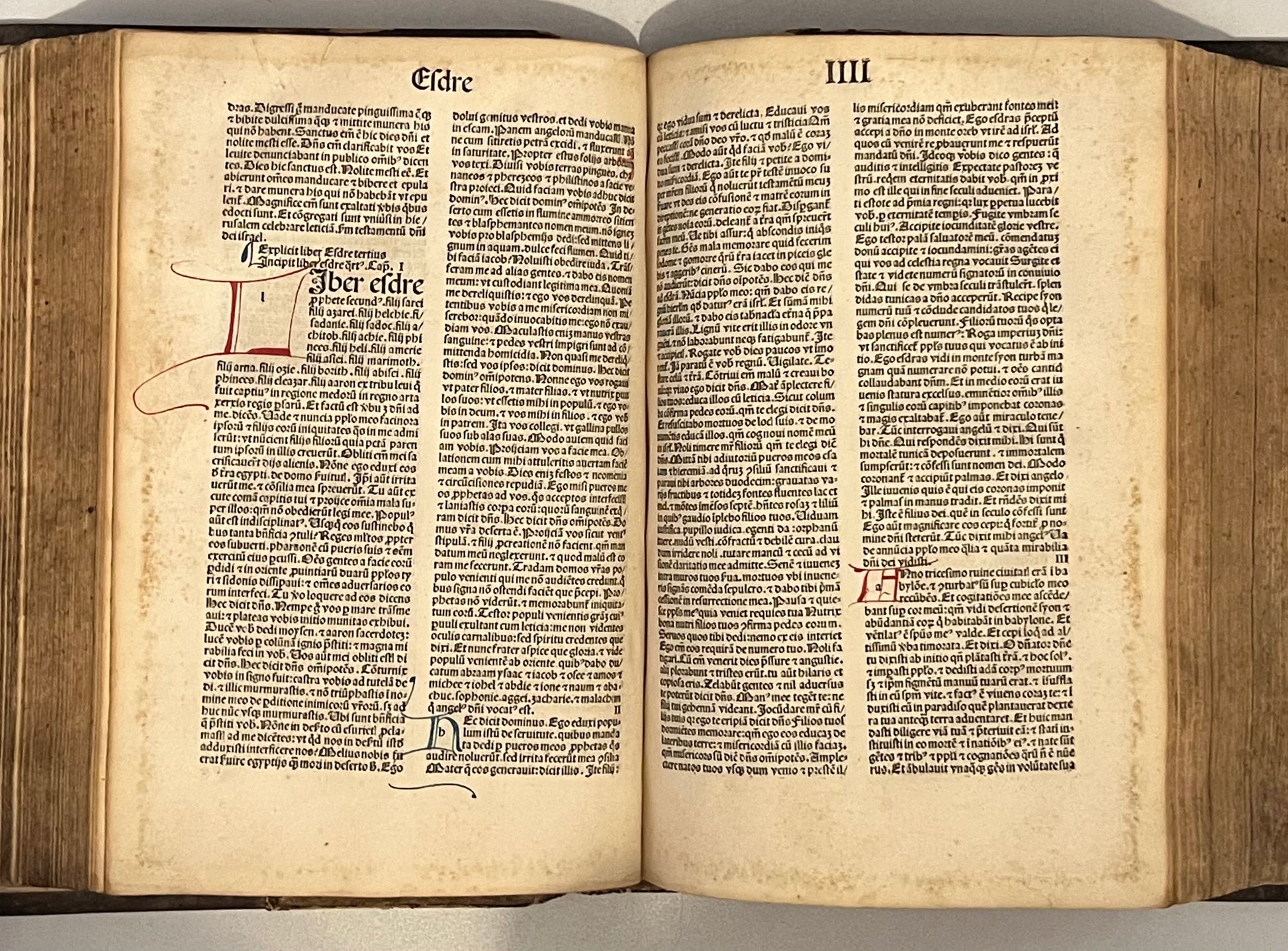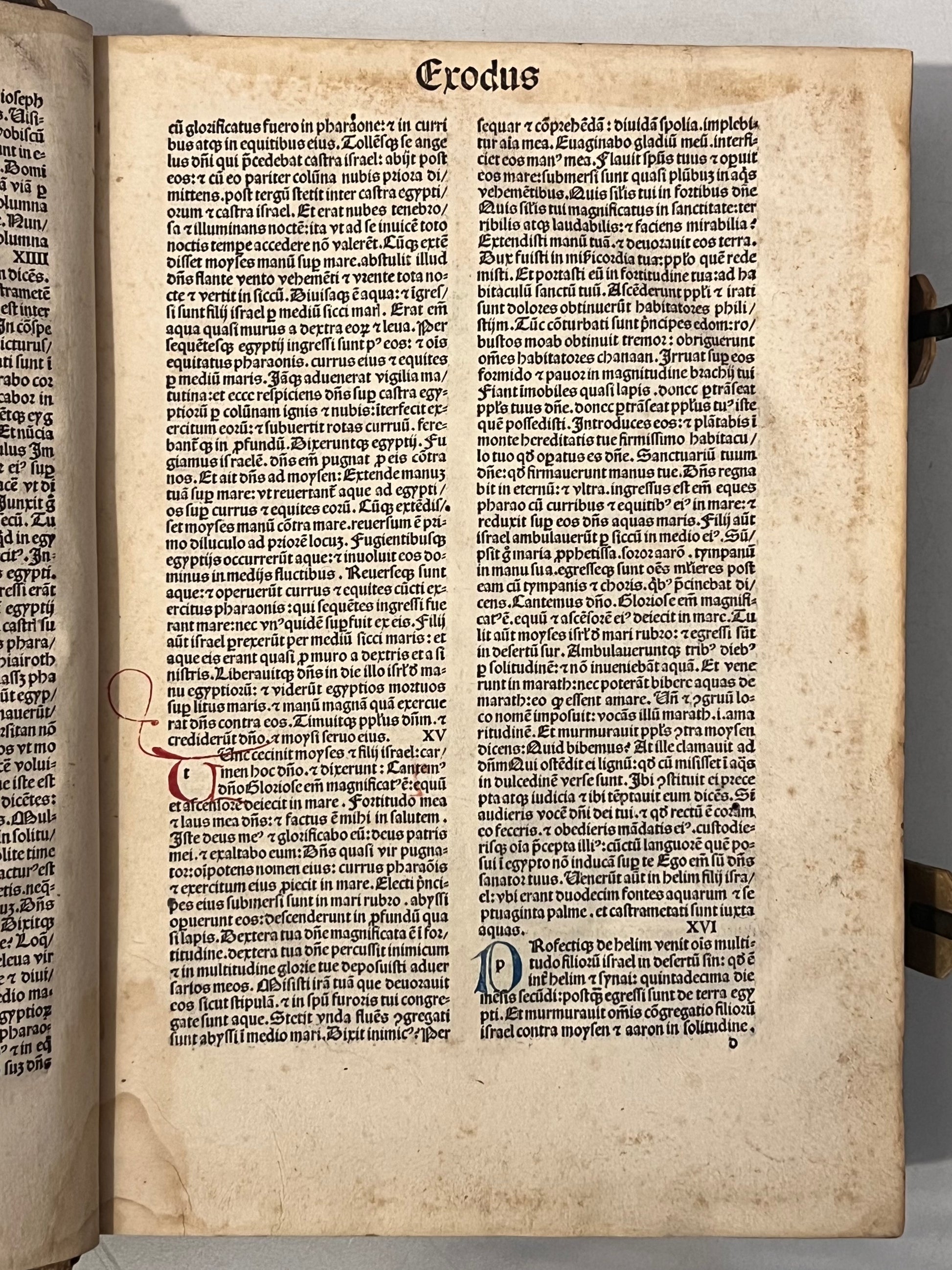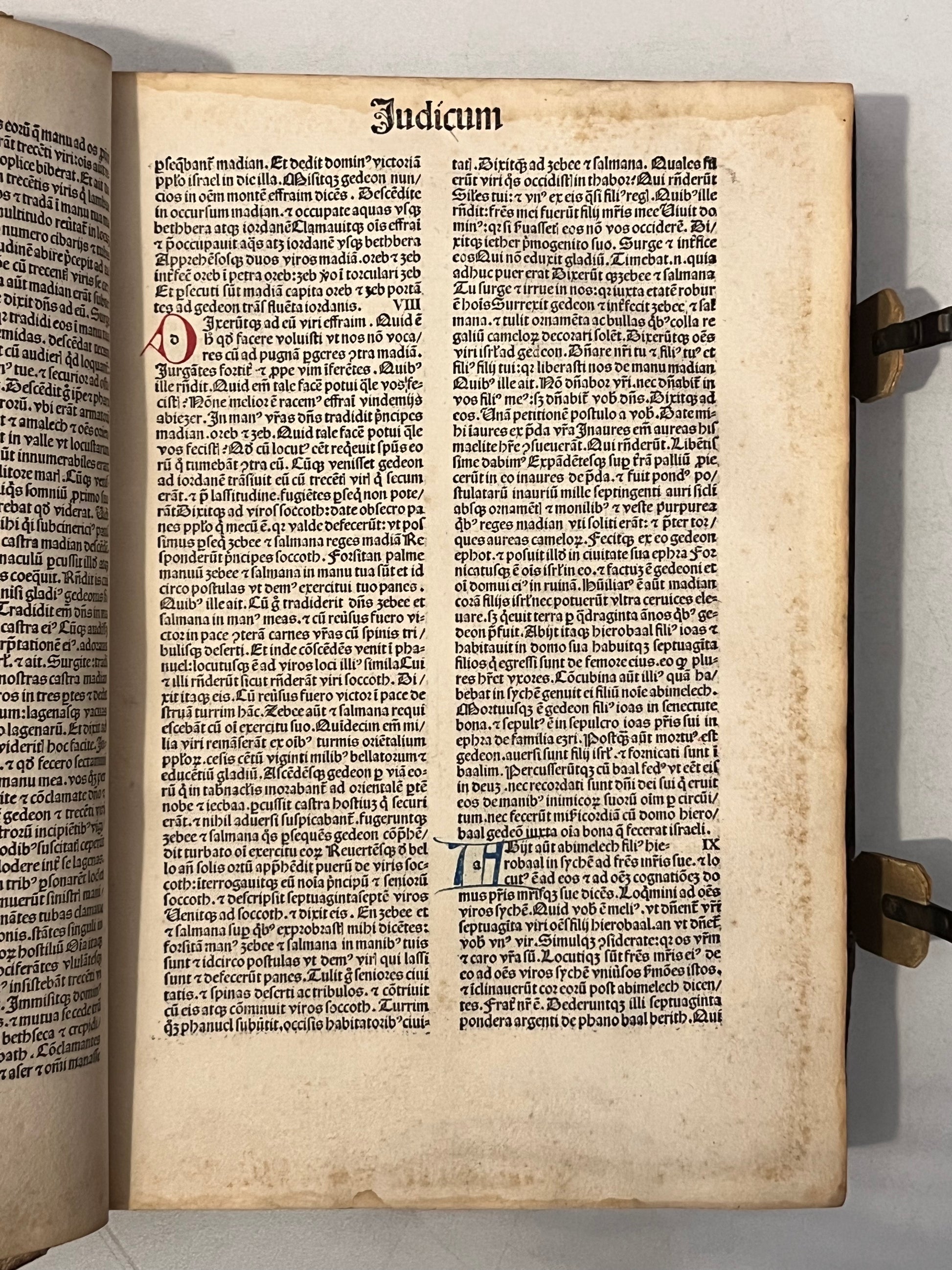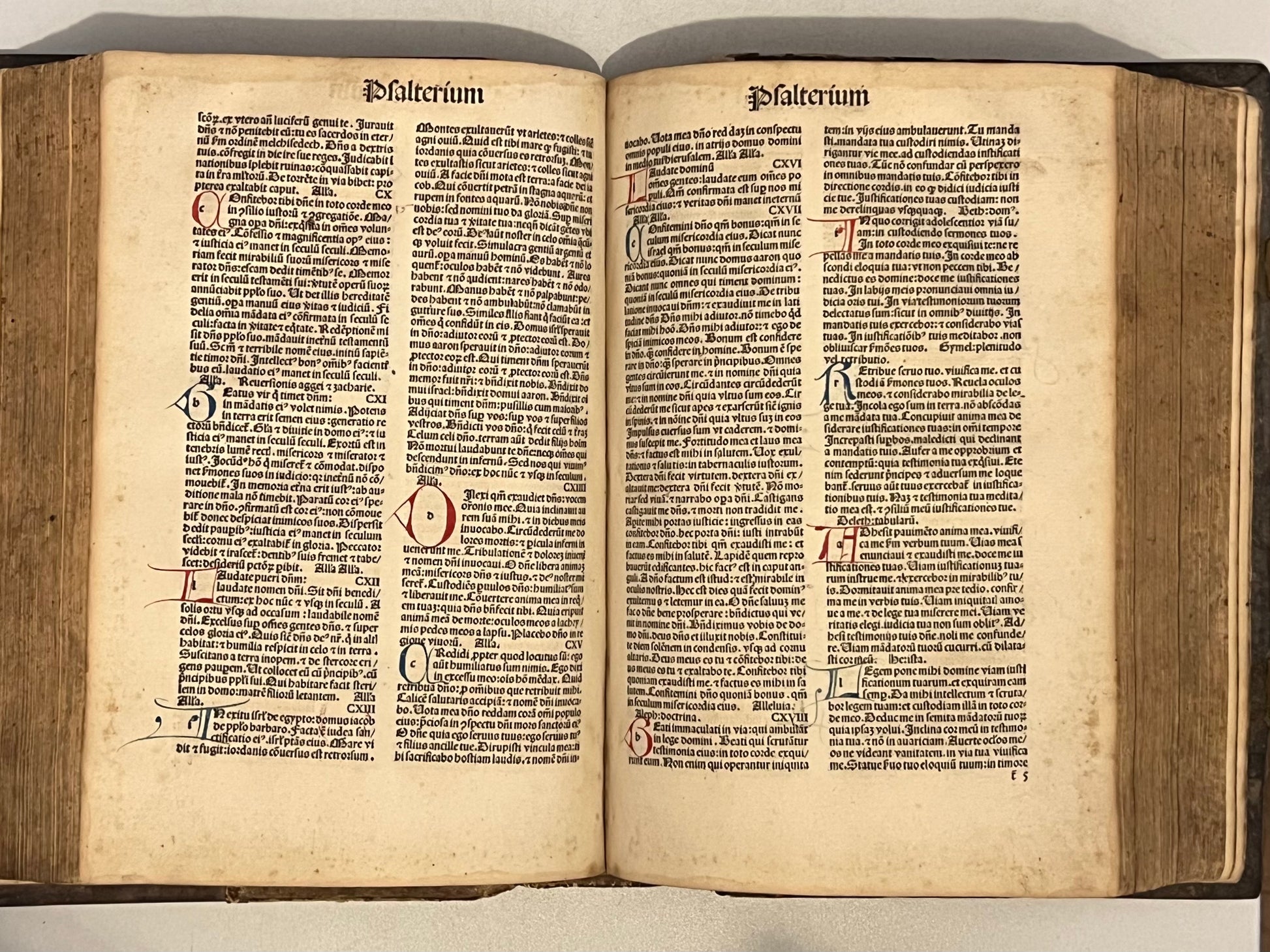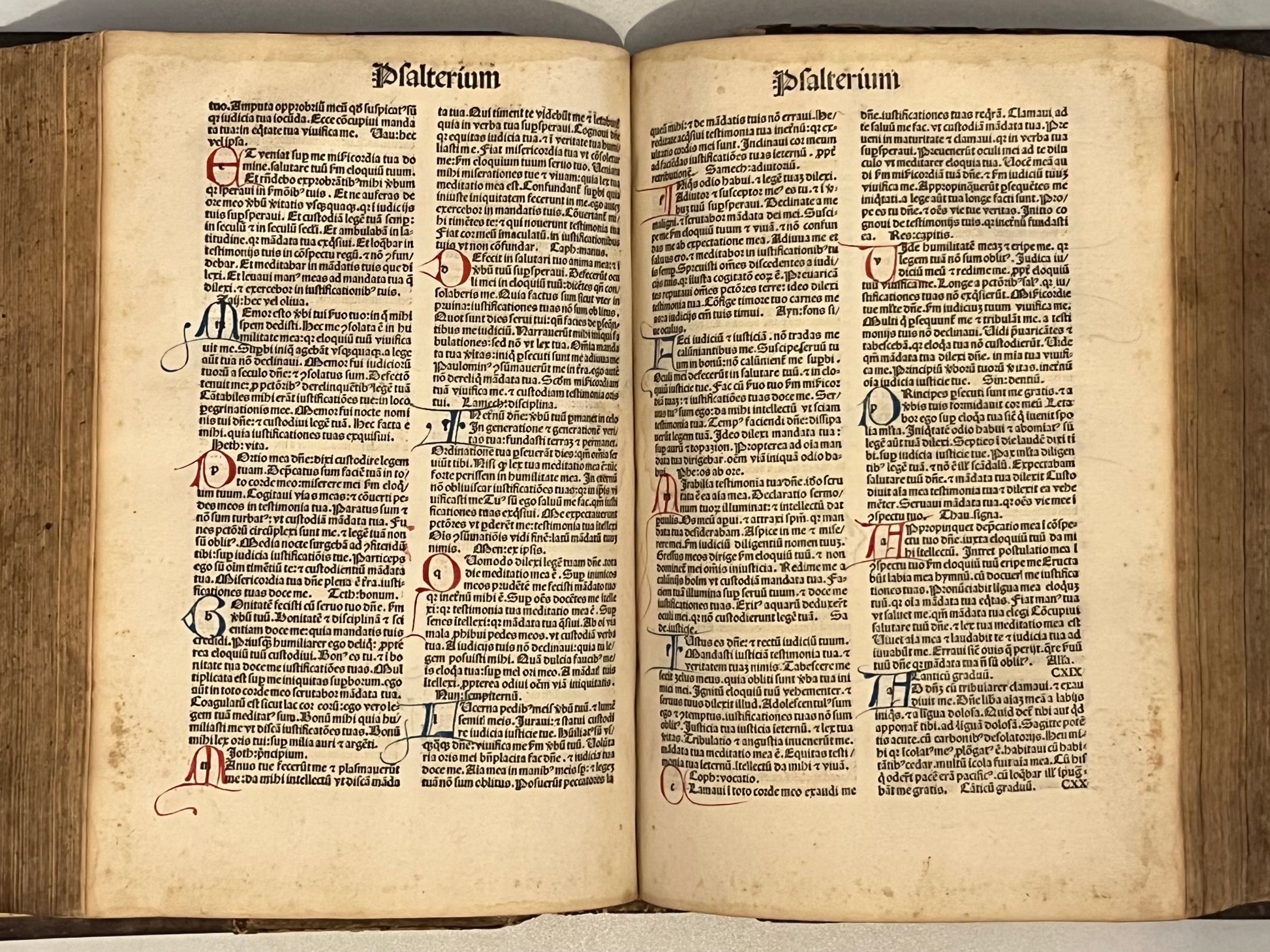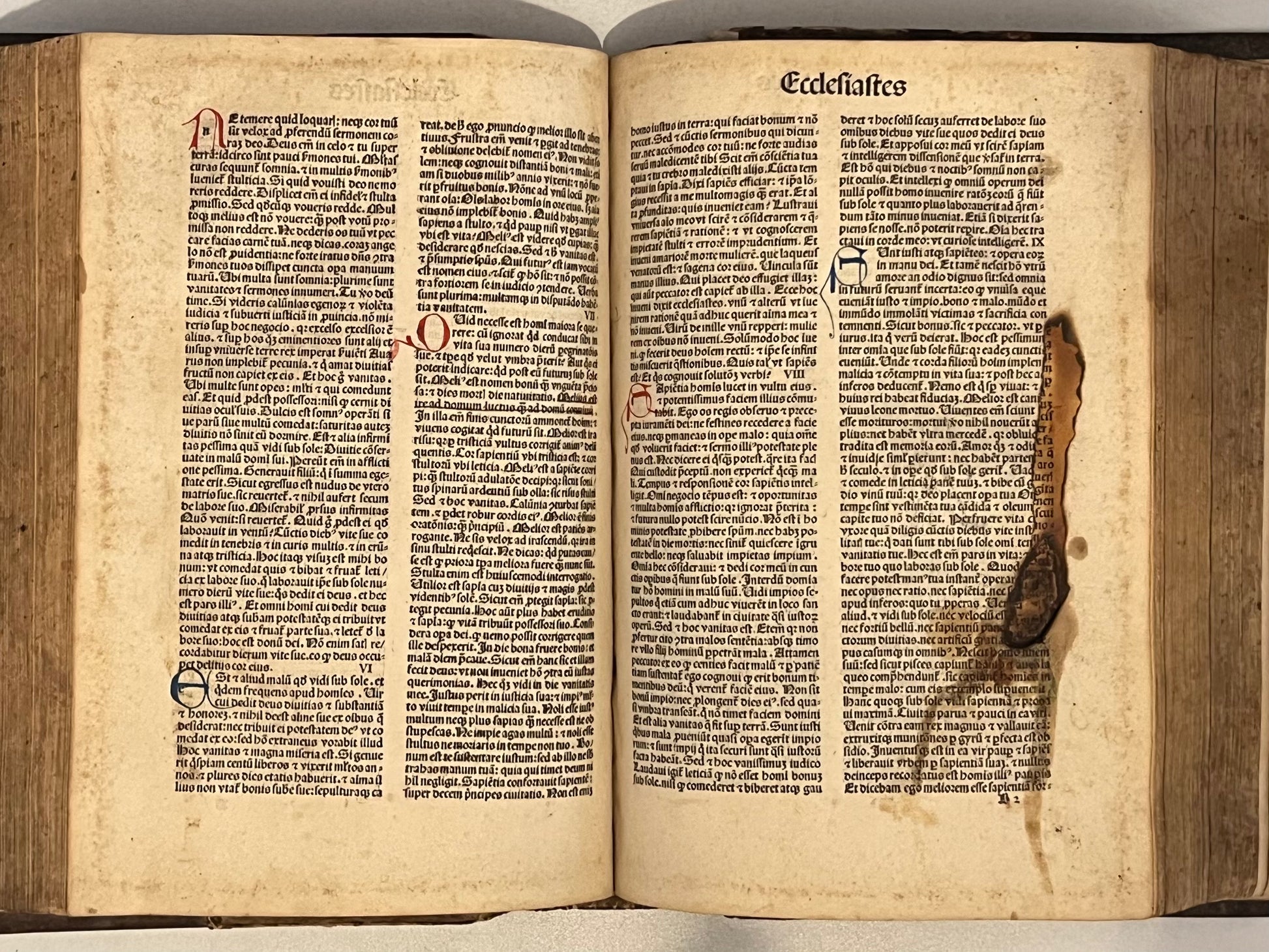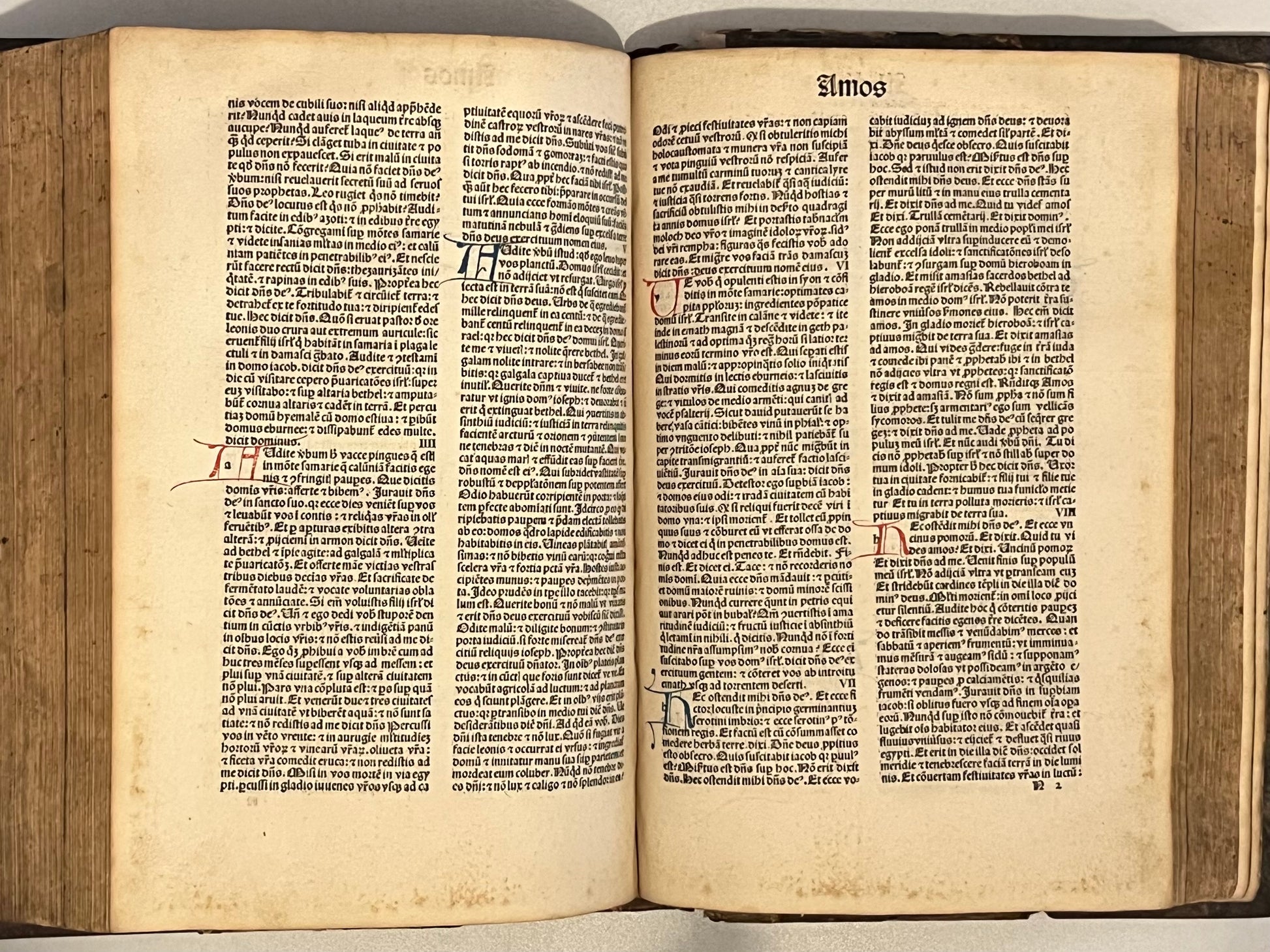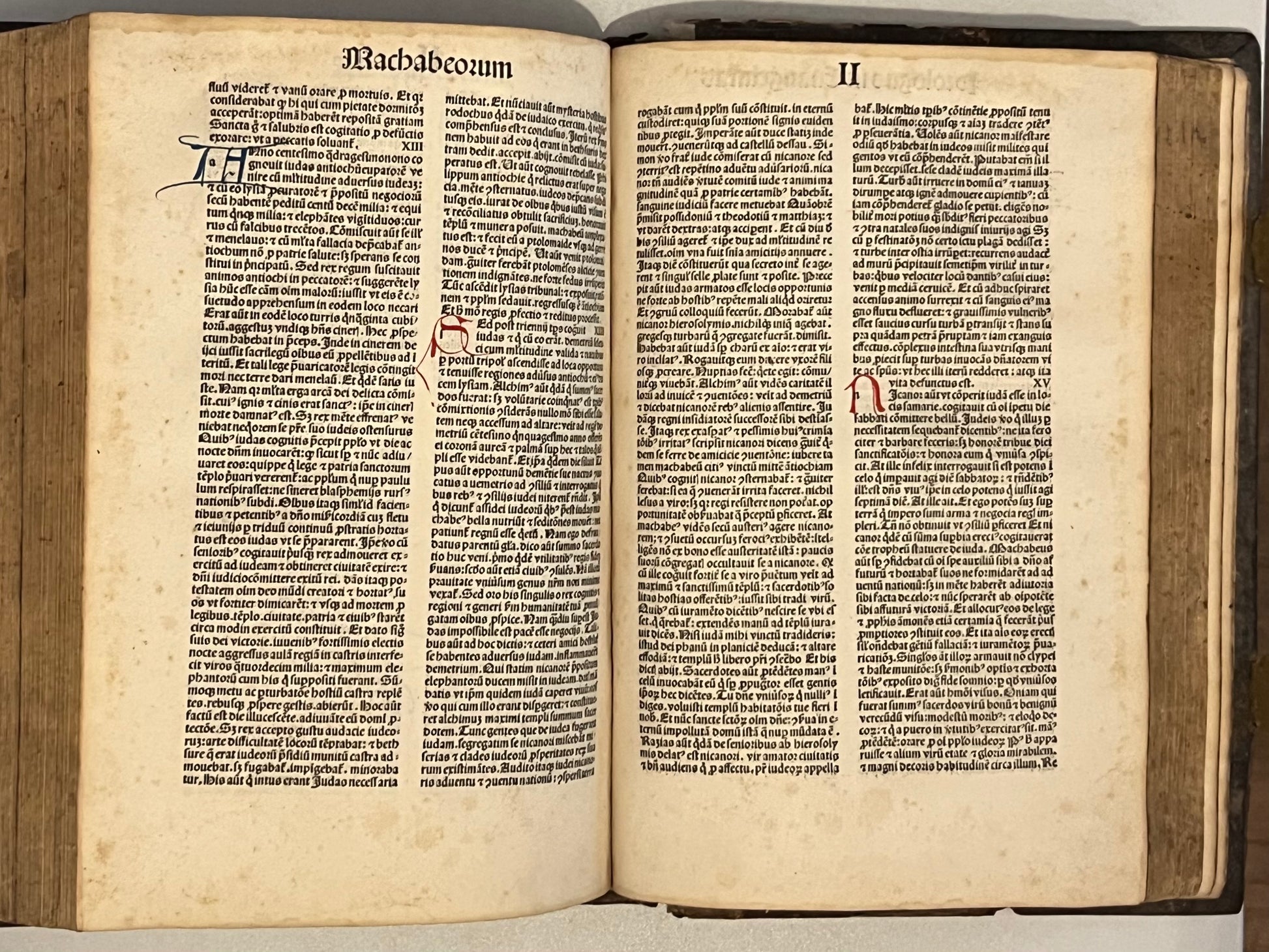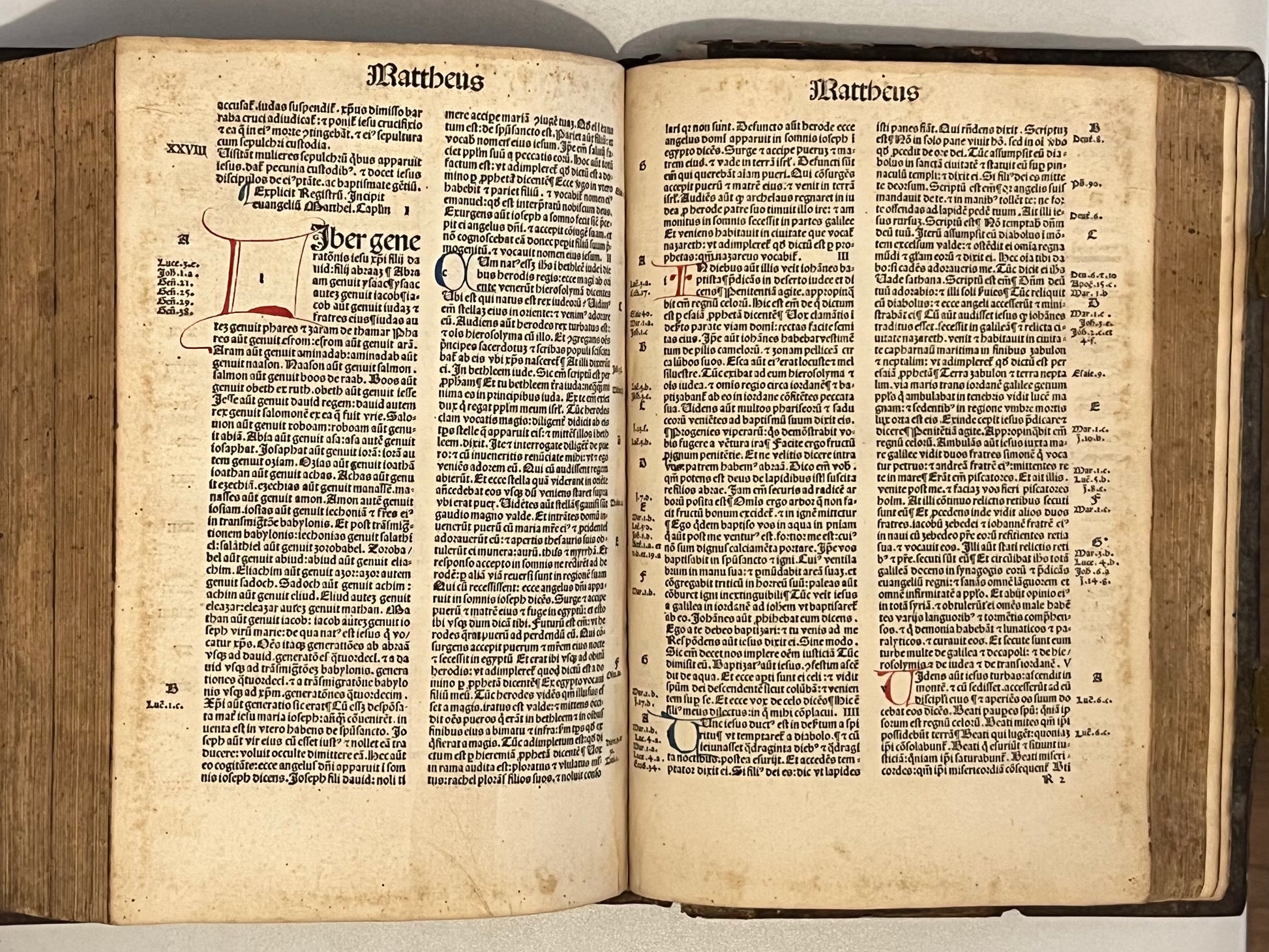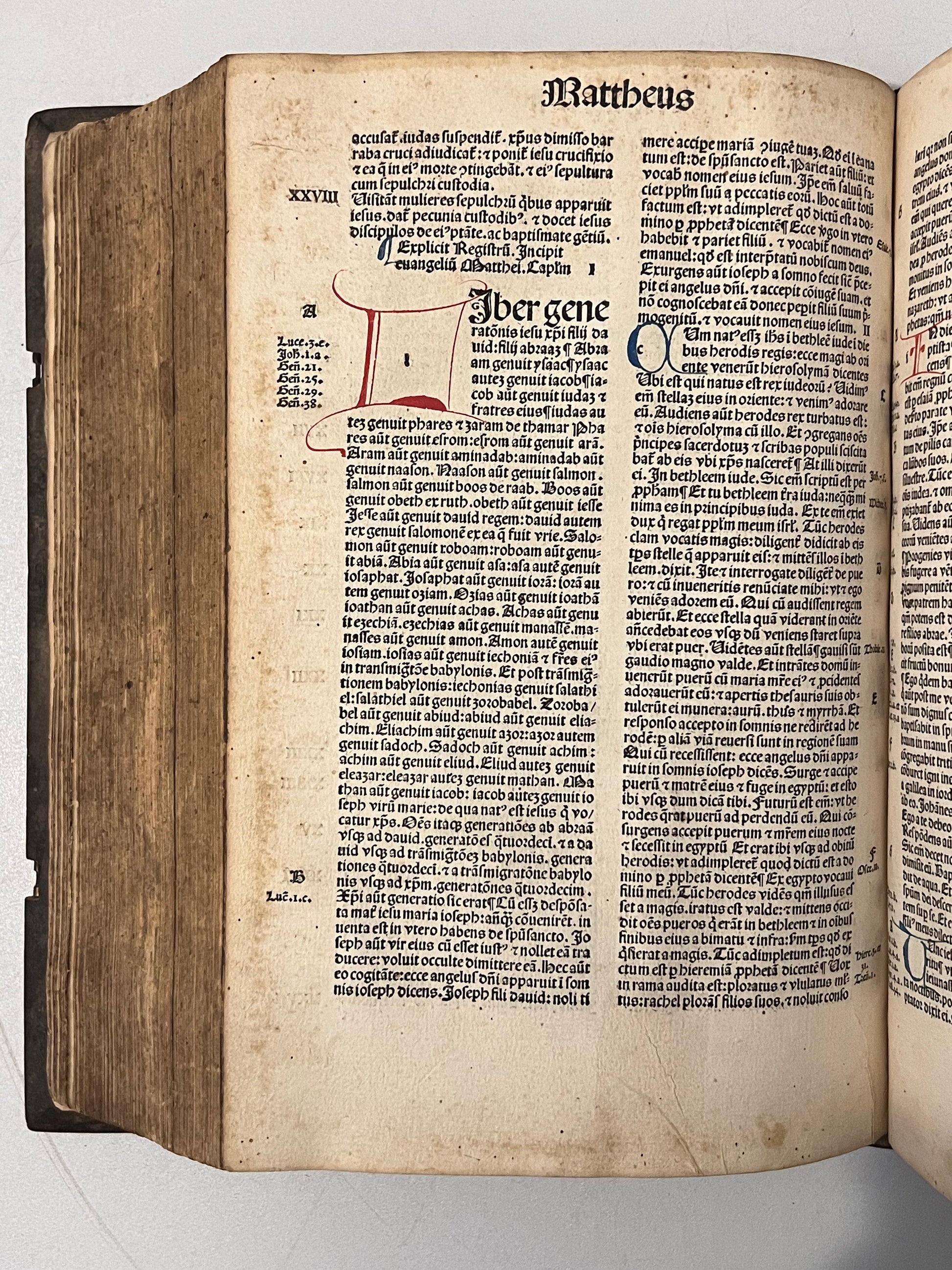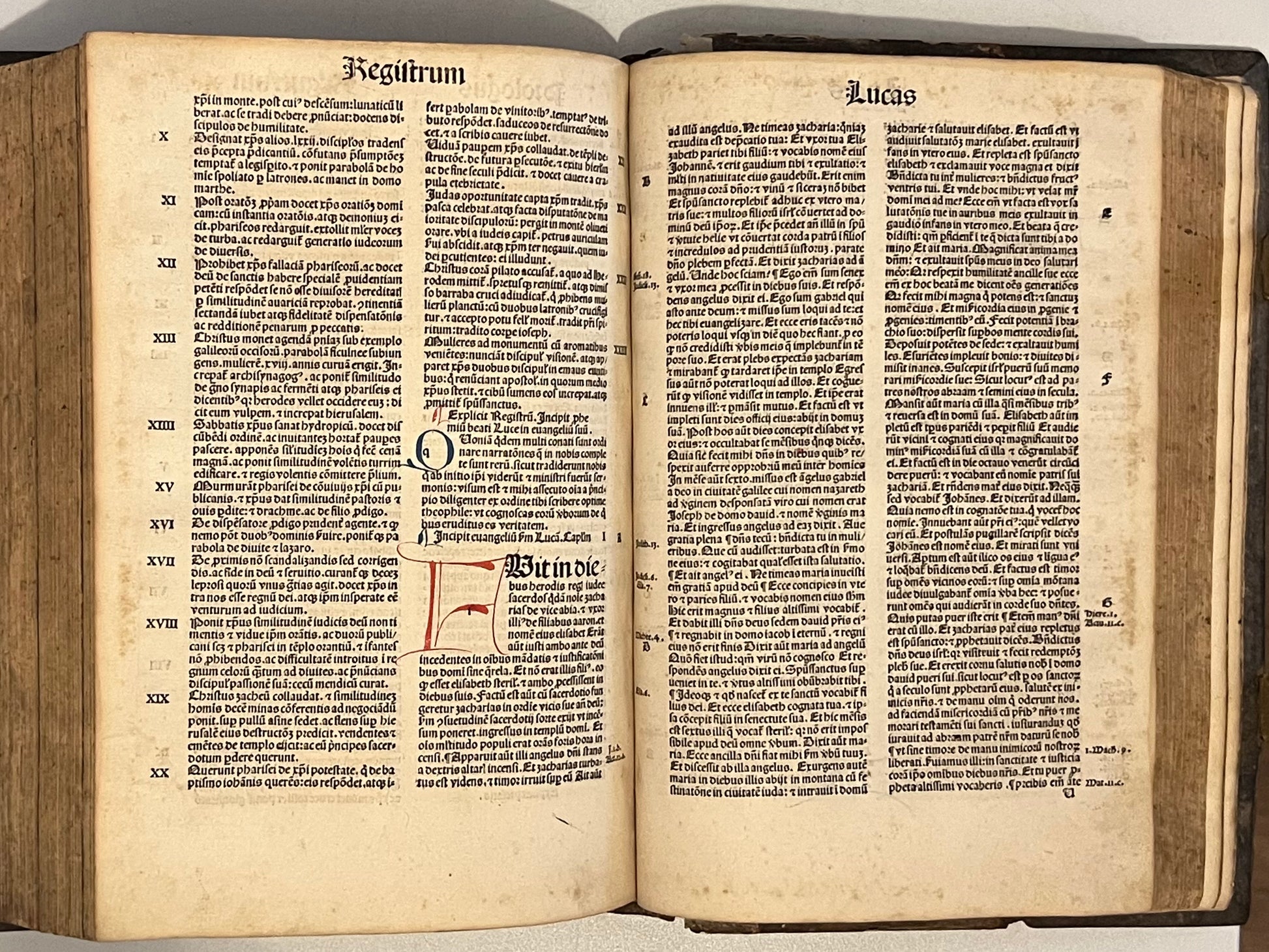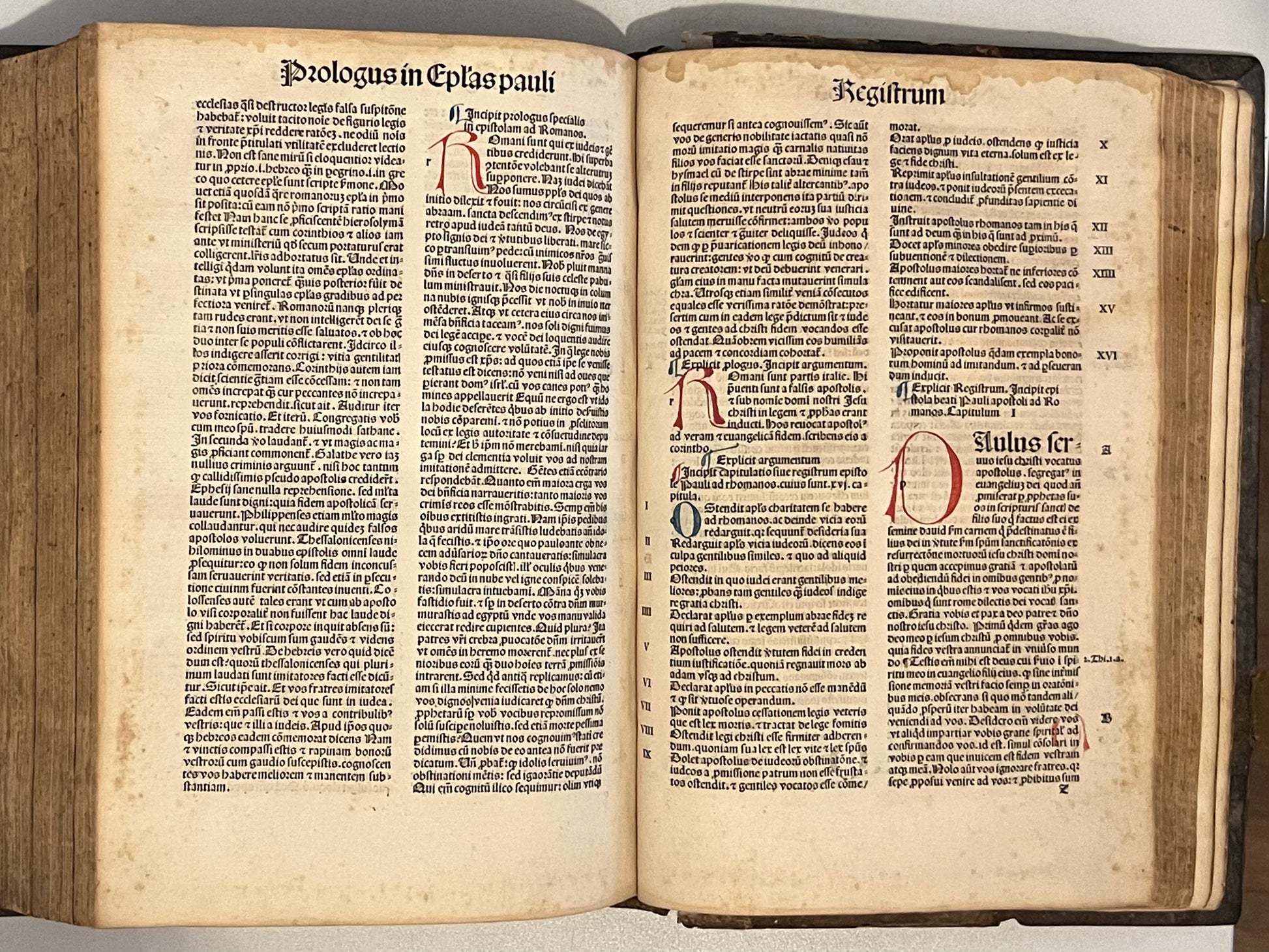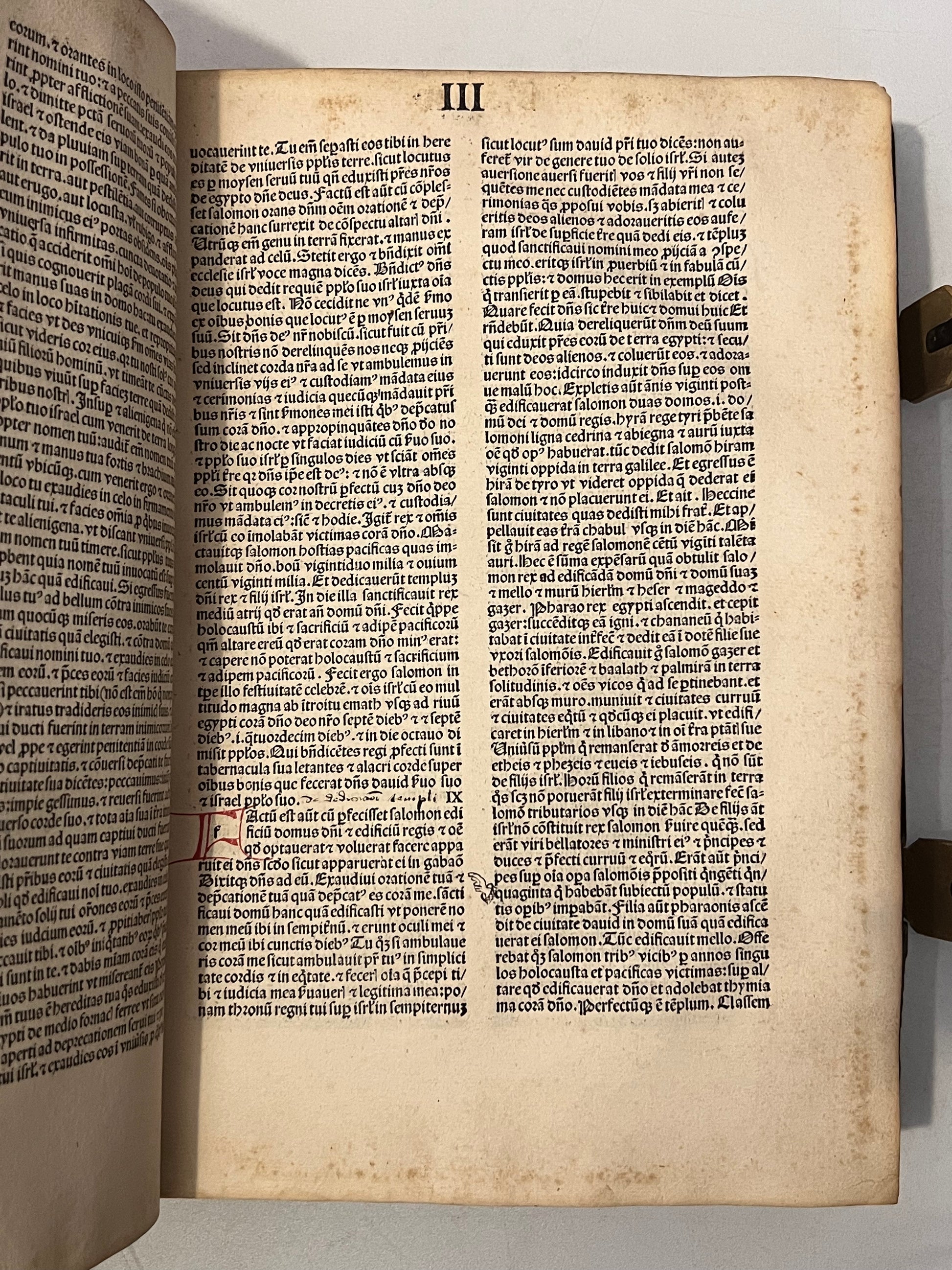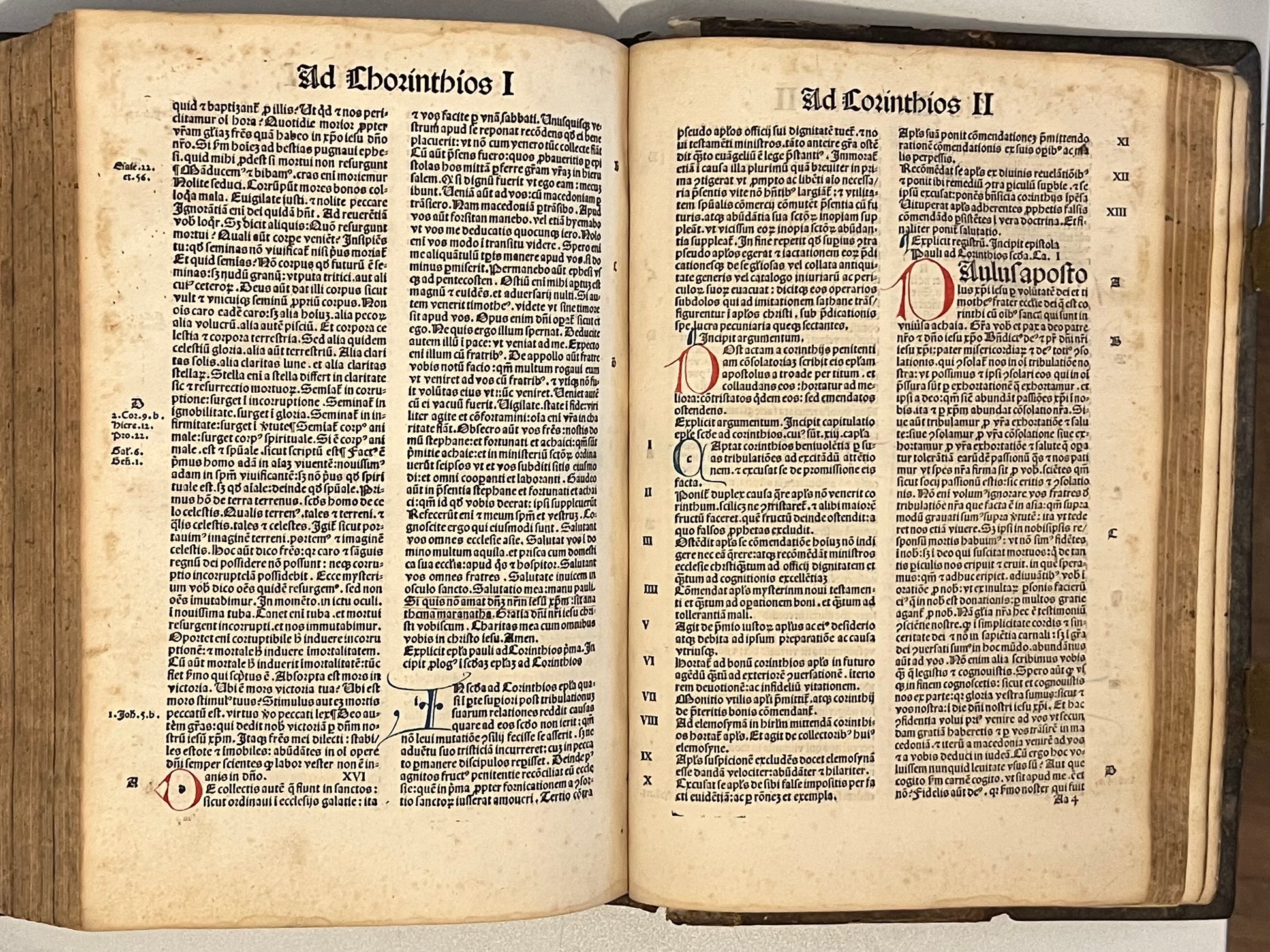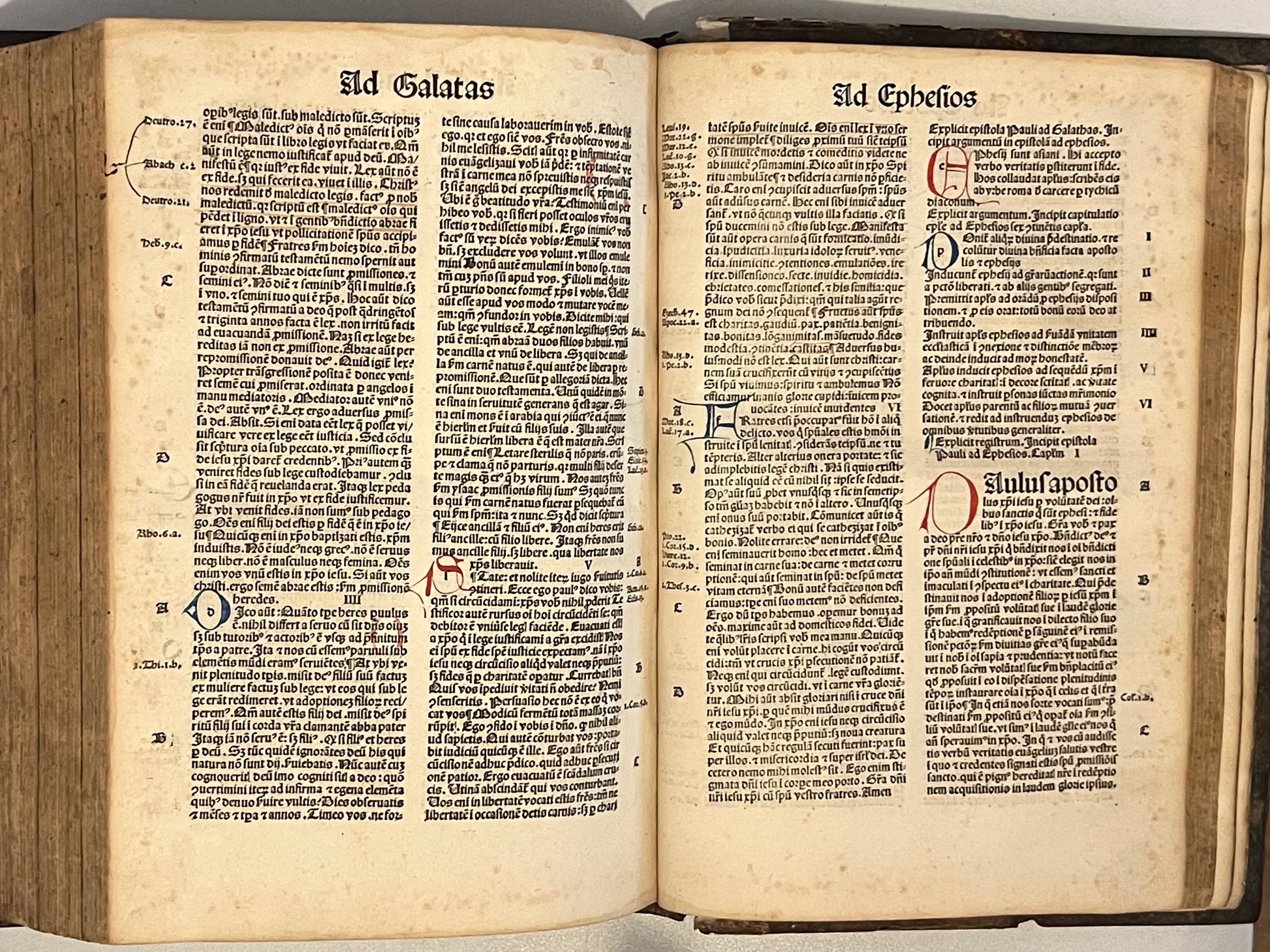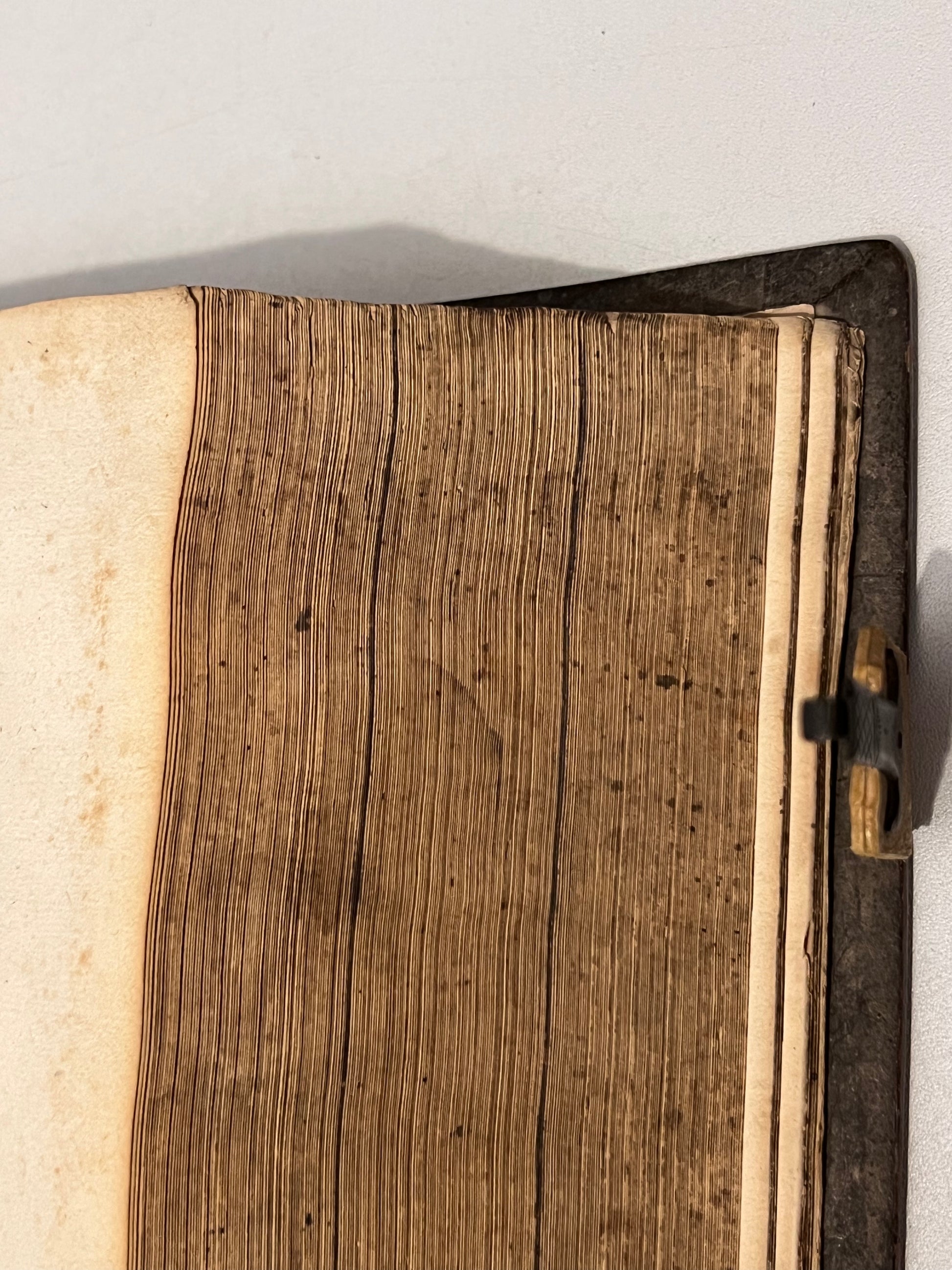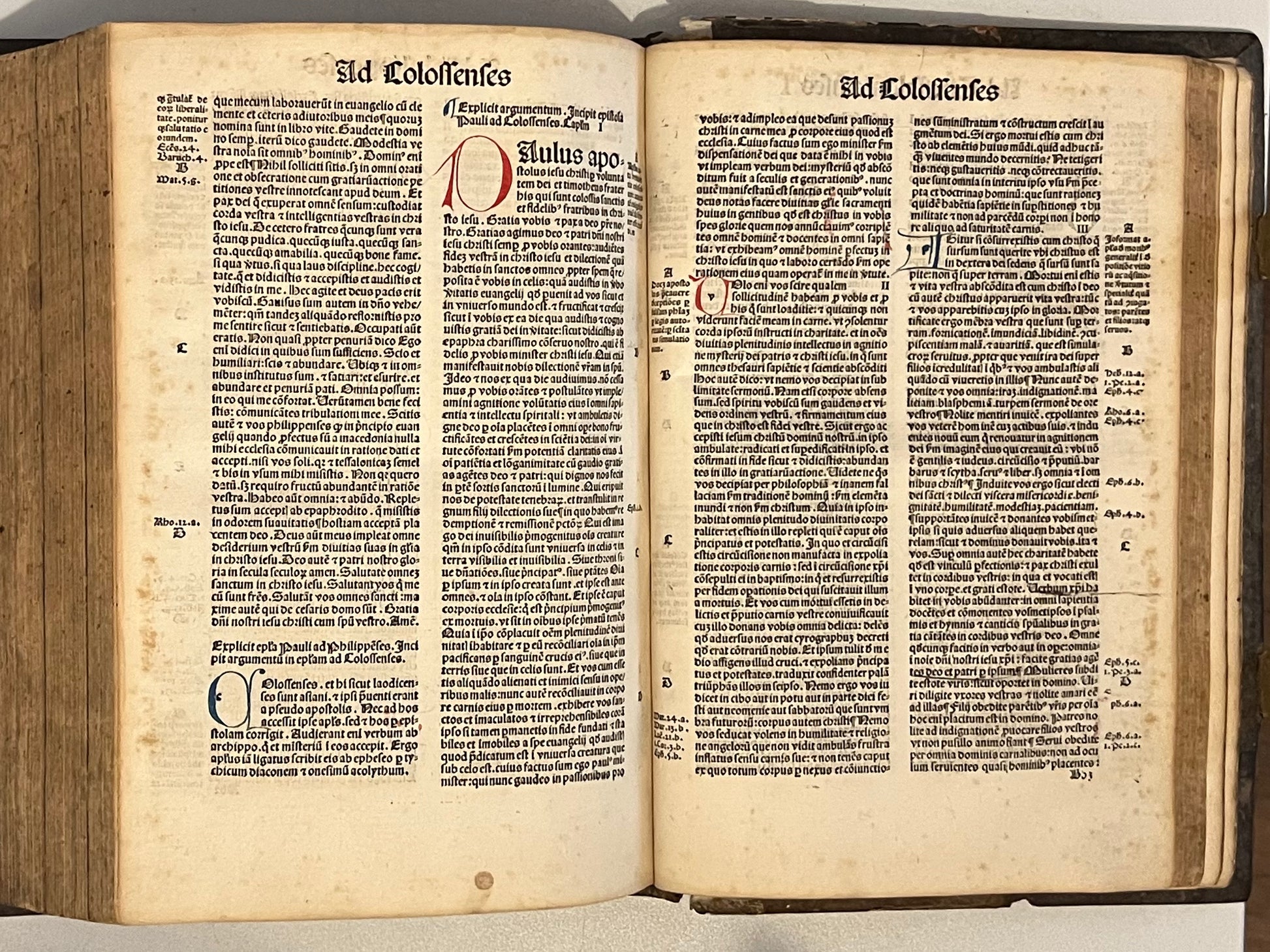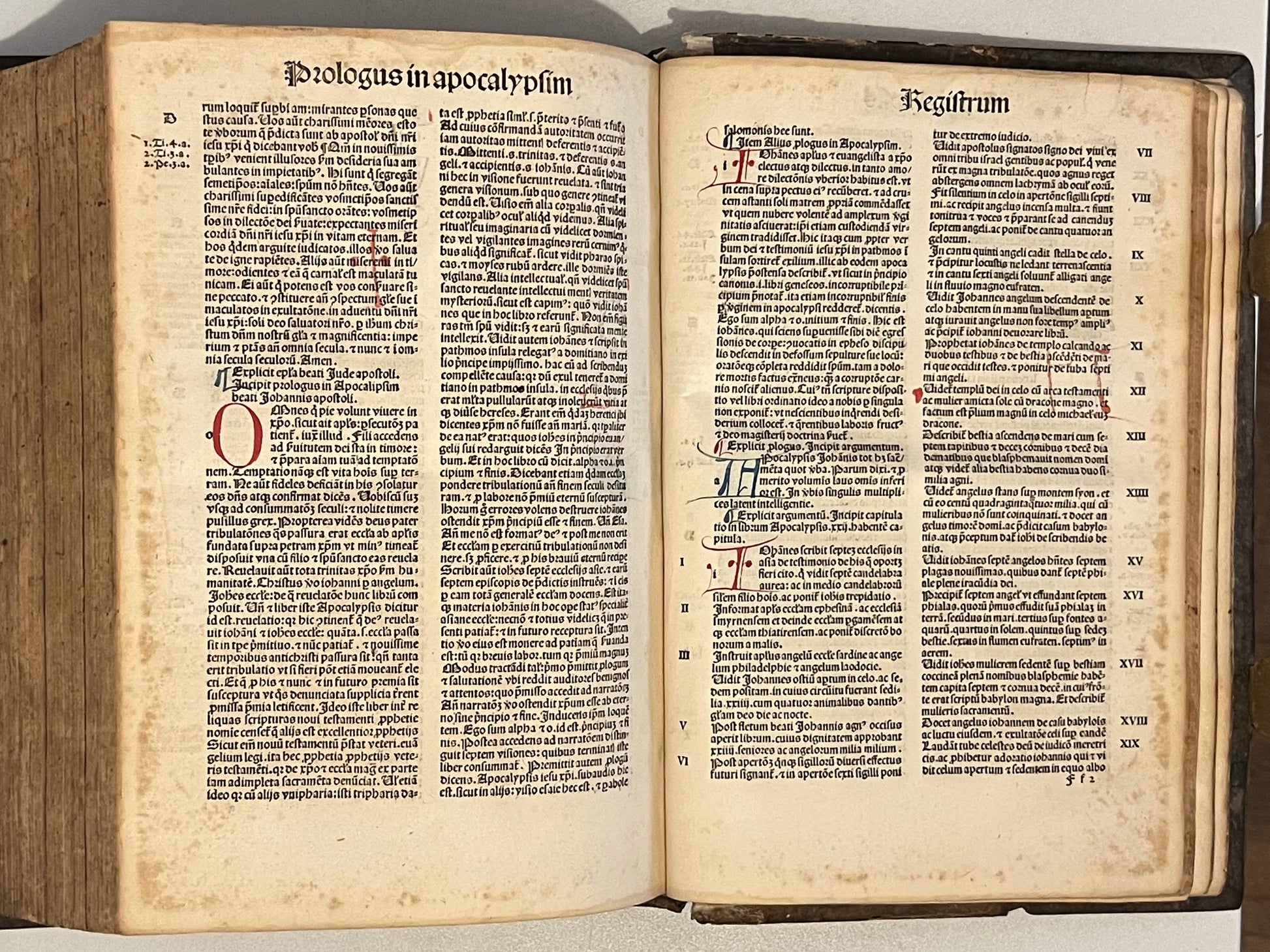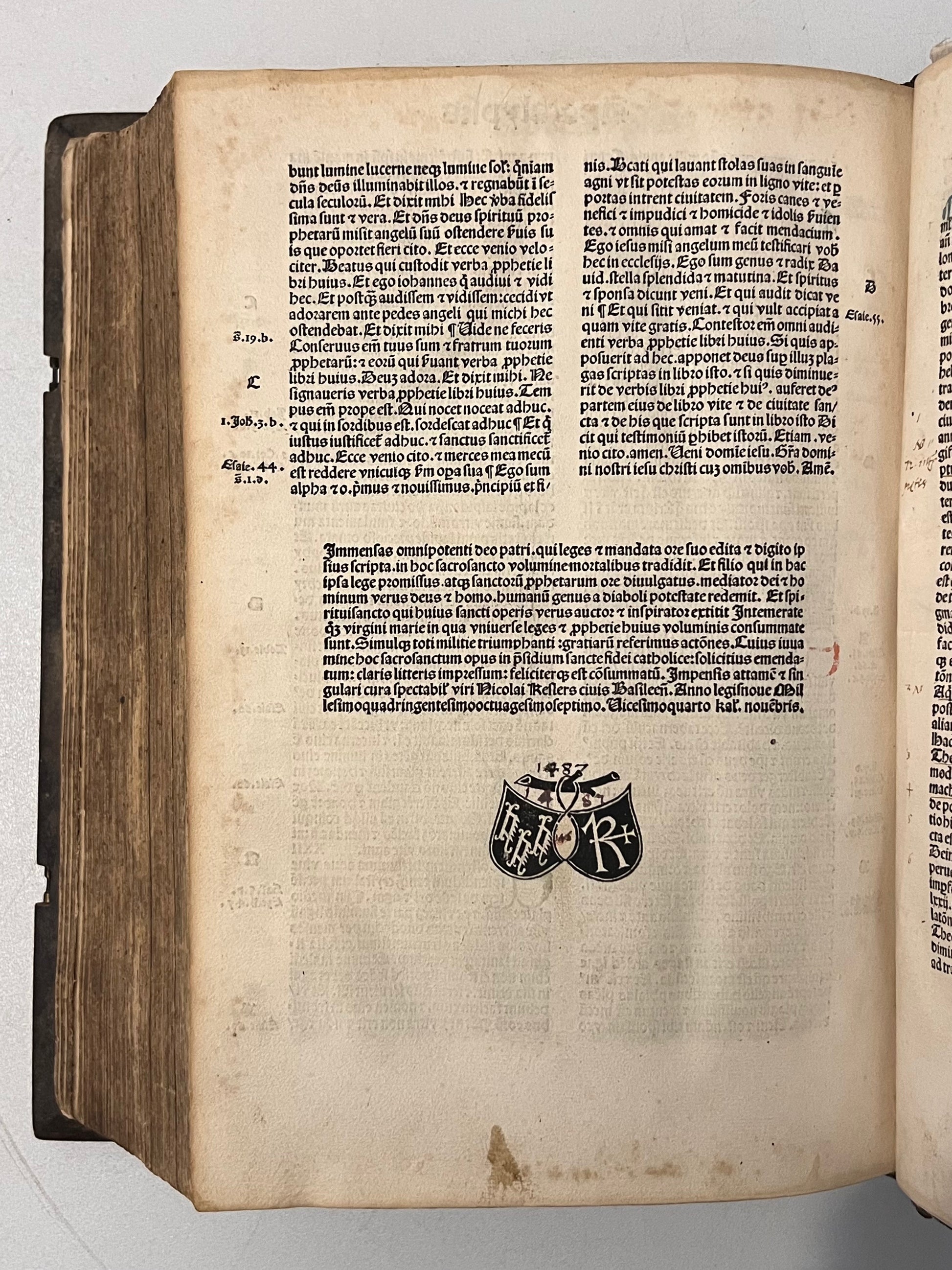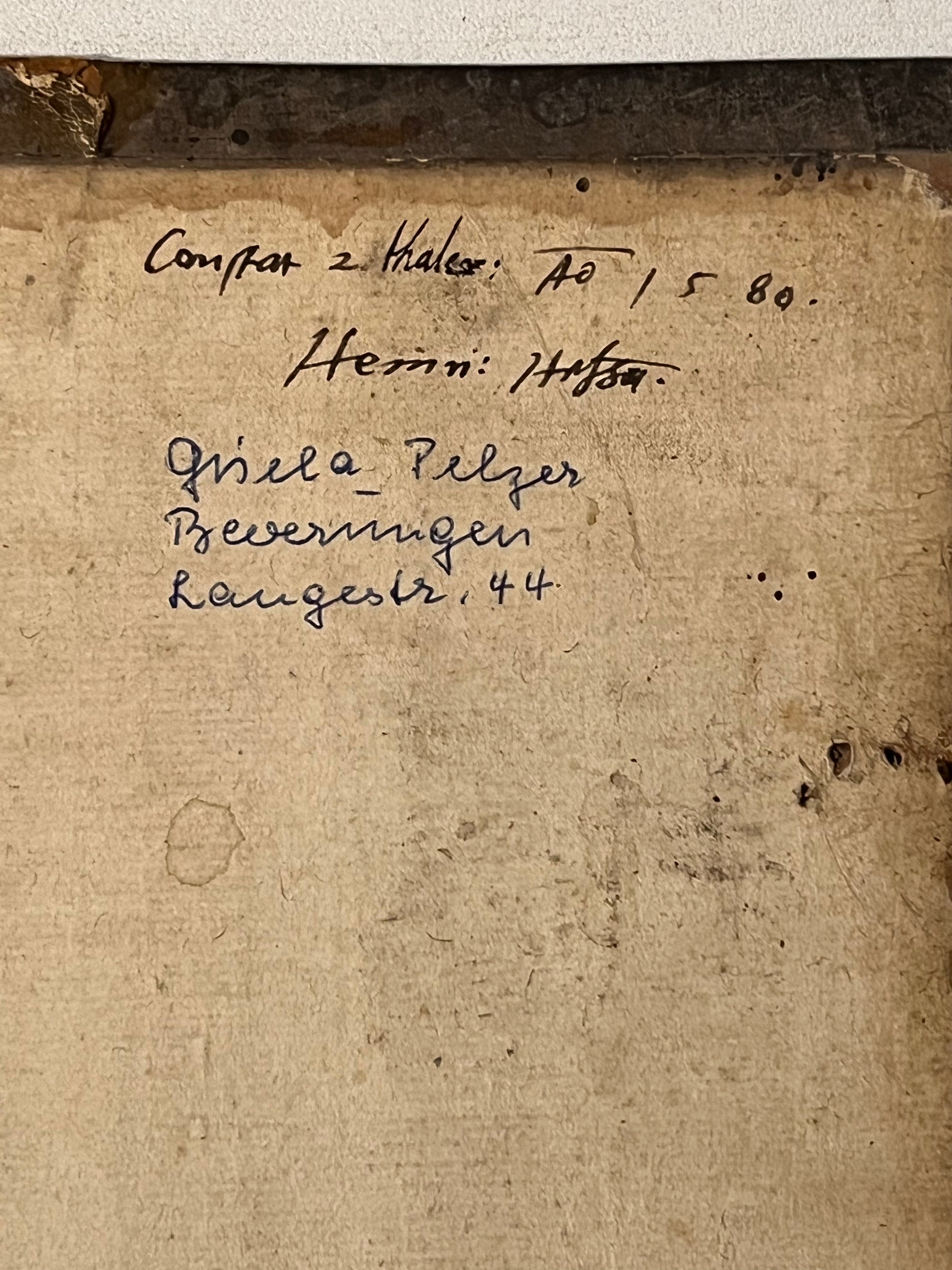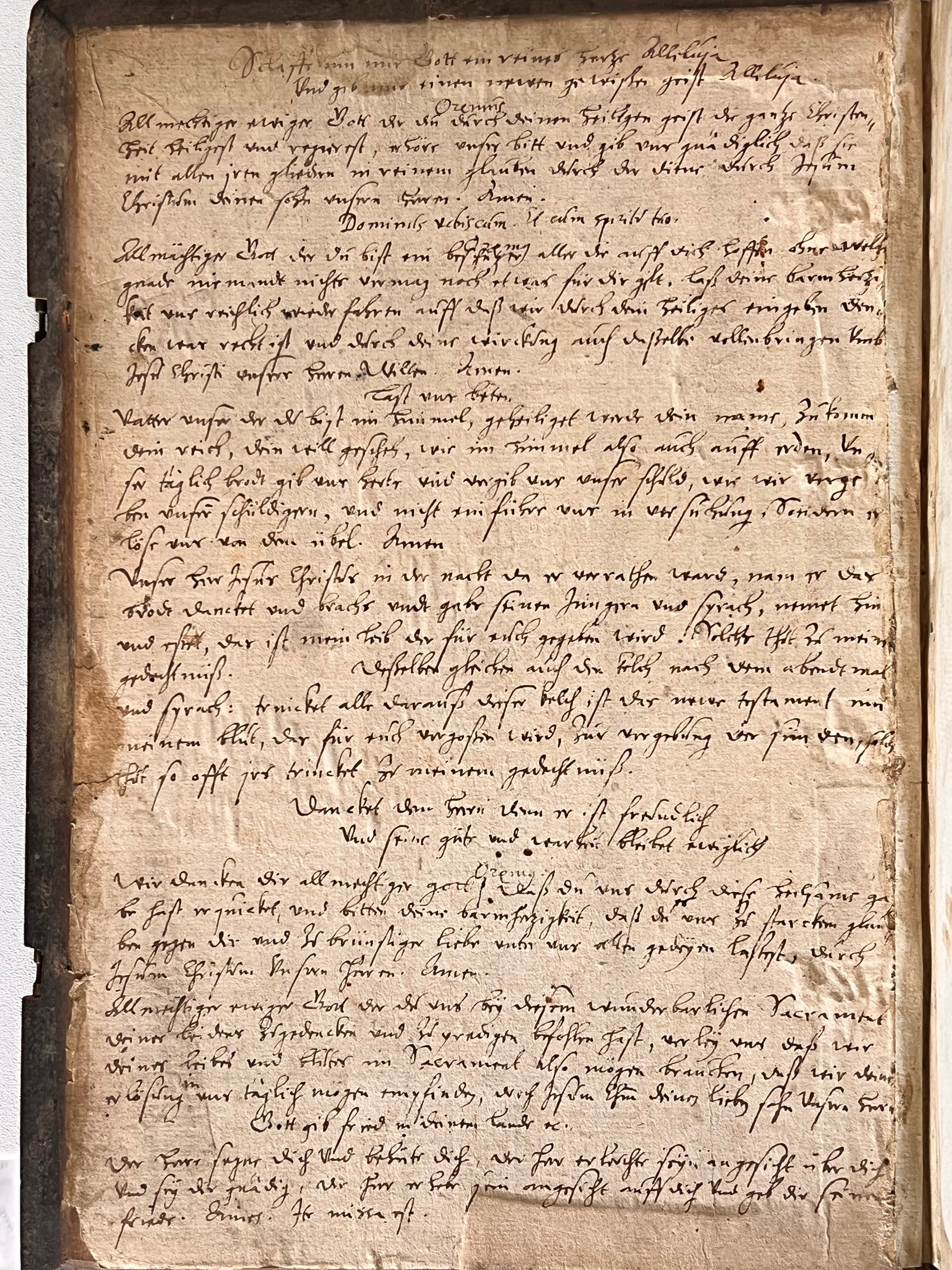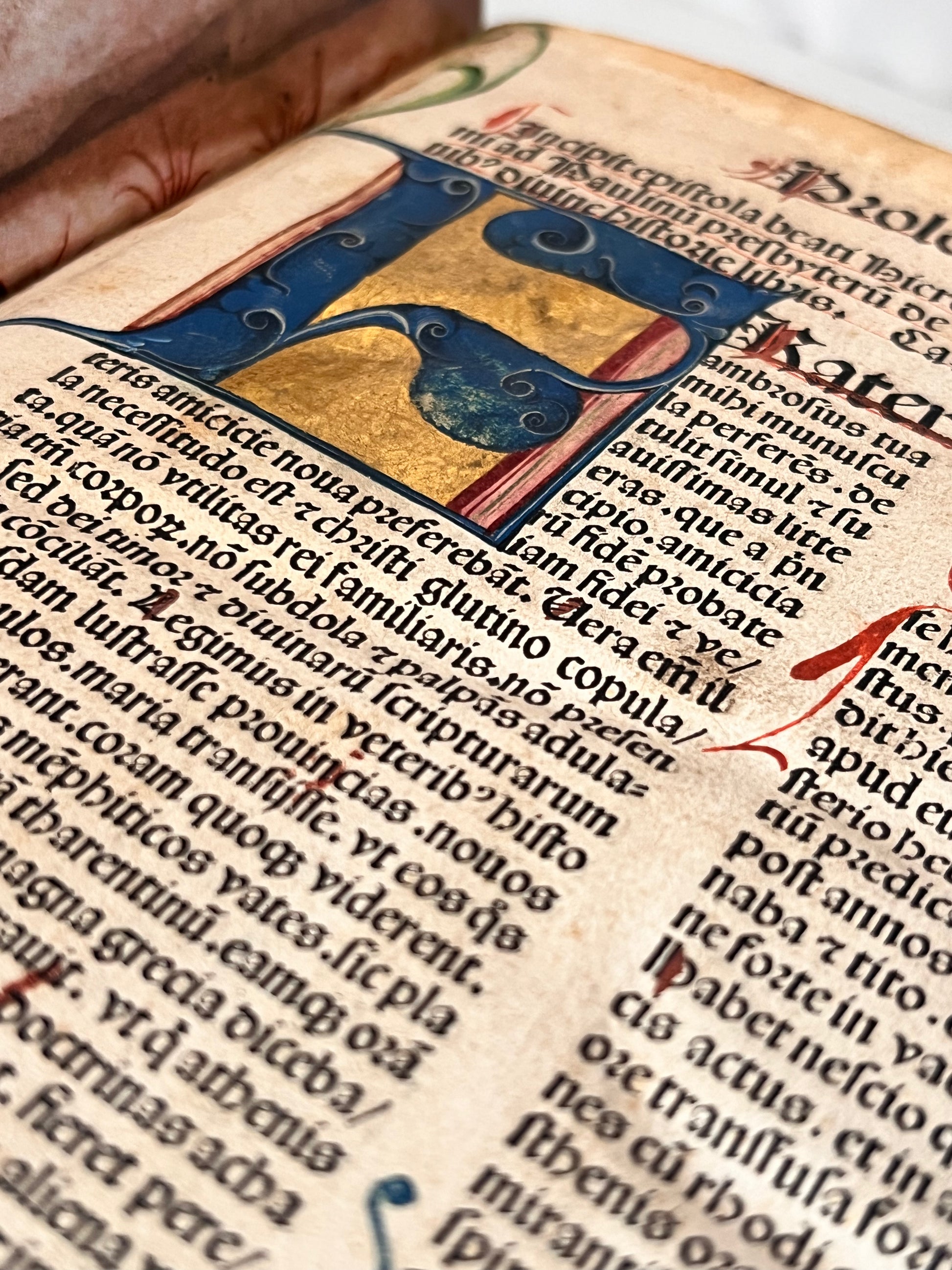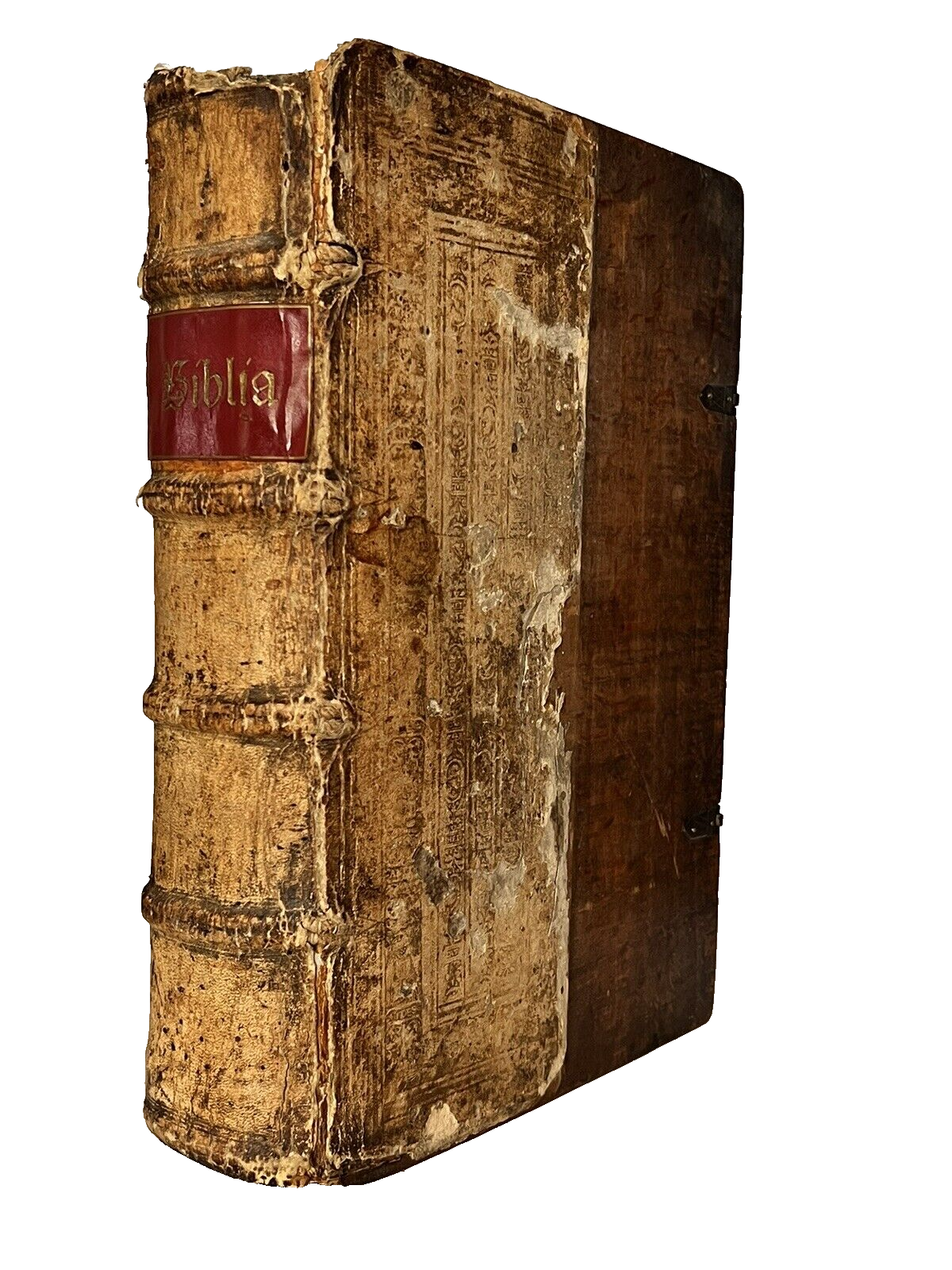Biblia Sacra 1487 Incunable Illuminated Bible
Biblia Sacra 1487 Incunable Illuminated Bible
Couldn't load pickup availability
A MASTERPIECE OF EARLY PRINTING: THE FIRST EDITION OF KESSLER'S BIBLE, A TESTAMENT TO THE ARTISTRY AND INNOVATION OF THE INCUNABULA PERIOD, WITH DIRECT LINKS TO THE PRINTING OF THE GUTENBERG BIBLE IN BOTH STYLE AND FORMAT.
-------------------
A beautiful incunable Bible, the first edition of Kessler's Bible, finely rubricated throughout the entire text repeating in red and blue, with a very fine entrance illuminated capital. Lacks original title, provided in facsimile, else collates as complete! Very rare to encounter textually complete in such an excellent binding, with contemporary marginalia with some small manicules, etc.
Berthold Ruppel, who worked with Gutenberg in the production of the Gutenberg Bible at Mainz and testified on his behalf in the 1455 suit brought by Johann Fust, is generally credited with the introduction of printing to Basel. Bernhard Richel, of Ehenwiler, was first mentioned in Basel documents in 1472, his first dated book was printed in 1474, and he died in 1482. On 25 June 1473 he was mentioned as a business partner of Berthold Ruppel. Richel and Ruppel cooperated on several publications, including the Bible, and a 1477 edition of Nicolas de Tudeschis, Lectura super V libris Decretalium (Goff P-45), in which Michael Wenssler was a third partner and which seems to have caused financial difficulties for all three printers.
Nikolaus Kessler (c.1445-1519), the printer of this Bible, started his career with Bernard Richel. He received the Bachelor of Arts degree in Basel. First he worked as a bookseller for the printer Bernhard Richel at book fairs in Leipzig, and married his daughter Magdalene. After the death of his employer Bernhard Richel in 1482, he took over his printing shop. Kessler focused on Latin editions notable for skilfully executed ornaments. These were especially present in both this first edition of Kessler's printing of the Bible, and also his printing of the Letters of St. Jerome which featured one of the earliest Albrecht Durer woodcuts. Like several other early printed Bibles, this one takes both its text and its format from the tradition established by the Gutenberg Bible.
We can also see with this Bible the inheritance of the manuscript tradition of Bible production from the previous few centuries of illuminated manuscripts. This is a practice which sadly died out not too long after the incunable period, and illuminated incunabula are becoming increasingly scarce on the market, this being a truly excellent example with many beautifully rubricated capitals alternating between red and blue throughout, with a beautiful entrance initial illuminated in gold and painted.
-------------------
Provenance:
Most likely originally purchased by a wealthy theological institution, likely in Germany, with (probably) two rubricators at work and a separate illuminator for the entrance Lombardi capital. There is very light and very neat contemporary marginalia, including some manicules, in places throughout the full text, in at least three different hands, thus indicating ownership by a theological institution, most likely a university as opposed to a monastery or otherwise.
Extensive manuscript entry to front pastedown written in German (and Latin), almost certainly early 16th century, continuing to be held in Germany during the reformation, most likely in Humanist / early Protestant circles, institutionally.
Inscription to rear pastedown dated 1580, with the first part illegible, quite possibly relating to the month of February, but with a name written of Heinrich Hatsa, demonstrative of continual German ownership.
Ownership inscription to foot of a2, difficult to decipher, but roughly reading "Ca??aris Winlaudi pastoris in Lohn et in Weuien, anno 1637", or roughly translating to (?) Vinaldus, pastor in Lohne and in (?), in the year 1637. Lohne is a town in Germany approx 120km away from Paderborn. This book therefore most likely stayed in institutional ownership from circa 1487 through to at least the 1820s (see below), as it's highly unlikely that this Pastor Vinaldus figure personally owned this Bible, but was writing a record of his ministry in an institutionally held Bible, quite possibly in the German city of Paderborn (see below).
Ownership inscription immediately below that of the 1637 inscription on a2 reading "Josephi Beafen (?), Professoris Paderborka 1823". This translates to "Joseph Beaven, Professor in Paderborn, 1823". It seems likely that the institution being referred to in 1637 and 1823 here is the Theologisches Seminar Paderborn which was founded in 1614, so we can trace institutional ownership reasonably well from the time of printing through to at least the early 19th century.
We find one later inscription to the rear pastedown in German in blue ink, circa the late 20th century, which reads "Gisela Pelger, Beereswingen (?), Laugesbe, 44". Thus showing the shift from institutional to individual ownership some time between 1823 and c.1990-2000, though there is an individual with this name who worked as a church bookkeeper in Germany and so it could well still have been an institutional copy up until this point.
Acquired by us (WoodPaz Books Ltd) in 2024 from Germany with the approved cultural heritage export license from the German government which is, as far as can be traced, the first time this Bible has been owned outside of Germany since its printing in Basel in 1487 and thus a very rare opportunity for its acquisition being presented.
-------------------
Size: 225 x 318 x 83 mm (approx.)
Condition:
[(1), [a1], a2-z8, *^6, **^8, ***^8, A1-2F8, 2G6, a1-c8, (1)]
First edition of Kessler's Bible. Folio with text in double column format, 56 lines per page, table in four columns, numerous initials rubricated in red and blue throughout, with one beautiful illuminated Lombardi capital, illuminated in gold and painted in many colours. The rubrication and illumination of the entrance capital are contemporaneous to printing and thus very nice indeed. Half blindstamped pigskin vellum over wooden boards, clasps renewed, both clasps are functional and work very well without warping the binding. Binding scuffed with some minor wormholing, not getting into the page block; a very attractive binding indeed! Some loss to the vellum with joints exposed, cracked, but with both boards securely attached, the binding secure, and without shelf lean. The binding is notable for being quite early and particularly decorative, quite possibly the original binding, certainly early 16th century or earlier. The label has clearly been replaced, probably roughly simultaneously with the renewal of the clasps. No writing on fore-edge. Textually collates as complete, lacking only the original main title page, which, as printed, contained only the word 'biblia'. In this copy a facsimile is tipped in. A very small number of copies have been recorded with an added double leaf Prefatio, which, according to GW was added later and is not necessarily called for. This copy does not have this, as typical. We therefore have 435 of 436 original leaves in the collation and so remains in an exceptional state of completeness. This copy includes the appendix "Translatores bibliae".
Generally clean throughout the text, light spotting throughout, heavier in places, but mostly confined to marginal spaces where it occurs. Some contemporary marginalia in places. Two leaves with slightly torn corners (L5, Daniel, and 2B6, 2 Timothy), without any text loss. B2-( X? ) with a burn hole in the right outer margin decreasing in size from B2 onwards, starting at approx 11x1.5cm and decreasing to around 4x1.5cm, causing some minor text loss in Wisdom/Ecclesiasticus. Preliminary blank reinforced in gutter, presumably when the facsimile title was tipped in. Very extensive manuscript handwriting to front pastedown, largely illegible, but written in German, probably circa the early 16th century, perhaps slightly earlier, and so likely of Humanist ownership. Some very neat and small marginalia throughout in various hands, at least three of which appear to be contemporary, probably indicating early institutional ownership at a monastery or similar. The rubricator has also underlined certain passages. We seemingly have two rubricators at work here, one who did the initials, and another who has done some of this underlining and rubrication of smaller capitals in places, again pointing to monasterial or early university ownership.
[Copinger 3100; British Museum Catalogue III, 765; Goff B-585; OCLC 17360924; Gesamtkatalog der Wiegendrucke (GW) 4262; Pell 2325; Gottingen 684; Doring-Fuchs B-201, Bod-inc, B-294].
